Happy birthday, University of Louisiana at Lafayette
Looking back on 125 years of history.
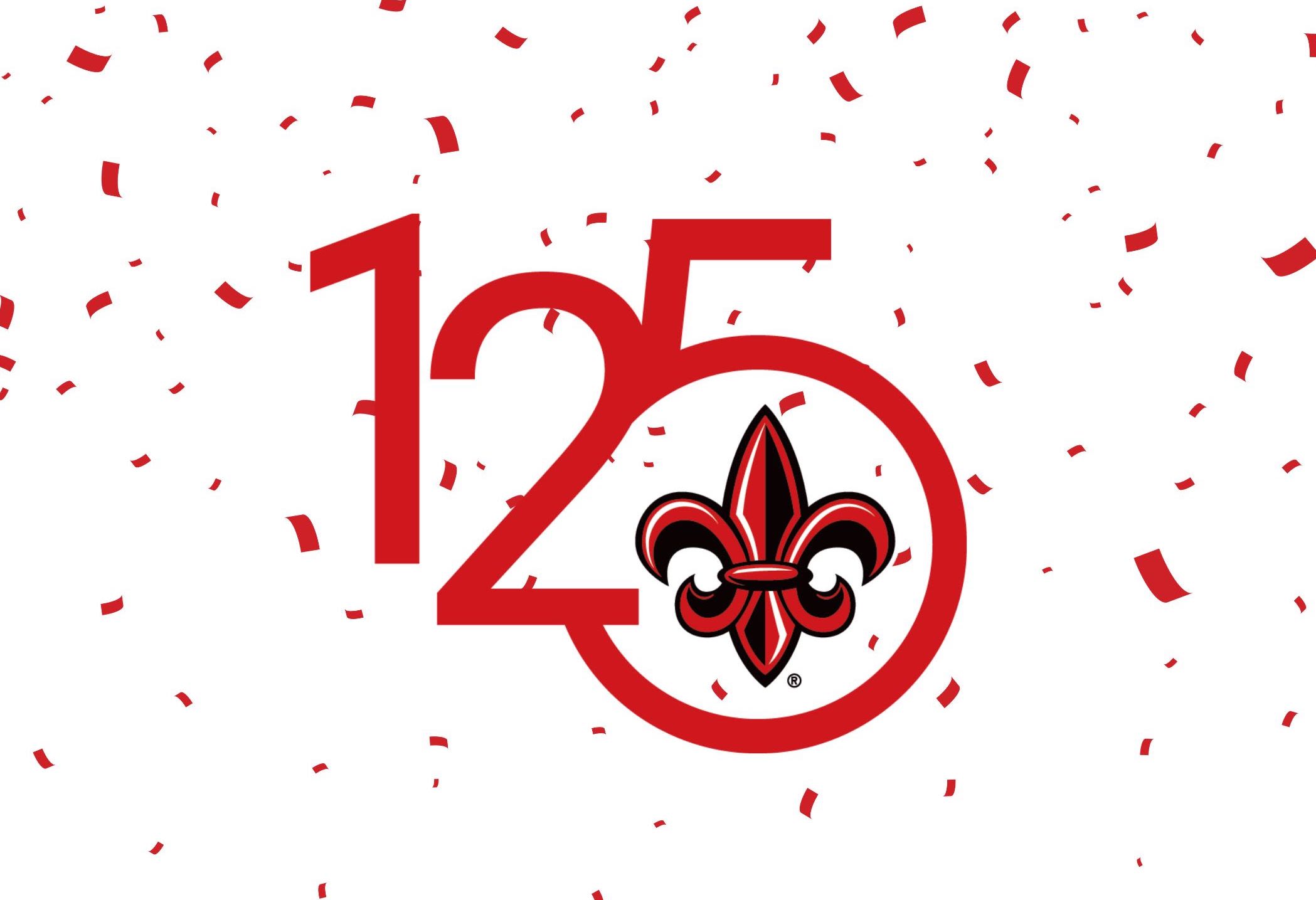
From the day of its founding, the University of Louisiana at Lafayette represented a belief in what was possible. Now 125 years later, we’re celebrating what we’ve accomplished — and anticipating the continued success that lies ahead.
This anniversary also marks an opportunity to honor the enduring connection we have to an institution that has given each of us — and this community — so much for so long.
Every “first” is a tribute to individuals who dedicated their lives to making a difference. Each milestone represents the impact of their vision on the state of Louisiana and beyond. Our history unites us with those who came before us and connects us to those who will carry our mission of service beyond our 125th year.
SERVICE. VISION. LEADERSHIP. LOUISIANA.
Design: Courtney Jeffries | Digital Production: Marie Elizabeth Oliver
Photography: UL Lafayette Special Collections, Doug Dugas, Philip Gould, Danny Izzo
1898
The Louisiana General Assembly adopted Act 162, creating SOUTHWESTERN LOUISIANA INDUSTRIAL INSTITUTE.
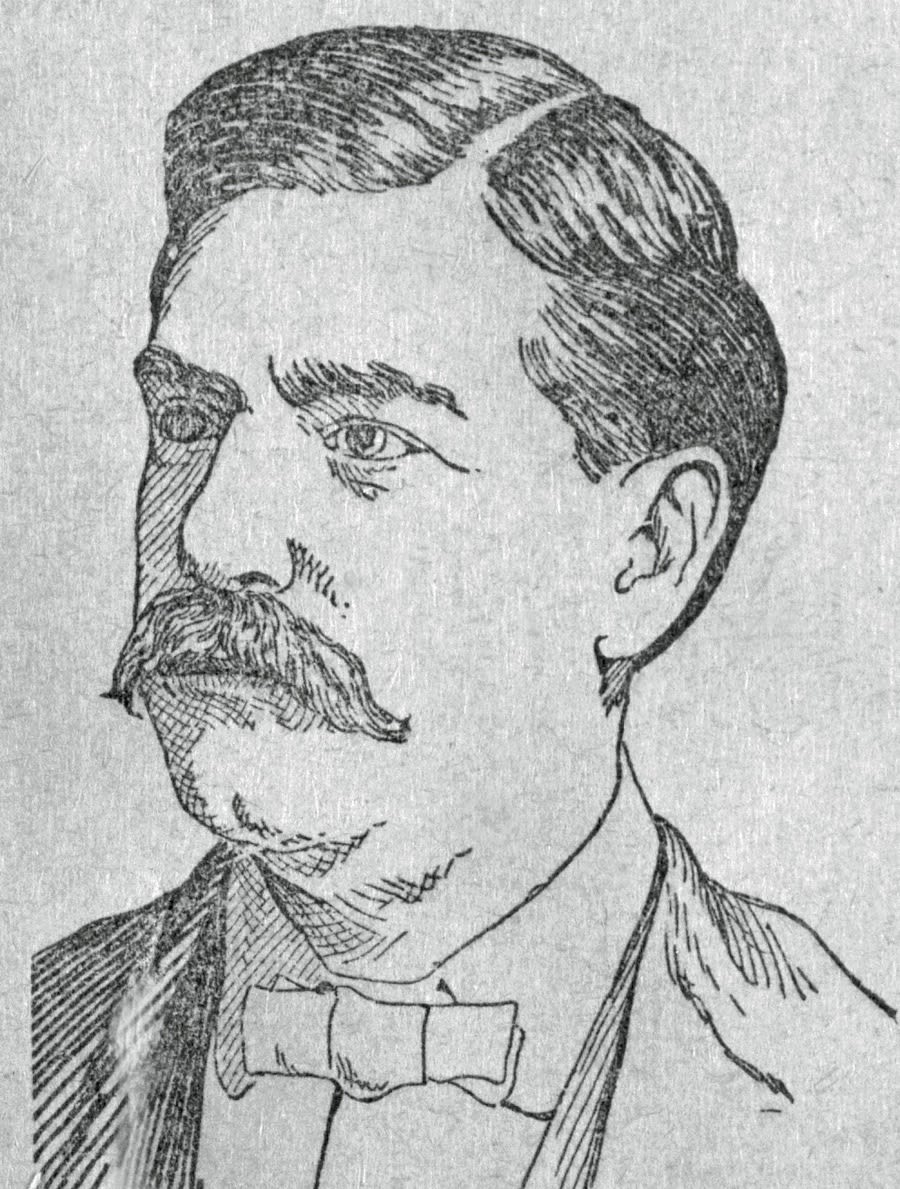
Sen. Robert Martin introduced legislation that created SLII.
Sen. Robert Martin introduced legislation that created SLII.
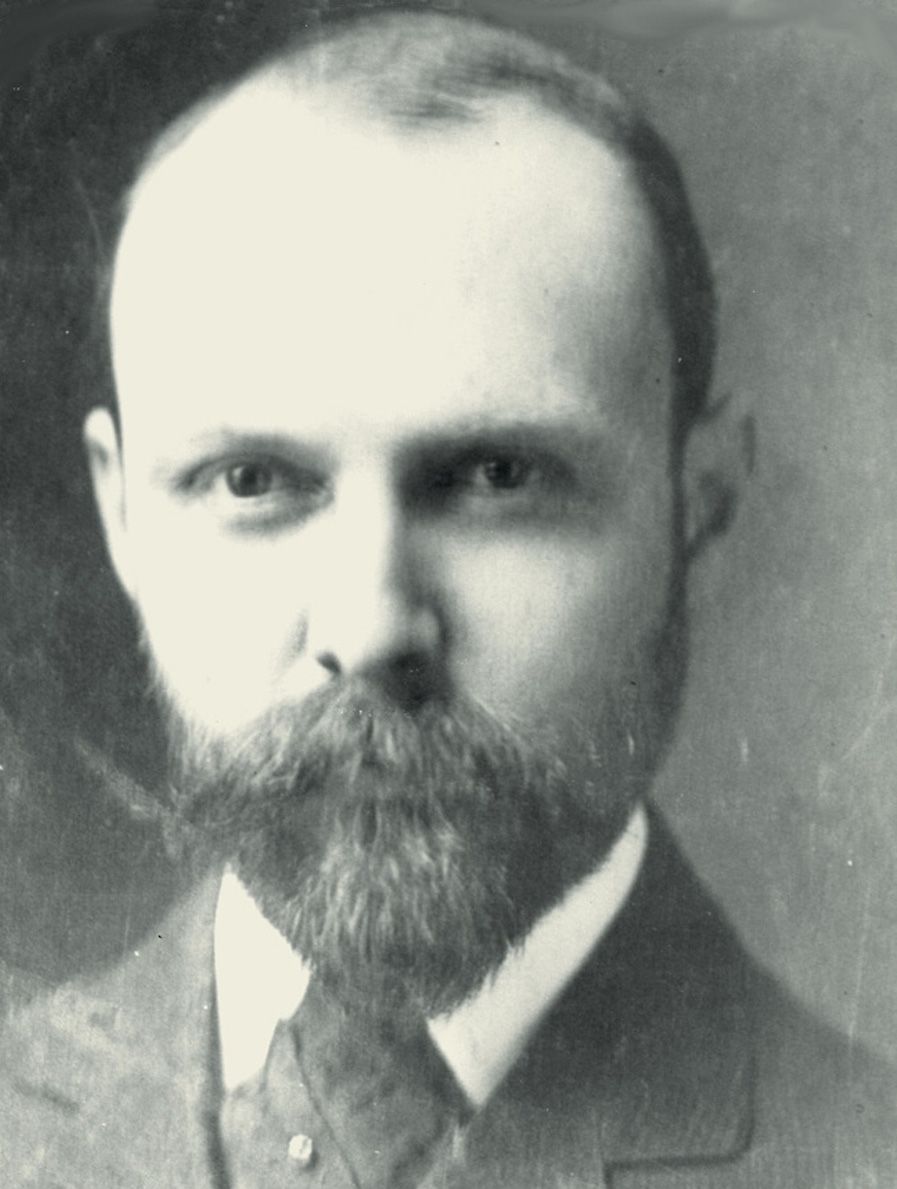
Dr. Edwin Stephens, first president of SLII. He served for 38 years.
Dr. Edwin Stephens, first president of SLII. He served for 38 years.
"WE ARE NOT TO THINK OF THE INDUSTRIAL SCHOOL AS A TEMPORARY THING, FOR IT IS NOT. IT IS AN INSTITUTION FOR ALL TIME. A hundred years from now, it will be amongst our descendants, a hundred times more efficient. Its influence will have spread, and the parish of Lafayette will point with pride to the school, and honor the memory of those whose public spirit has built it."
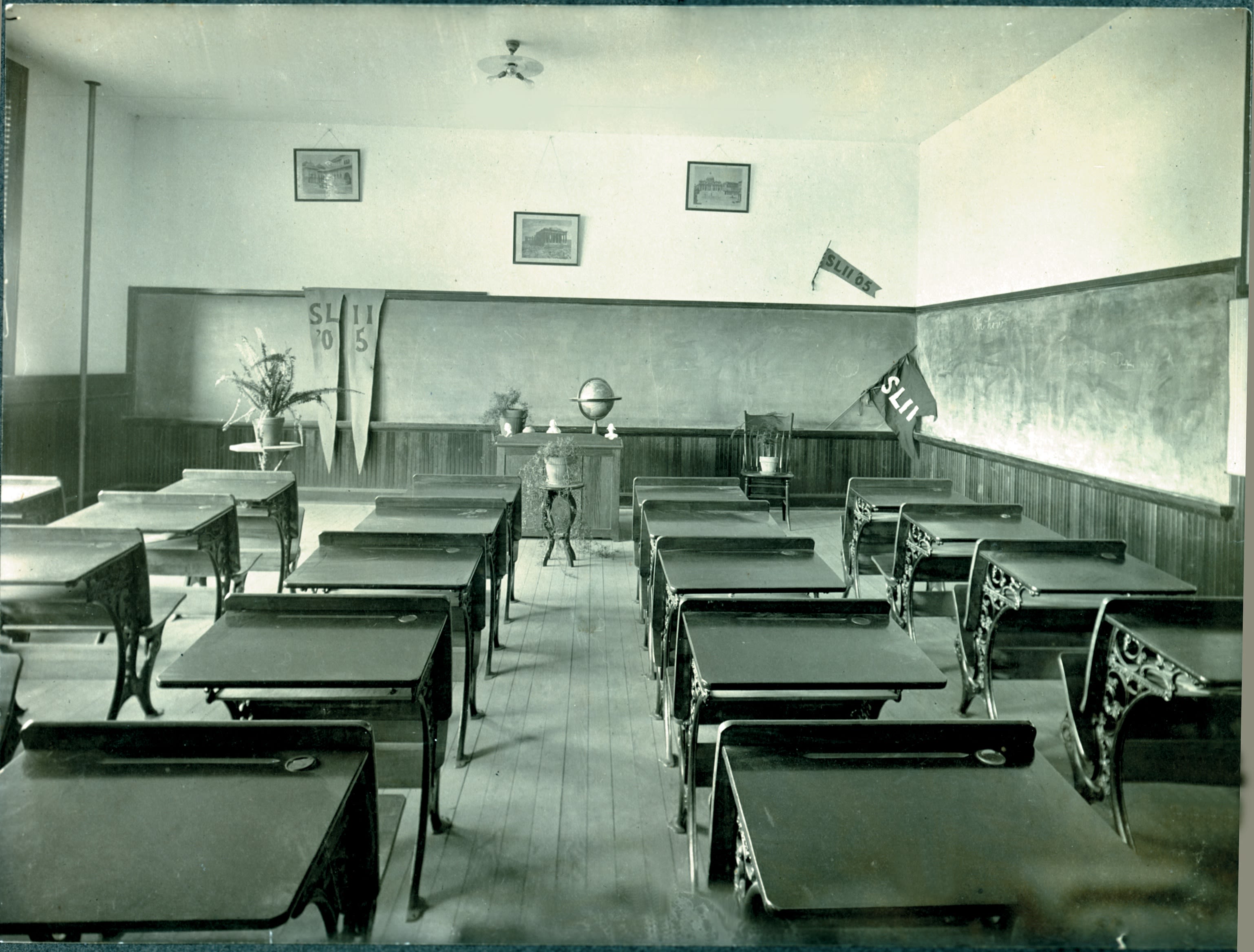
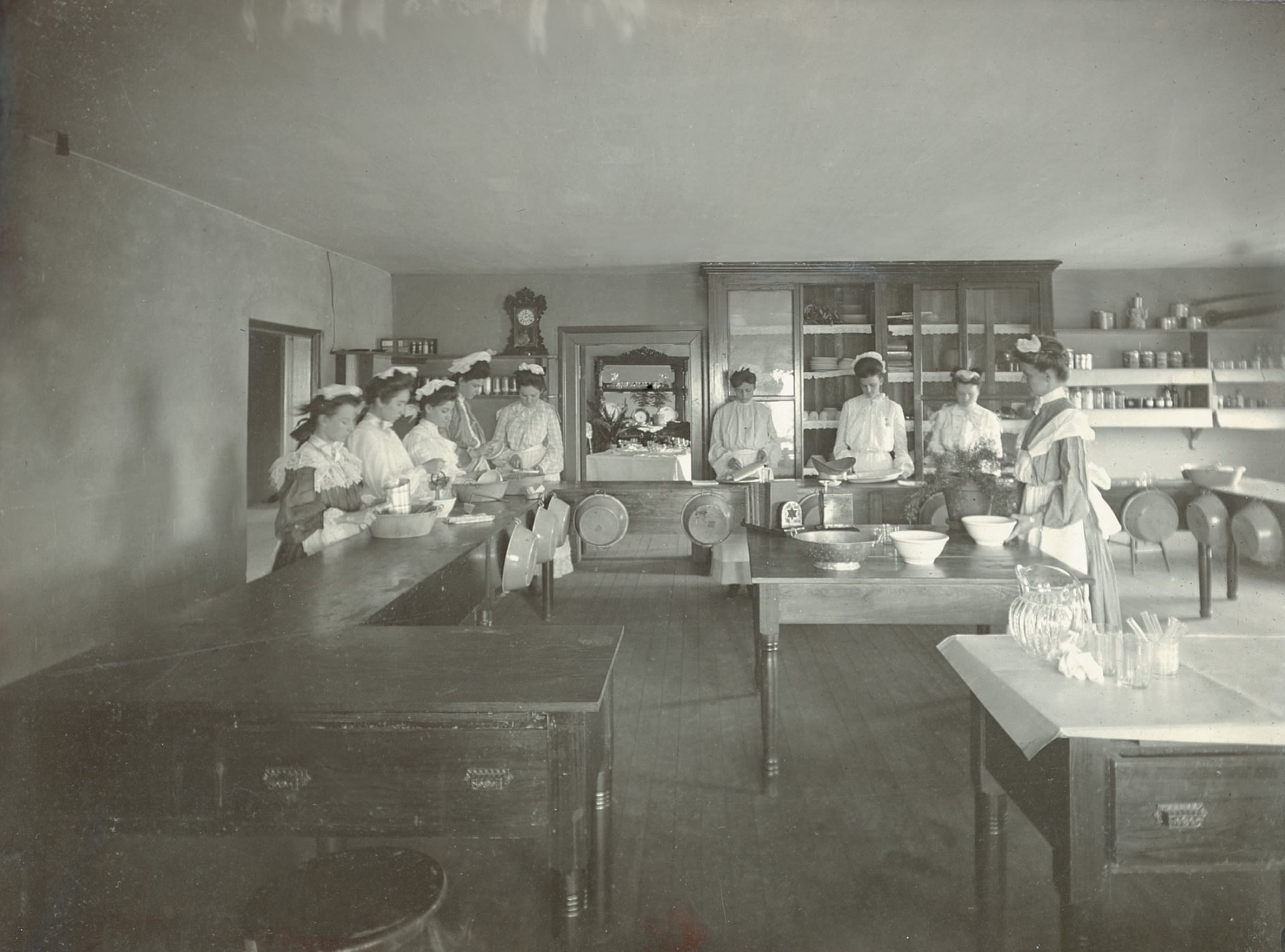
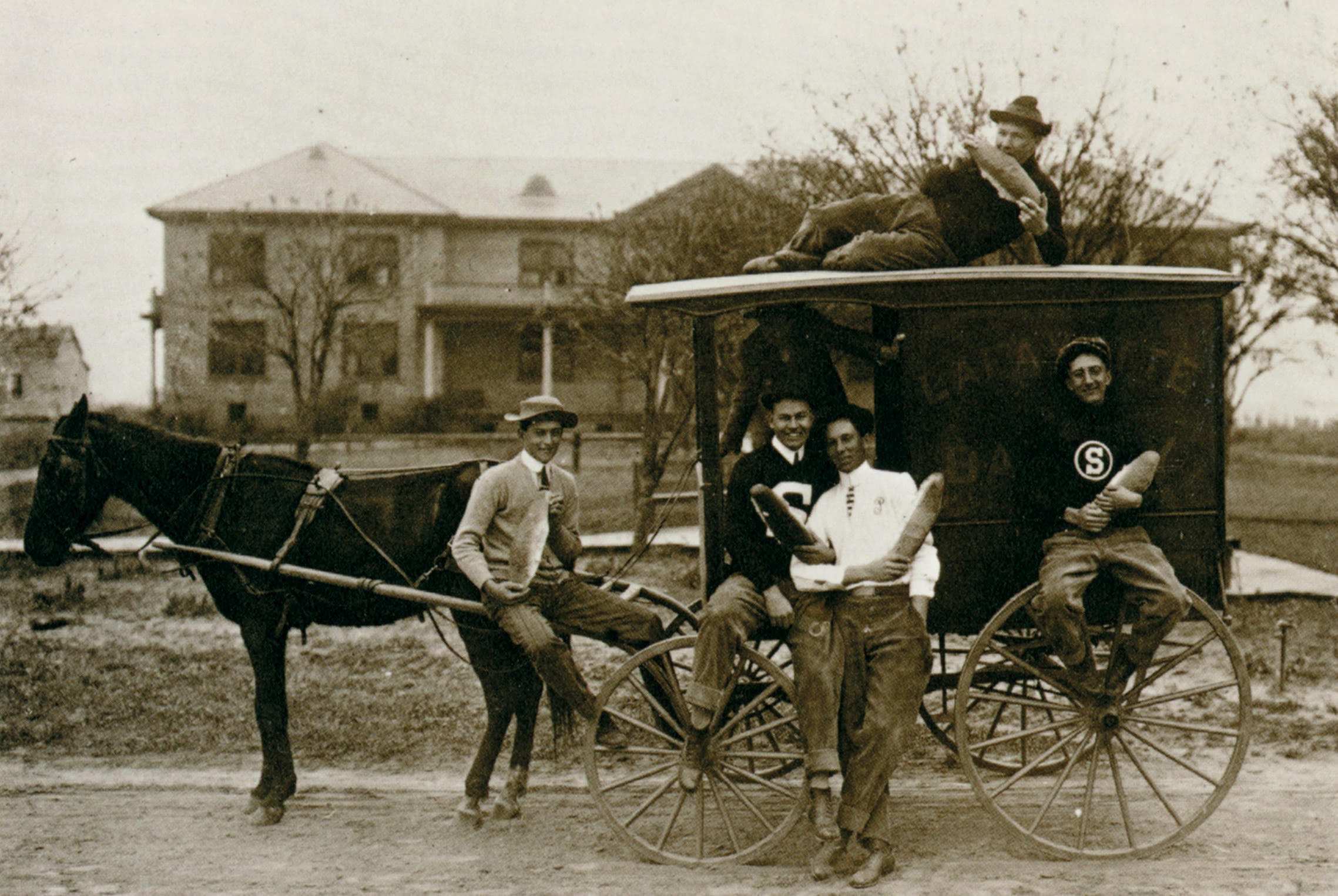
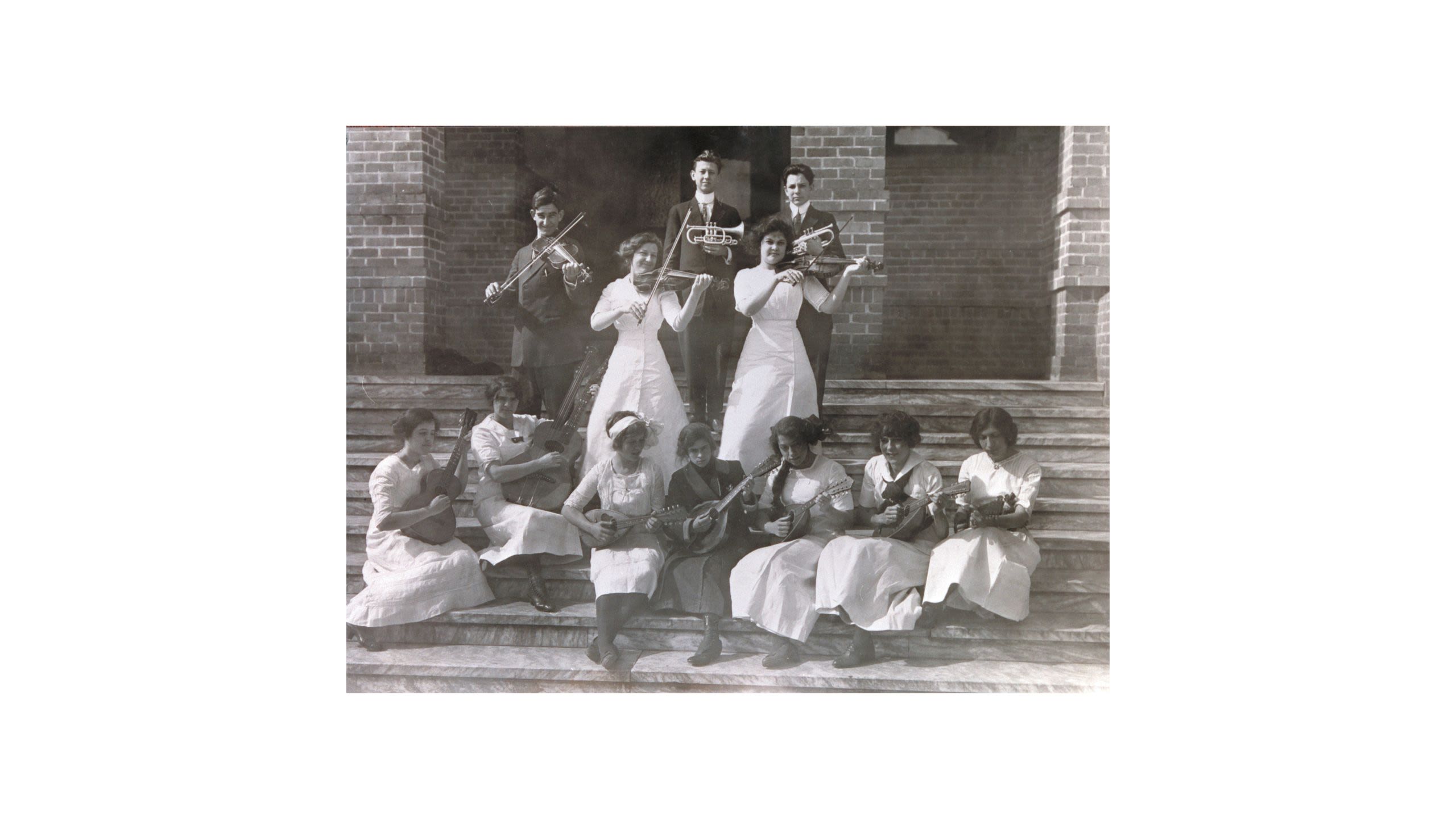
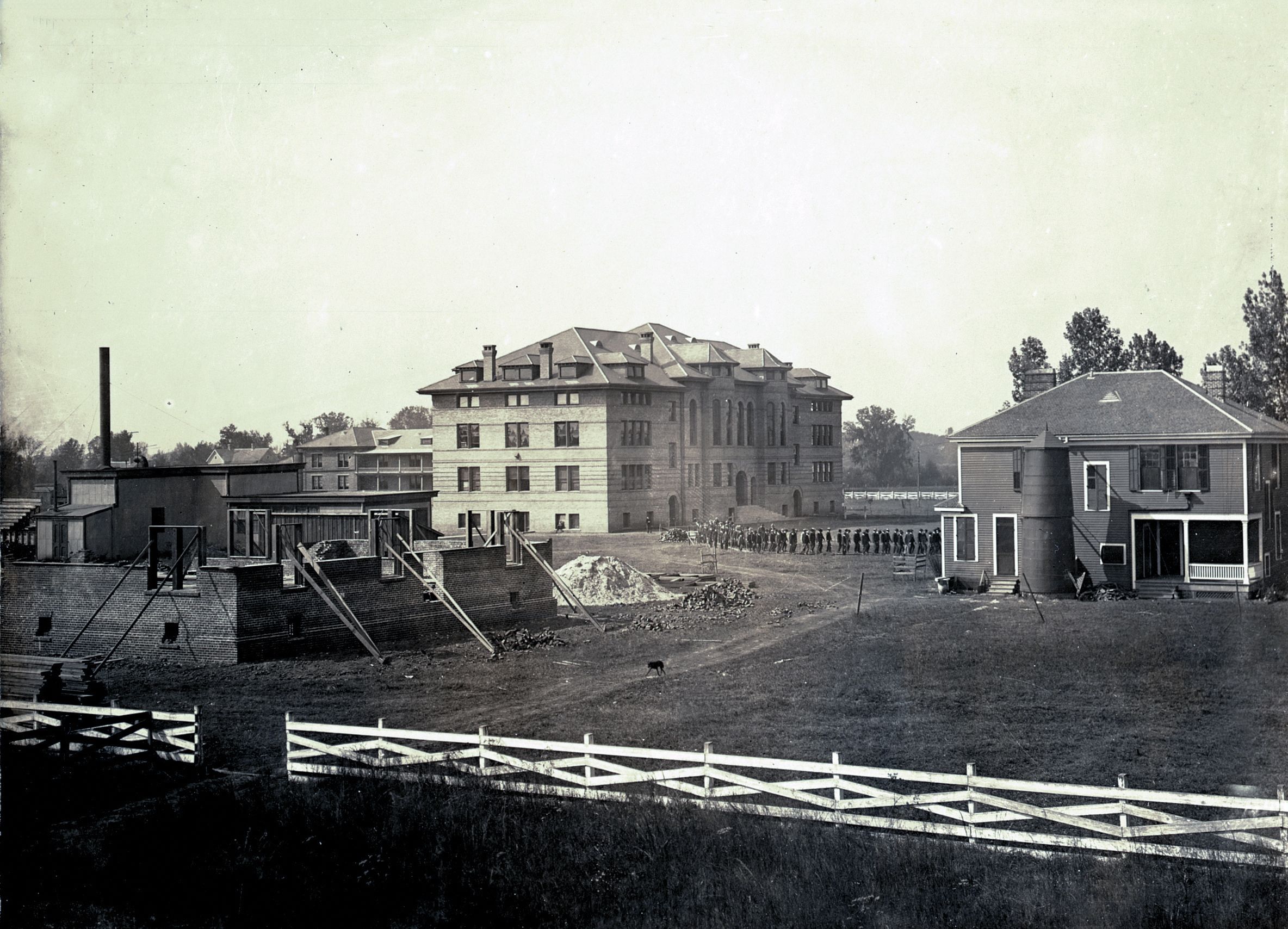
One of the first six classrooms
A 1901 cooking class
The Bread Club, 1913
A 1912 music ensemble
Early Construction
“...when I was coming to school, a good deal of us rode down on horses or in buggies. We just hitched the mare outside a building and went on inside while the horse waited for class to be dismissed.” —Harold Demanade, a member of SLII's first graduating class
DeClouet Hall was under construction in 1903. The Main Building, later named Martin Hall, is in the background.

Main Hall (later named Martin Hall)
Main Hall (later named Martin Hall)
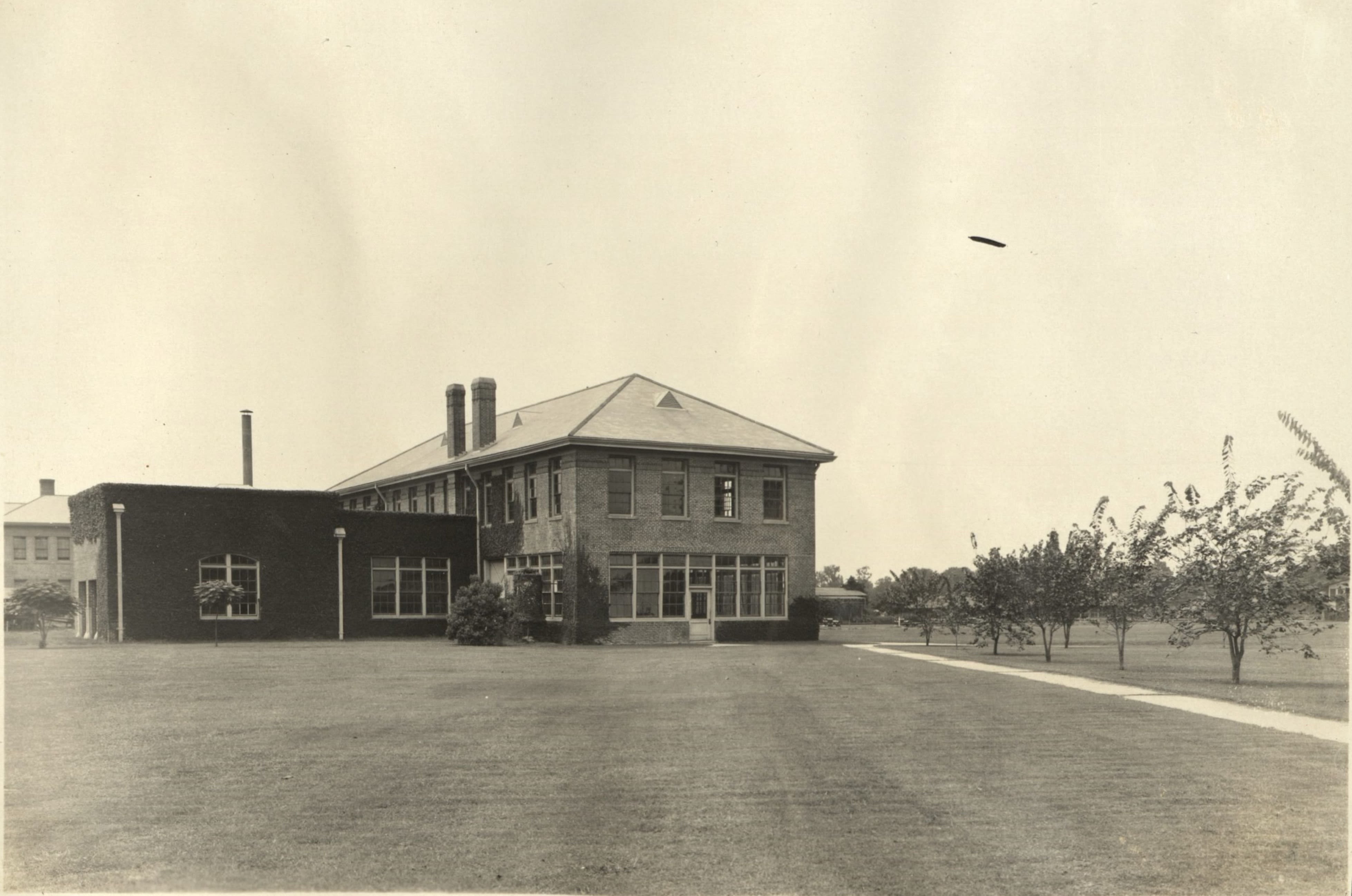
Brown Ayres Hall
Brown Ayres Hall
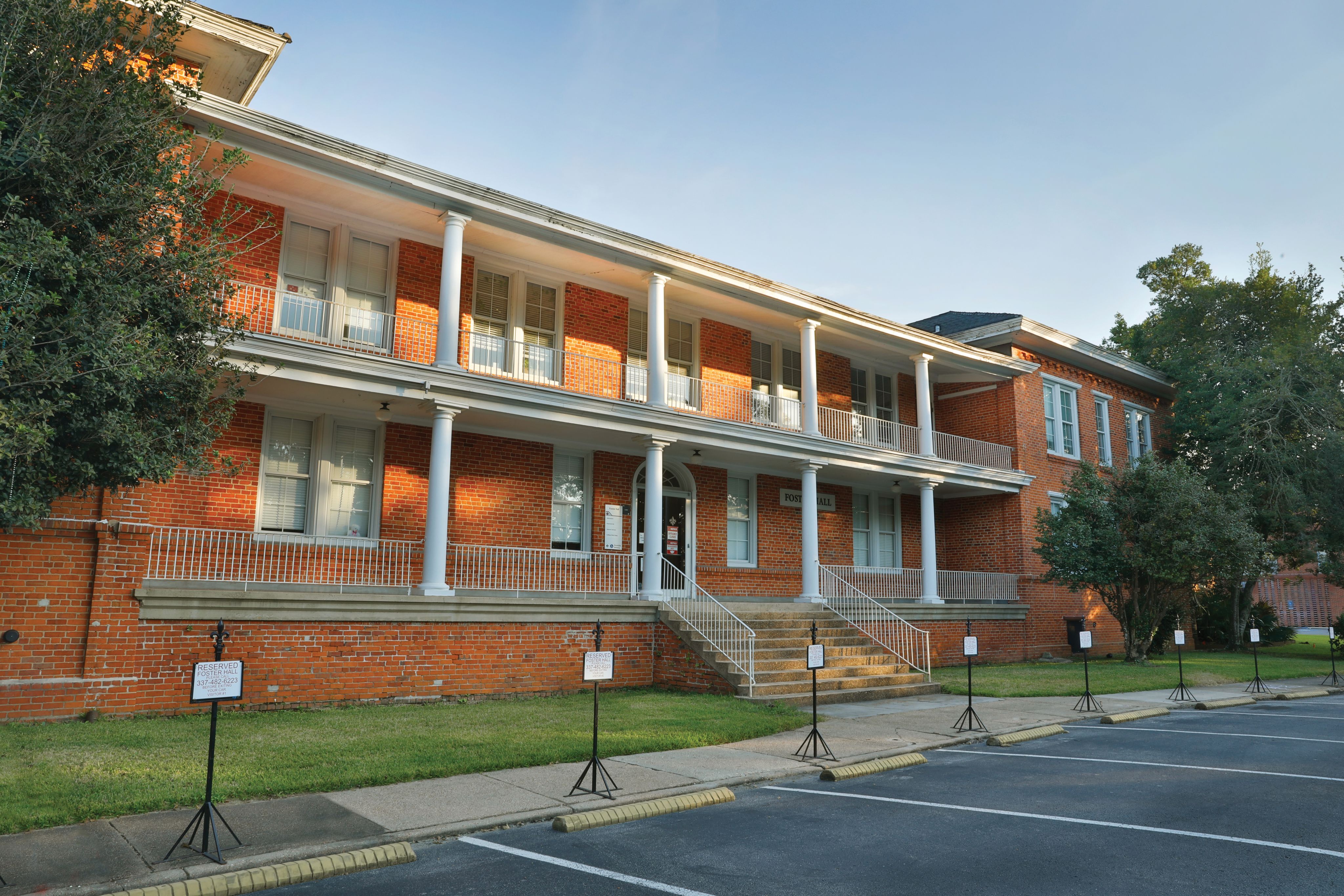
Foster Hall
Foster Hall
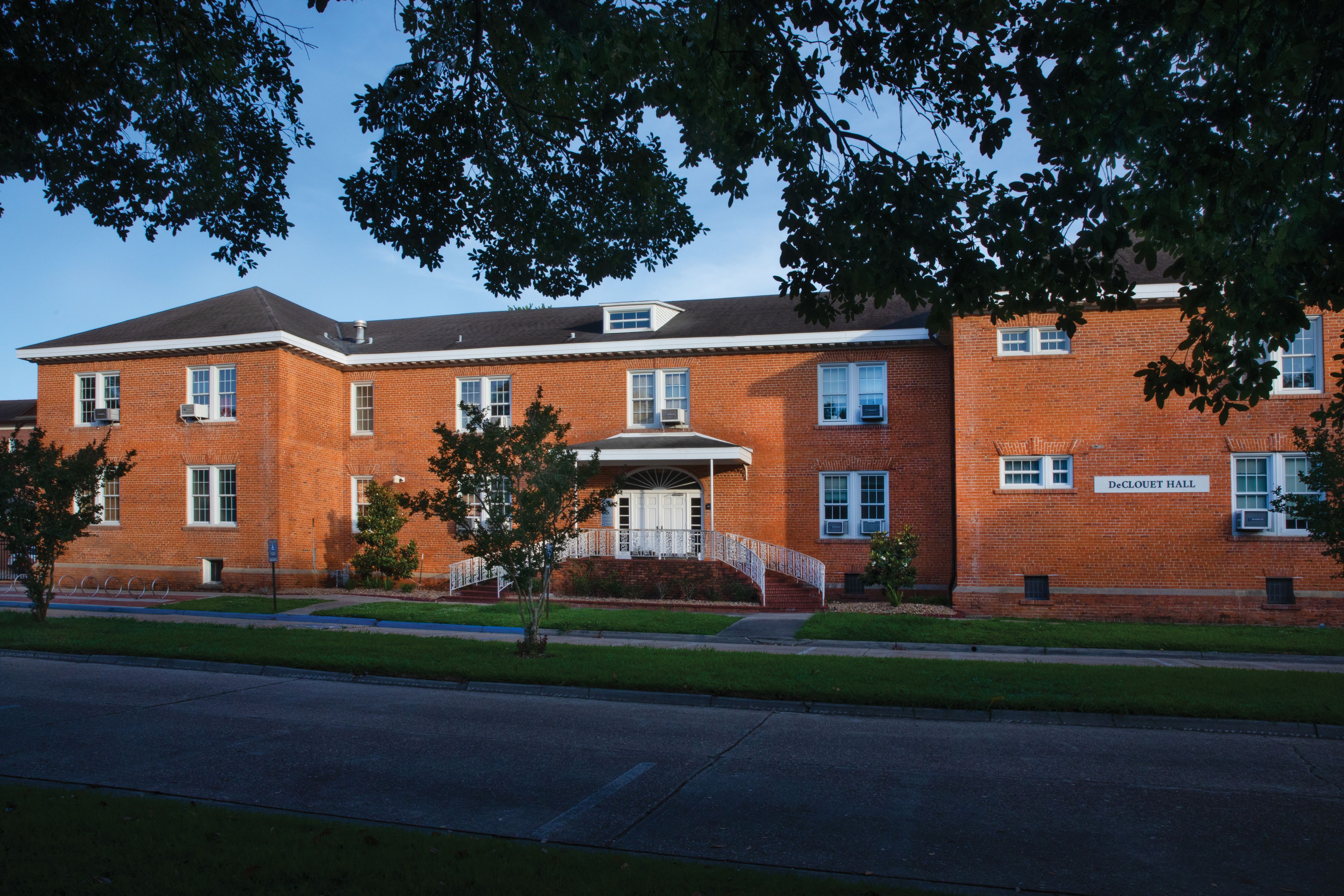
DeClouet Hall
DeClouet Hall
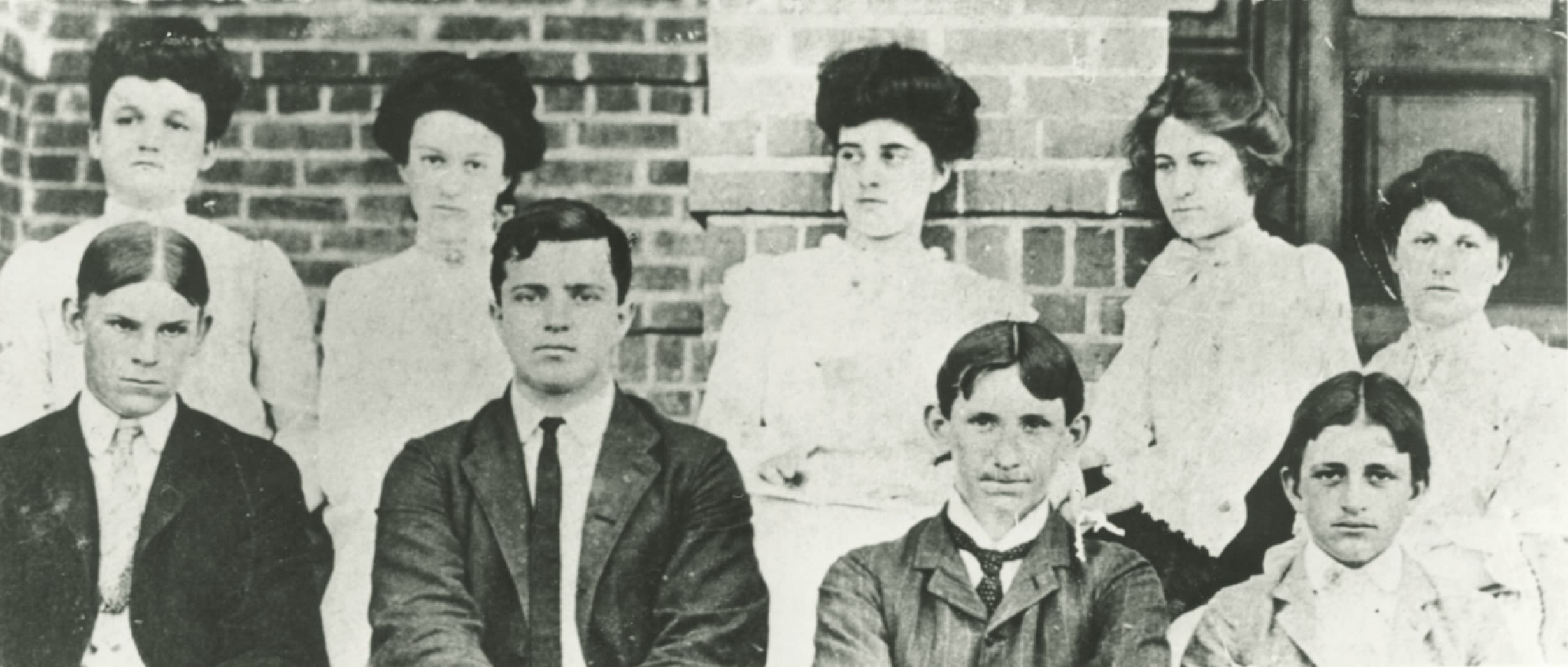
Shown are nine of the 18 members of Southwestern Louisiana Industrial Institute's first graduating class.
Shown are nine of the 18 members of Southwestern Louisiana Industrial Institute's first graduating class.
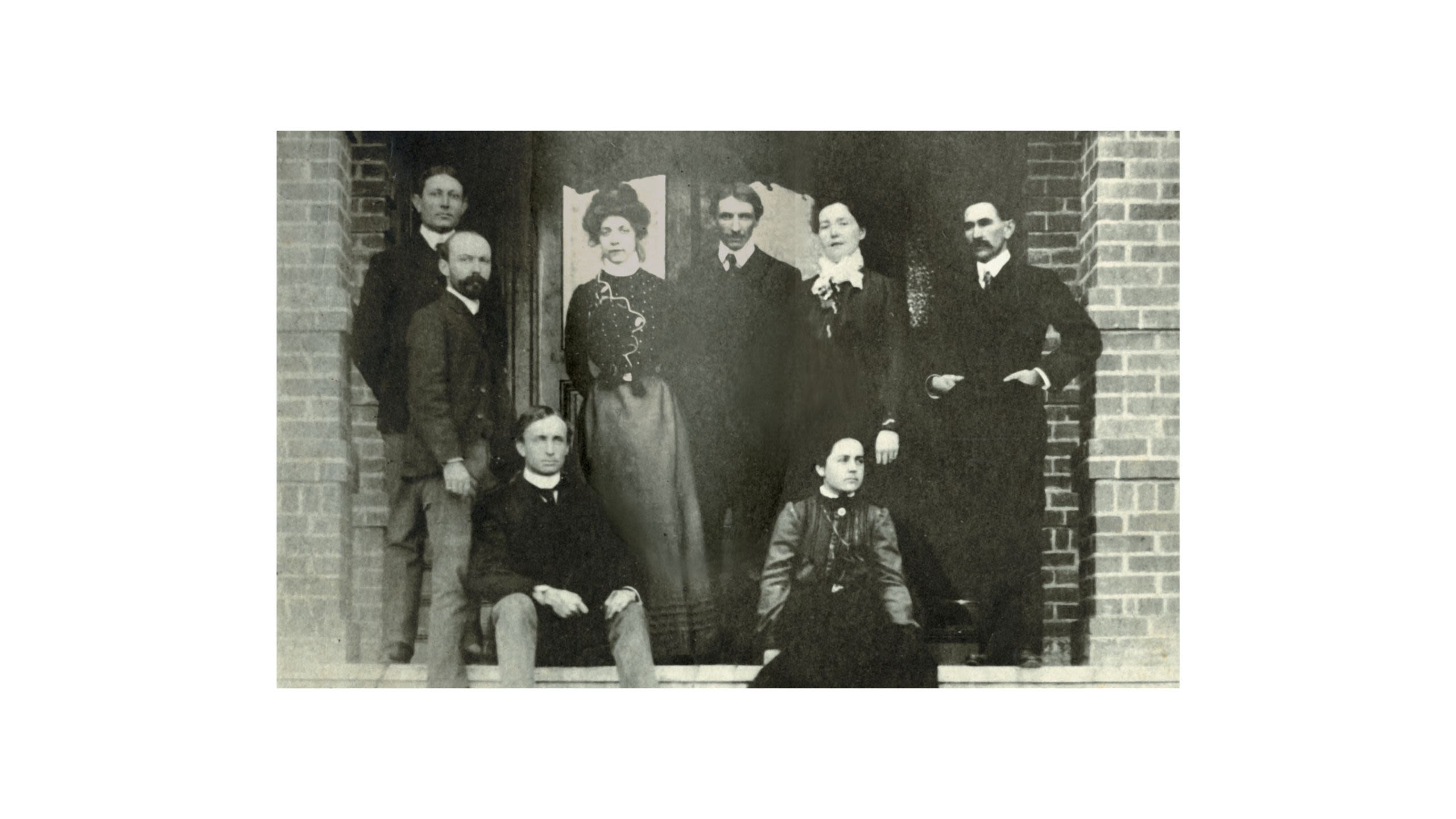
Southwestern Louisiana Industrial Institute had eight faculty members for its first session in 1901. From left, top row: Florent Sontag, music; SLII President Edwin L. Stephens, mathematics; Beverly Randolph, drawing and gymnastics; Ashby Woodson, manual training; Gertrude Mayfield, domestic science; and V.L. Roy, science. From left, seated: L.W. Mayer, stenography, and Edith Garland Dupré, English and French.
Southwestern Louisiana Industrial Institute had eight faculty members for its first session in 1901. From left, top row: Florent Sontag, music; SLII President Edwin L. Stephens, mathematics; Beverly Randolph, drawing and gymnastics; Ashby Woodson, manual training; Gertrude Mayfield, domestic science; and V.L. Roy, science. From left, seated: L.W. Mayer, stenography, and Edith Garland Dupré, English and French.
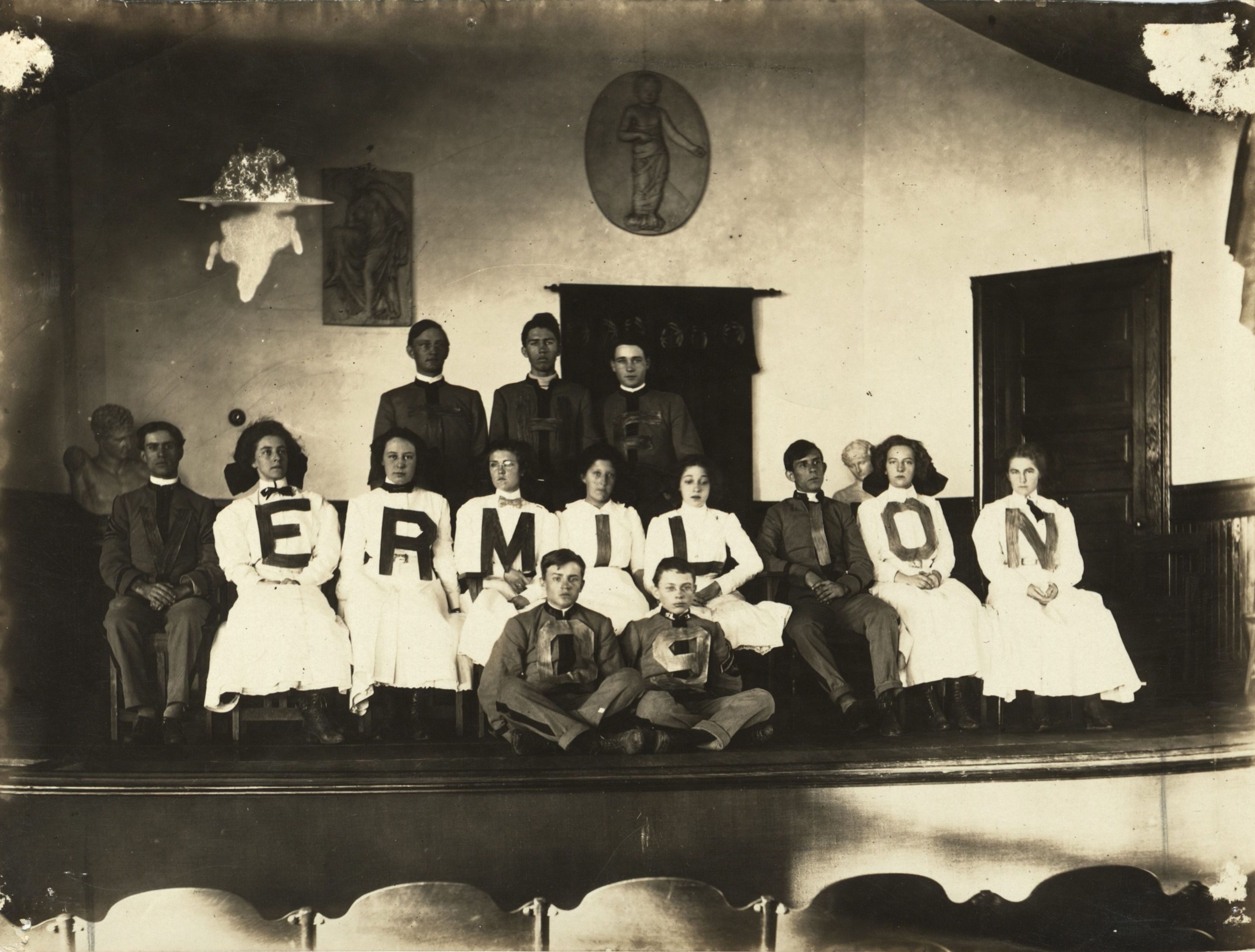
Members of The Vermilion, SLII's student newspaper, posed for a photo in 1909. The Vermilion began publishing in 1904.
Members of The Vermilion, SLII's student newspaper, posed for a photo in 1909. The Vermilion began publishing in 1904.
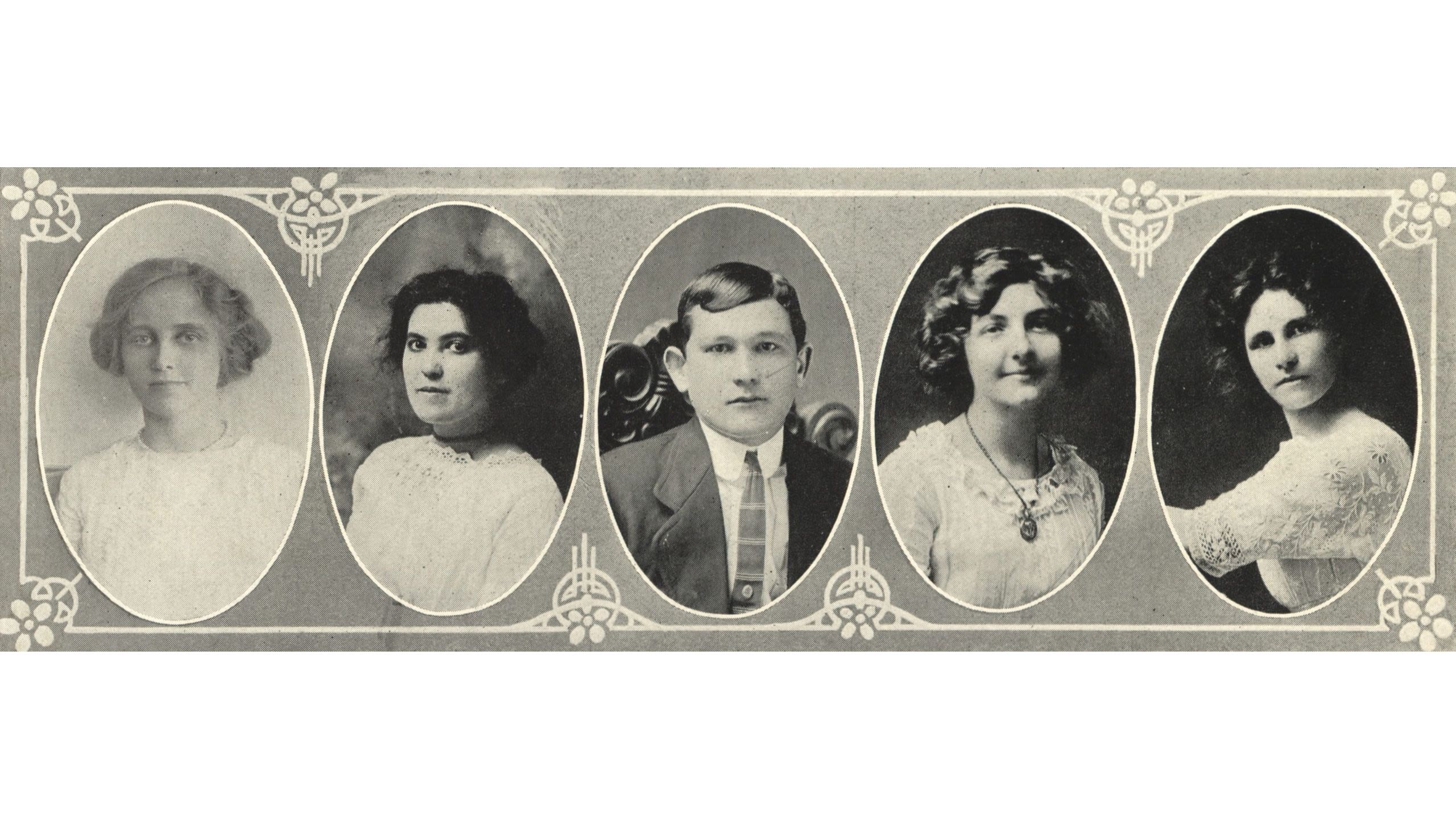
The first staff of L'Acadien, Dorothy Dunn Gagne, Laura Landrenau, Joseph Edward Lacour, Martha Pellerin and Hallie May Bibbins.
The first staff of L'Acadien, Dorothy Dunn Gagne, Laura Landrenau, Joseph Edward Lacour, Martha Pellerin and Hallie May Bibbins.
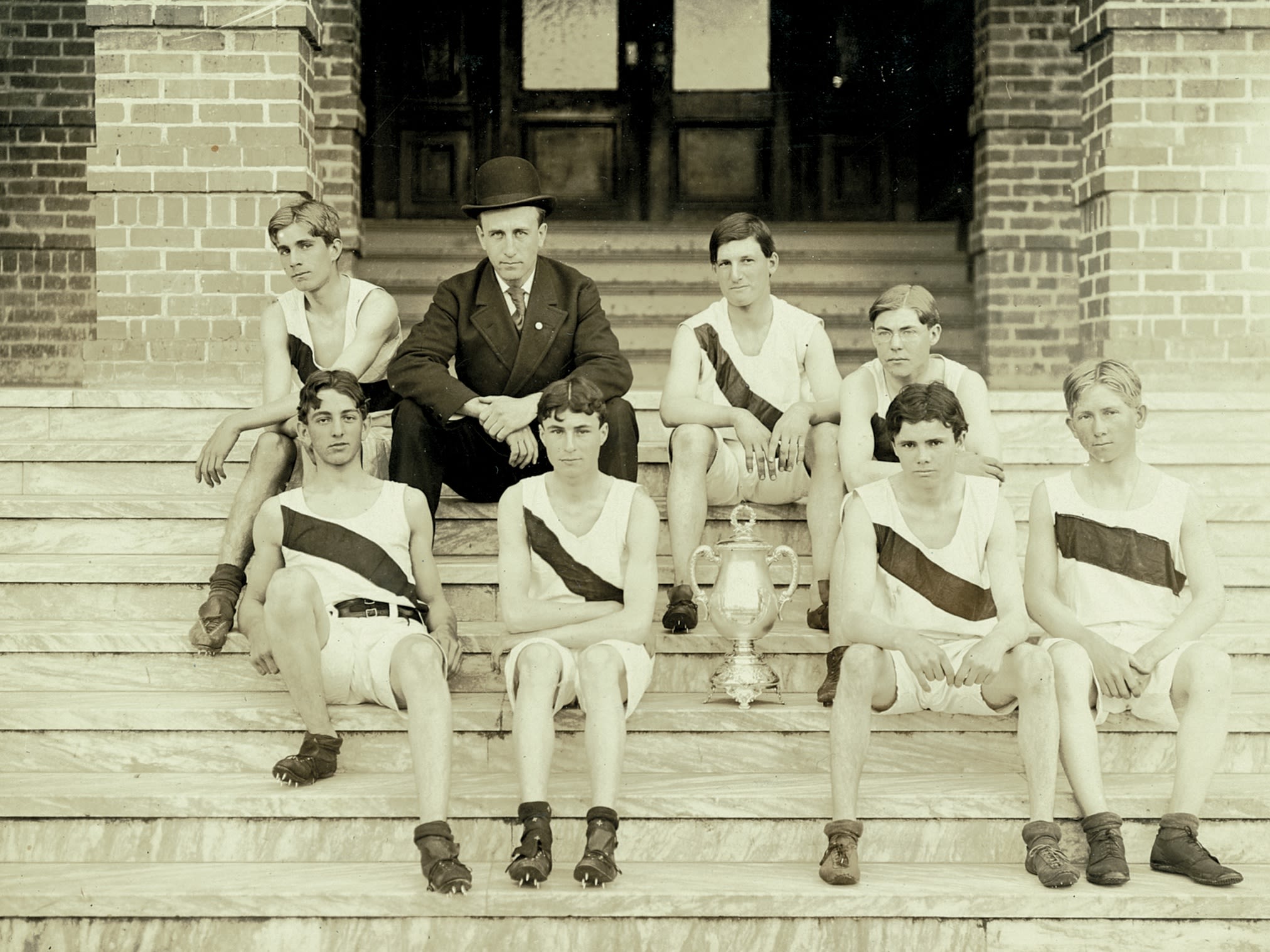
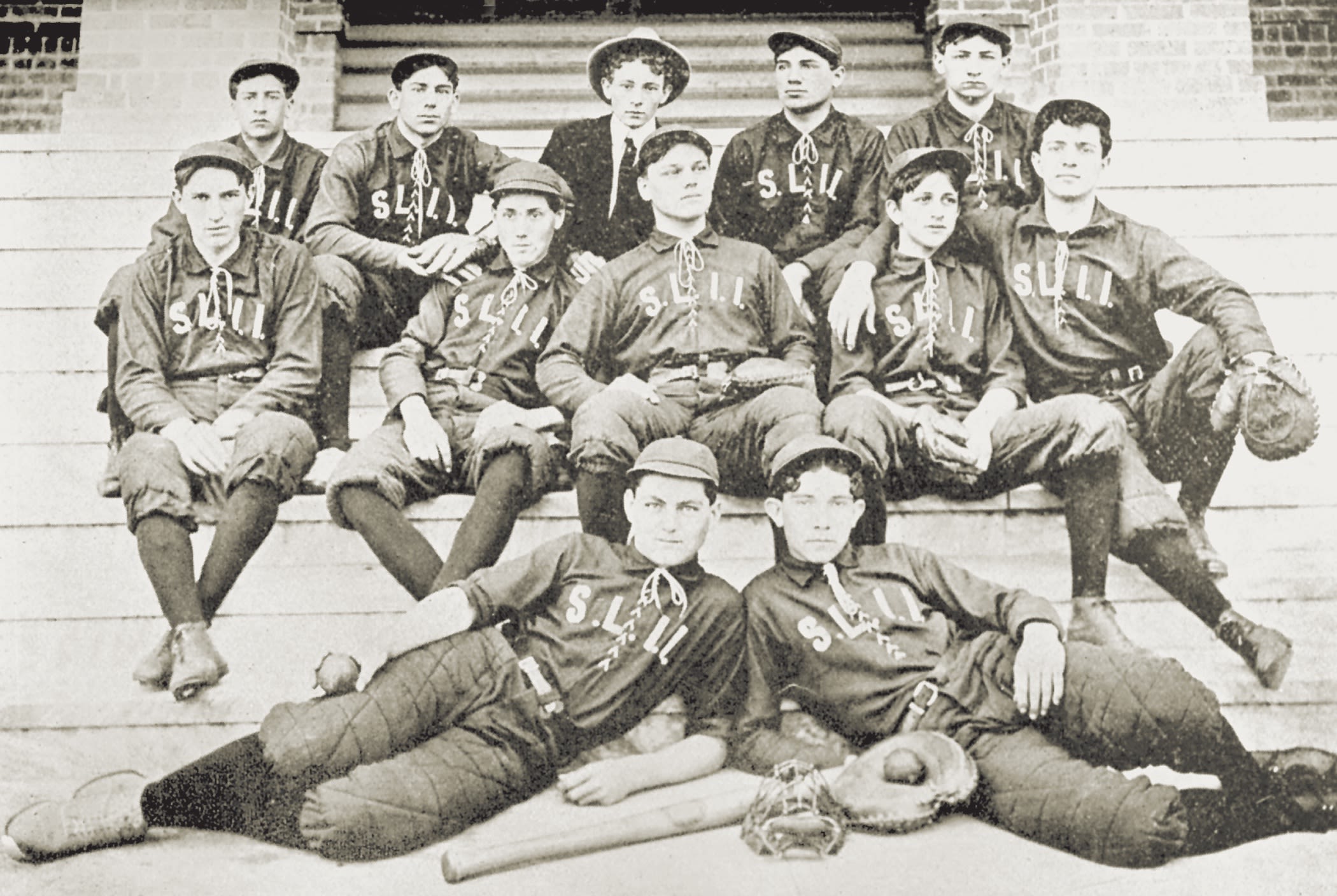
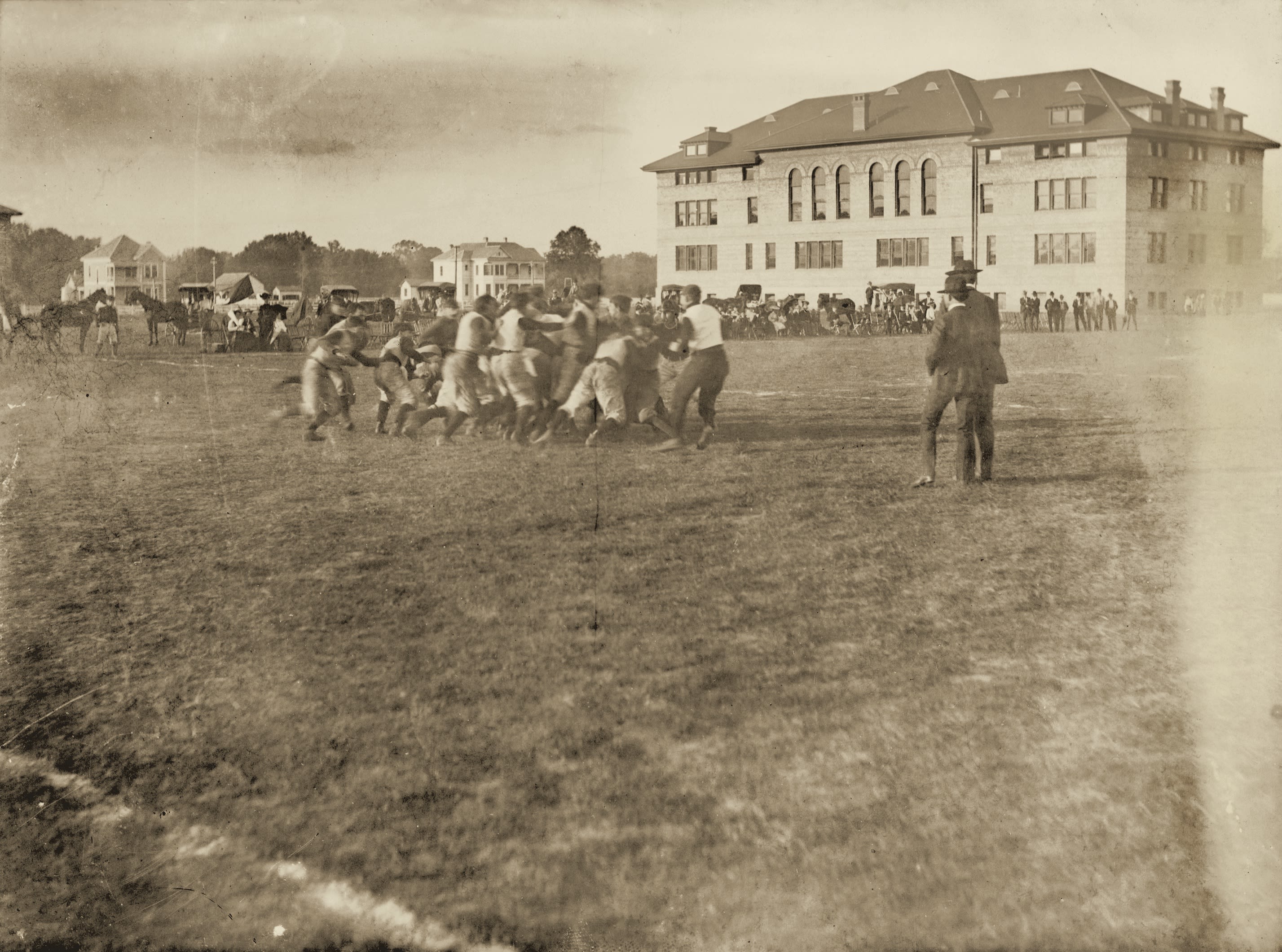
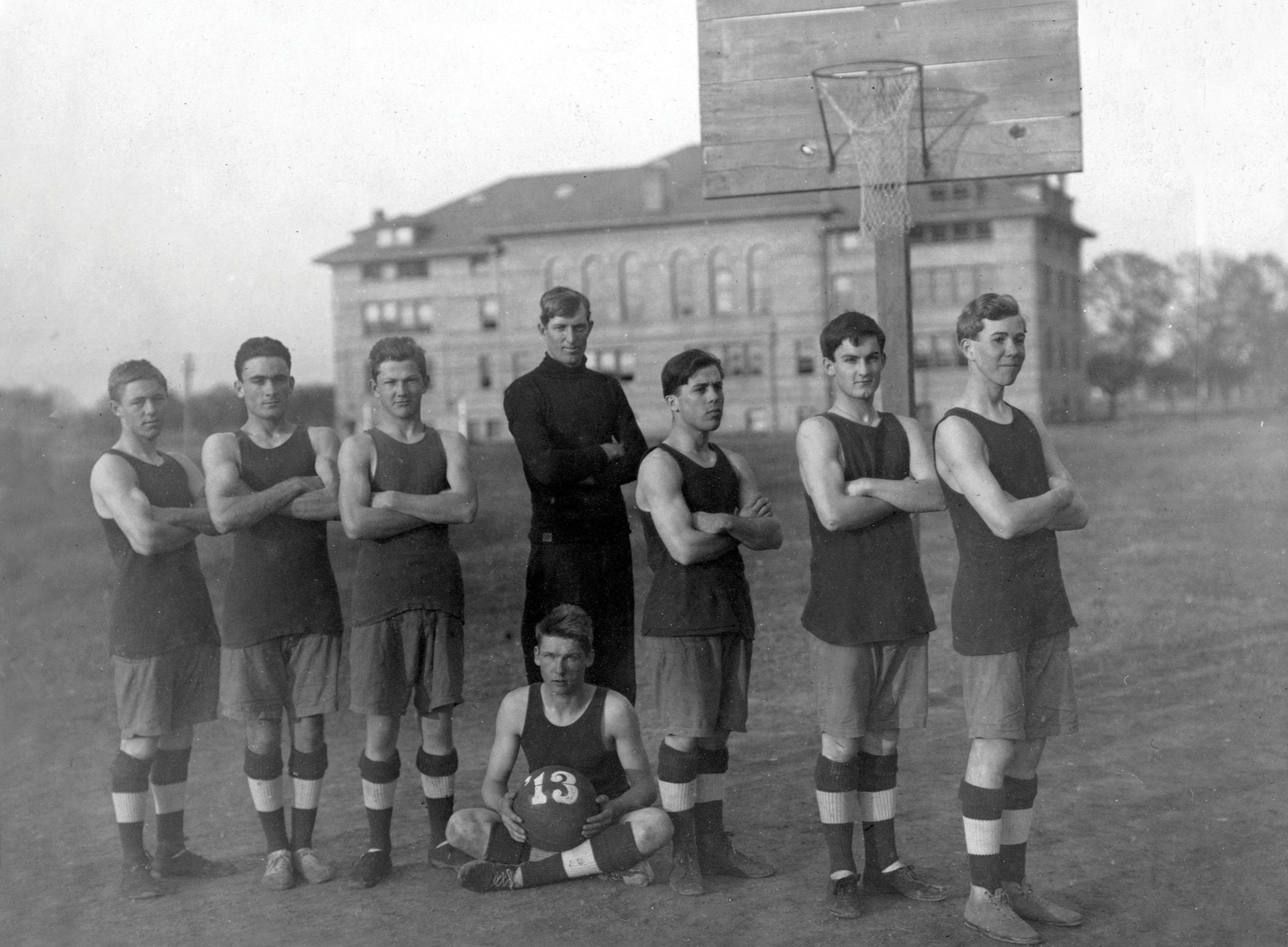
Athletics 1901-1903
SLII's first track team was formed in 1901.
In 1903, SLII organized the Institute Athletic Association.
SLII's first baseball team, 1903
SLII's football team, 1903
SLII's basketball team, 1913
1921
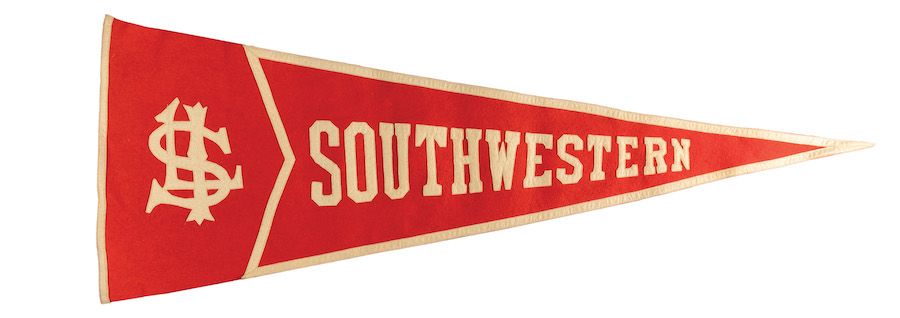
The Louisiana Constitution designated the school as one of the state's institutions of higher education and changed its name to SOUTHWESTERN LOUISIANA INSTITUTE OF LIBERAL AND TECHNICAL LEARNING.
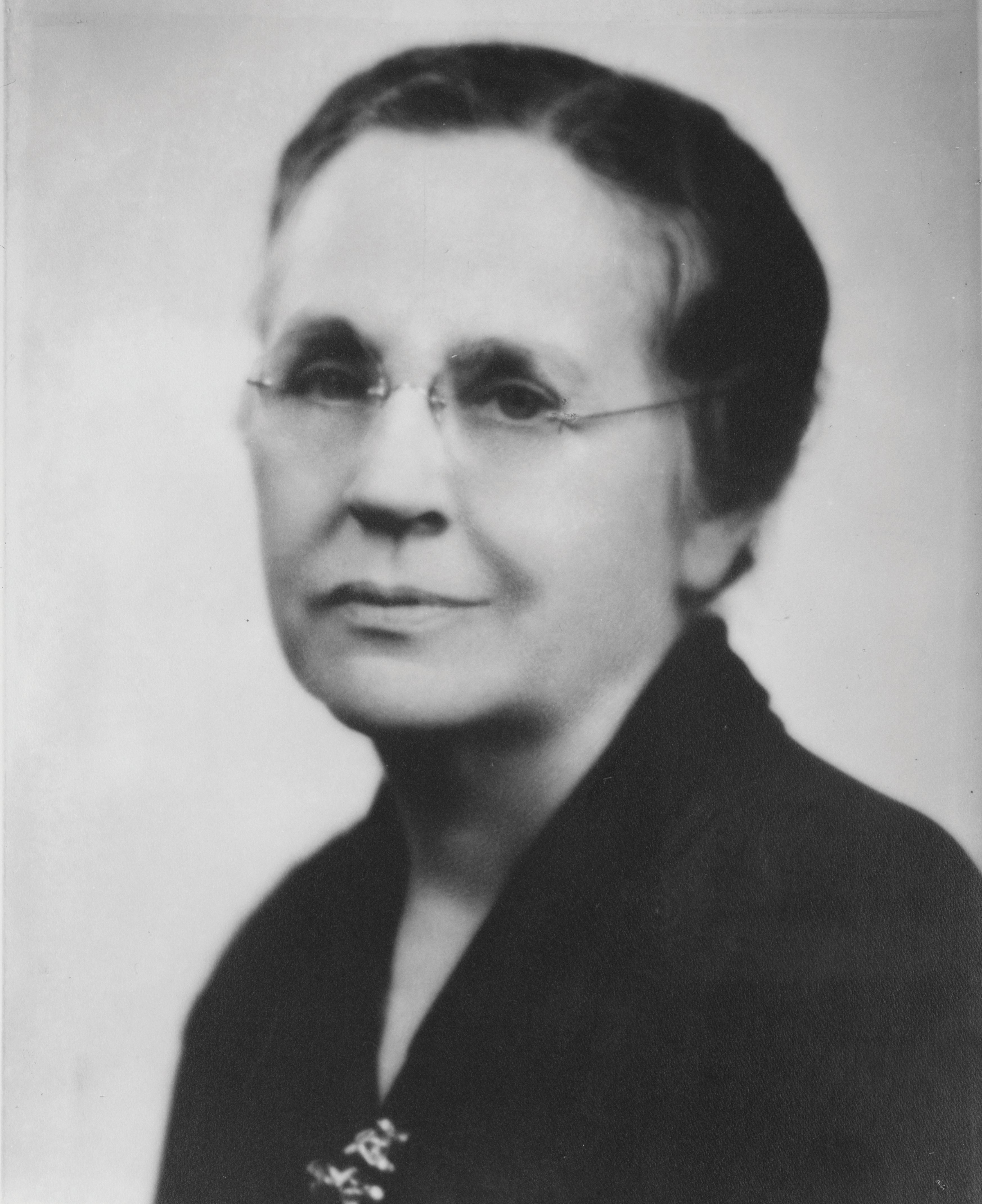
Edith Garland Dupré
Edith Garland Dupré
"If I were asked today to name the three constant principles that have shaped the destiny of this college, I should say in ringing words — LOFTINESS OF ASPIRATION, HONESTY OF PURPOSE AND GENEROSITY OF COMRADESHIP."
1925
President Edwin L. Stephens designed a seal to commemorate accreditation of Southwestern Louisiana Institute as a four-year college. The emblem was adopted May 11, 1926. The shield is indicative of faith and valor. Within the circle, there is a wreath of live oaks, beloved by Dr. Stephens. The Latin adverbs are 'Bravely, Happily, Faithfully.'
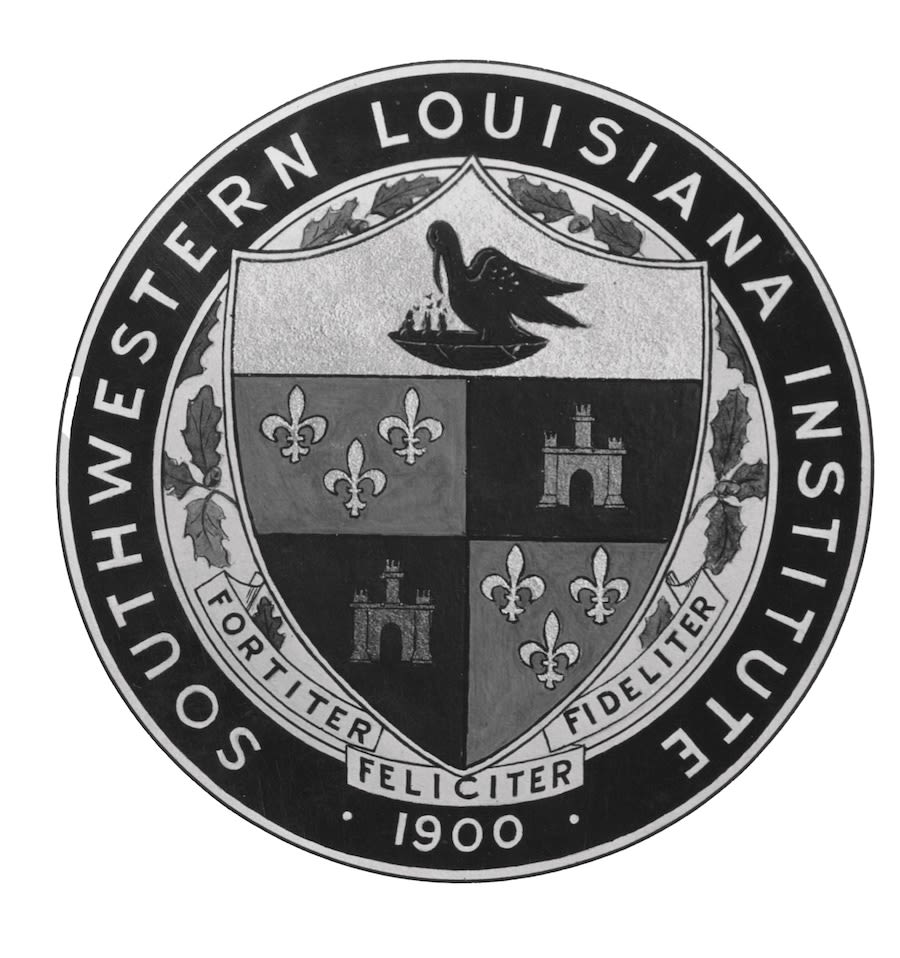
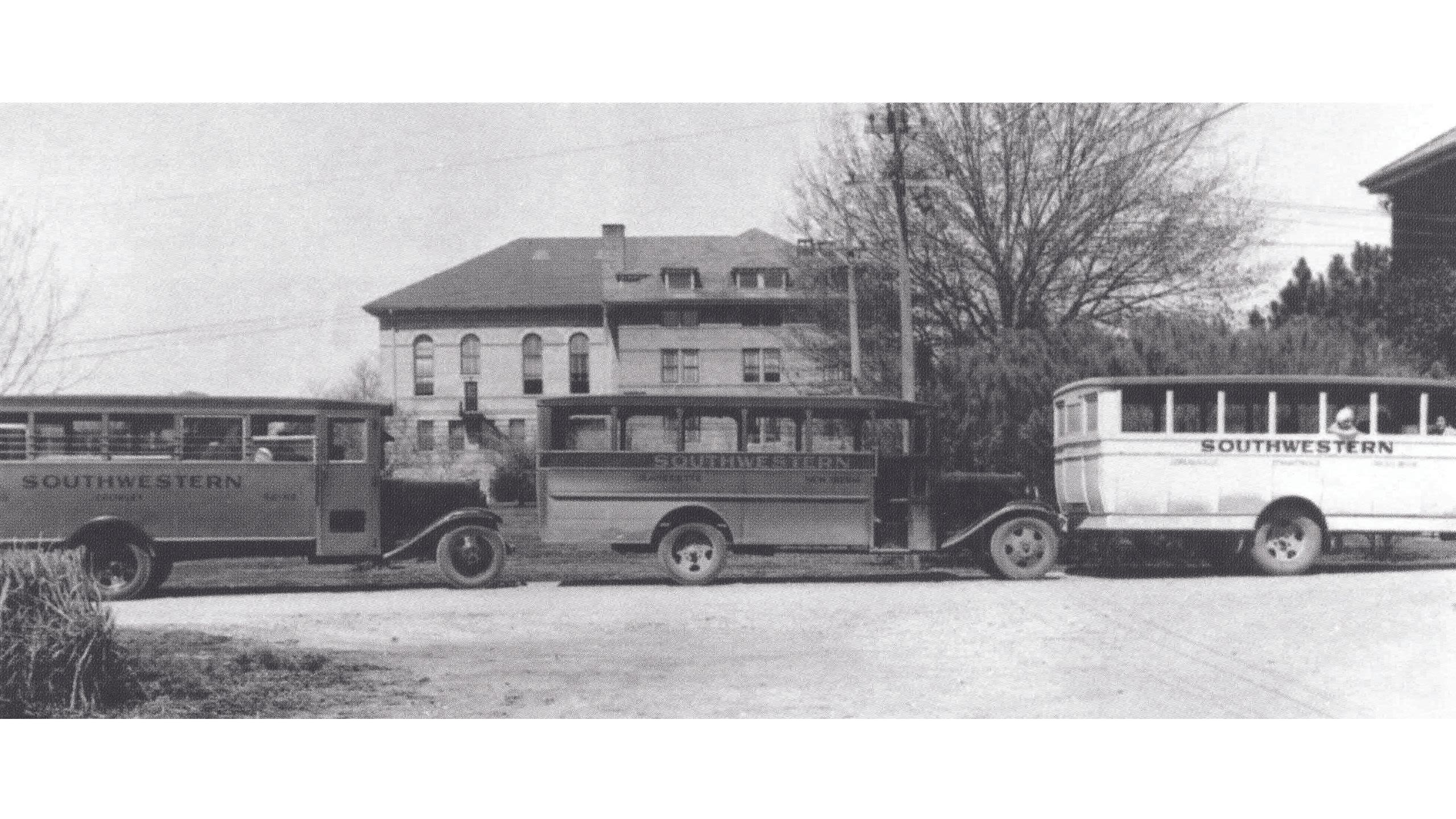
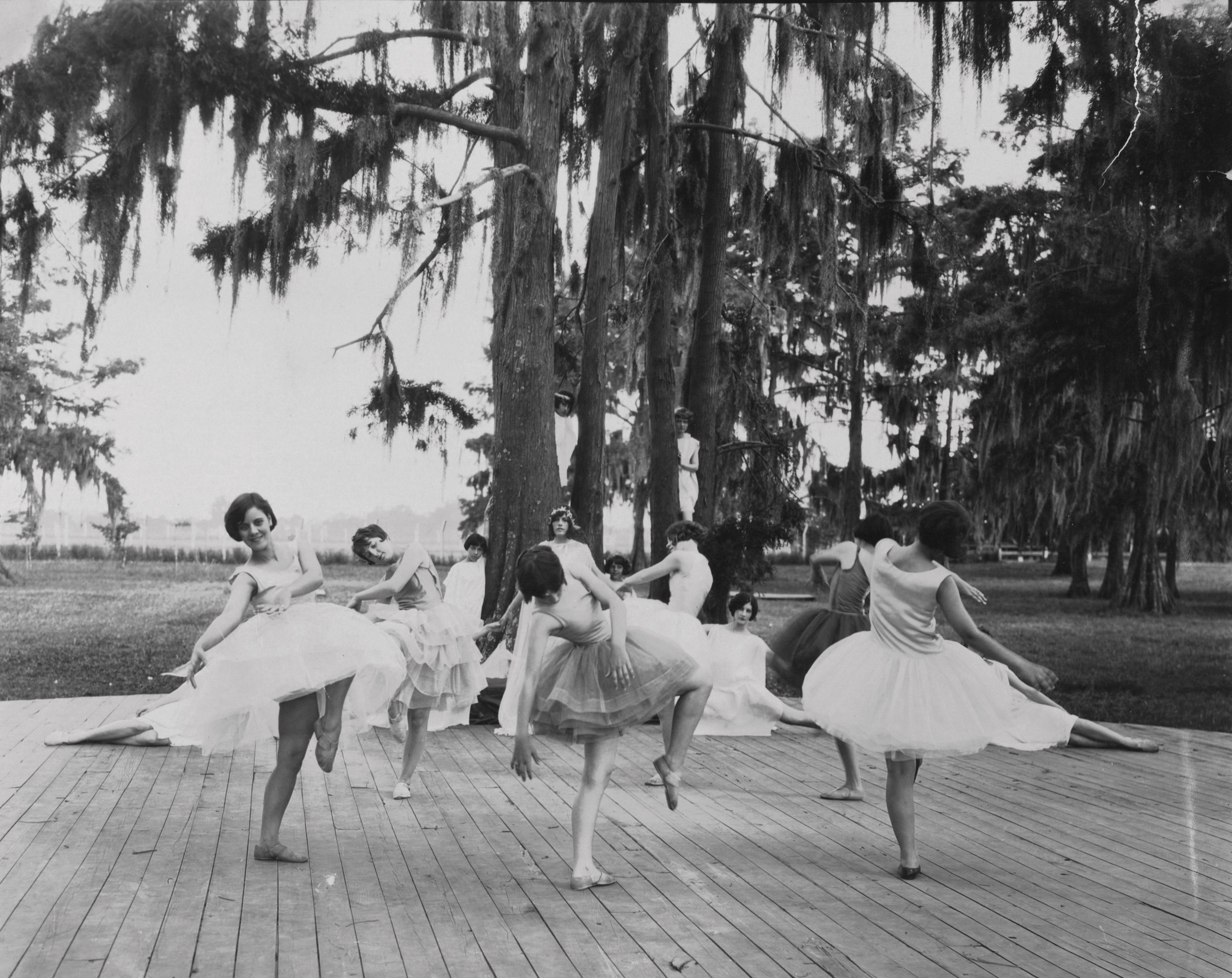
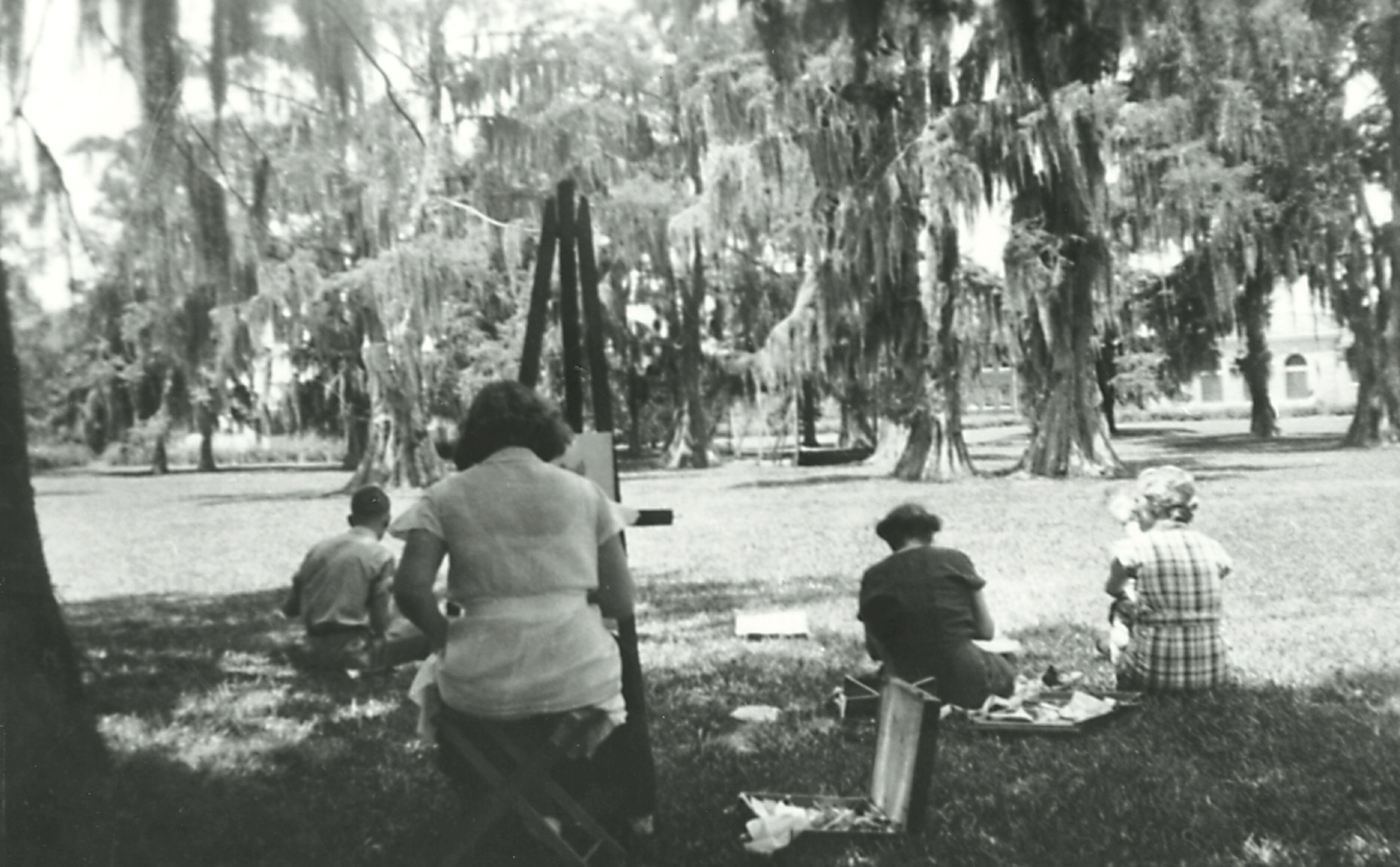
SLI's Extension Division provided bus service to students who didn't have transportation or couldn't afford to live on campus. In 1932, buses transported 143 students who each paid $5 - $8 per month for the service. Buses traveled to Franklin, Kaplan, Jennings and Opelousas.
Cypress Grove, once a pigsty, was used for performances and commencement ceremonies before it was intentionally flooded during World War II.
In 1928, a physical education class performed "A Midsummer Night's Dream."
Emily Huger, an art instructor, held classes in Cypress Grove in 1937.
1938
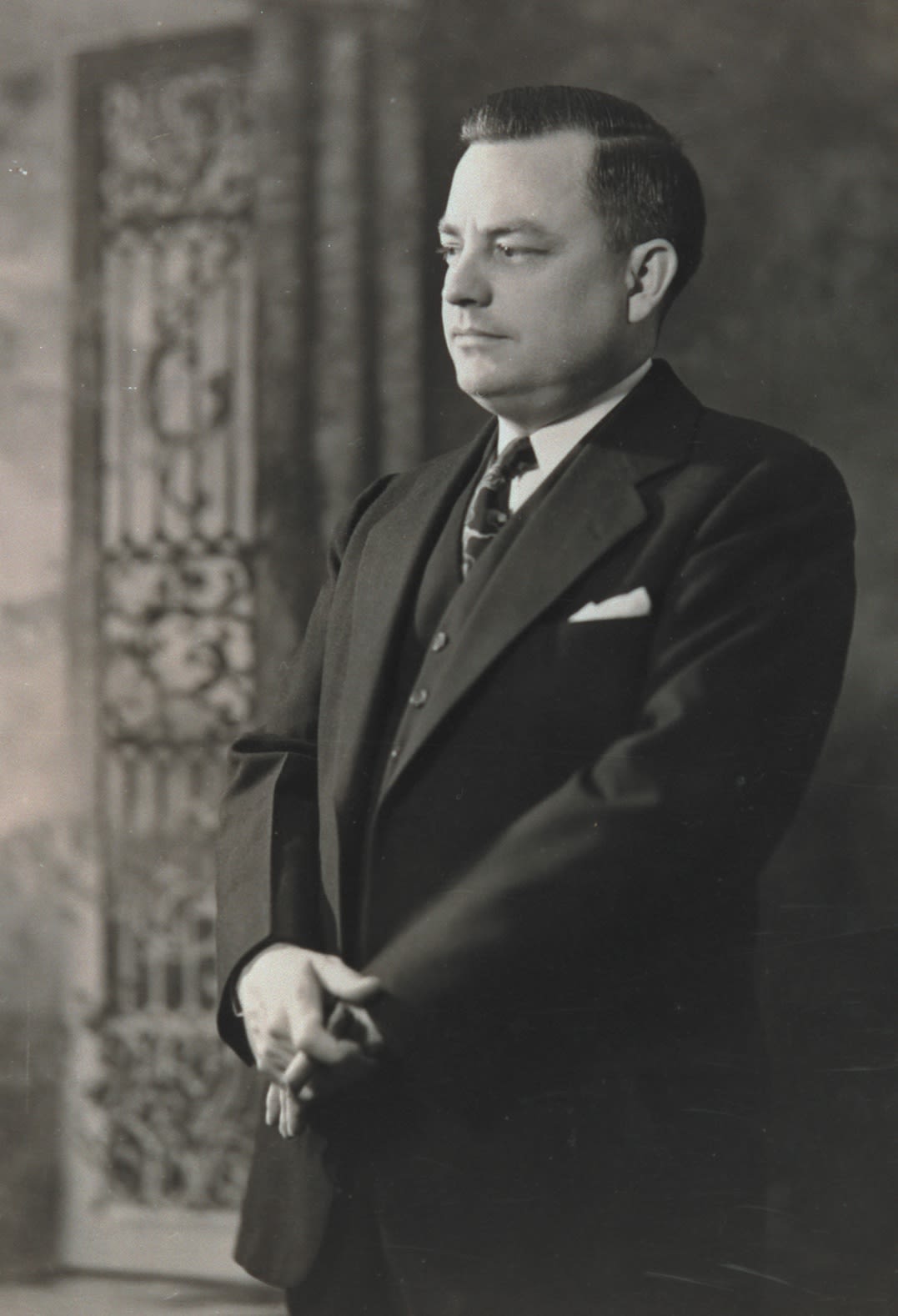
Lether E. Frazar became SLI's second president in 1938.
Lether E. Frazar became SLI's second president in 1938.
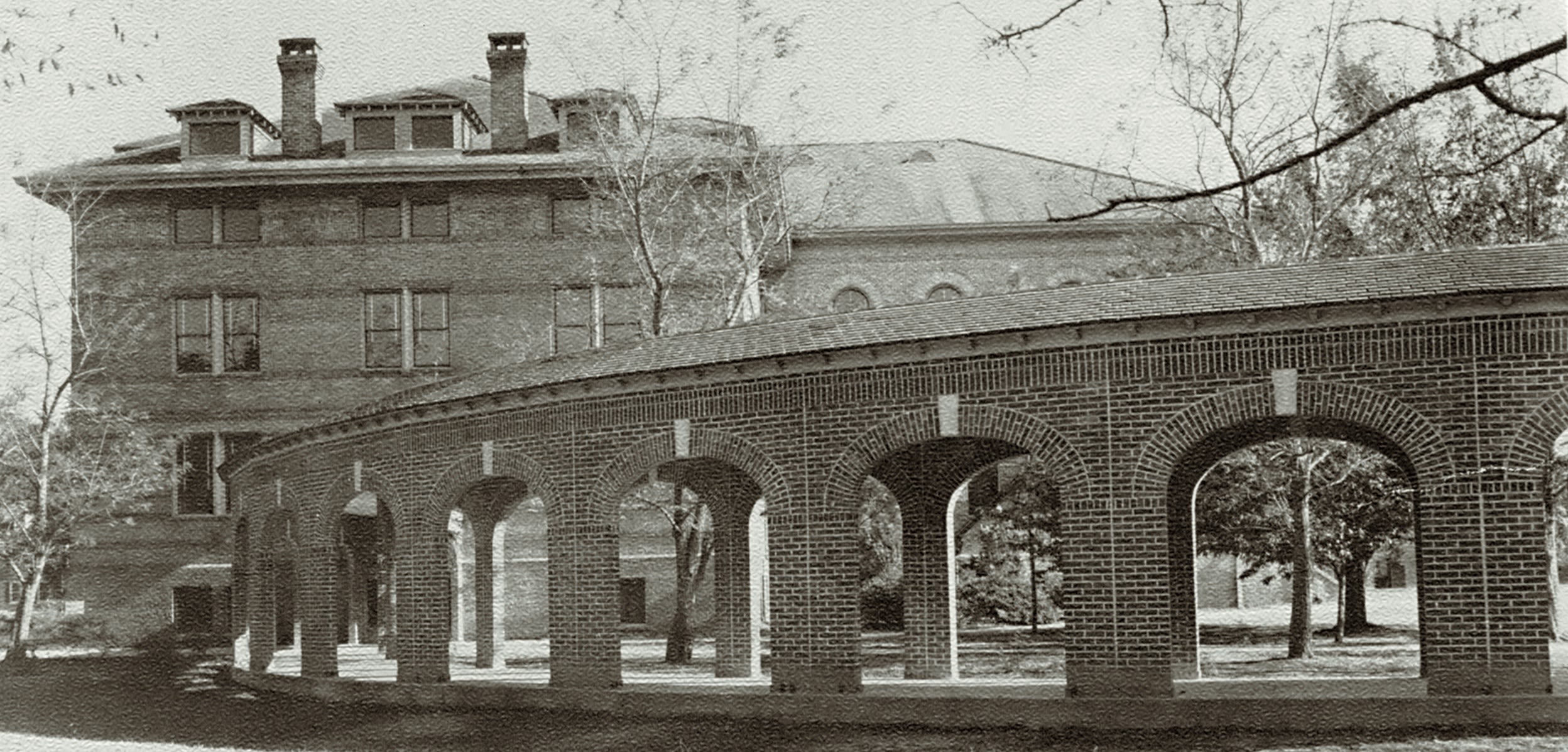
A covered walkway constructed in 1940. The brick structure, which linked all major buildings on campus, was the only one of its kind in the state, according to The Vermilion.
A covered walkway constructed in 1940. The brick structure, which linked all major buildings on campus, was the only one of its kind in the state, according to The Vermilion.
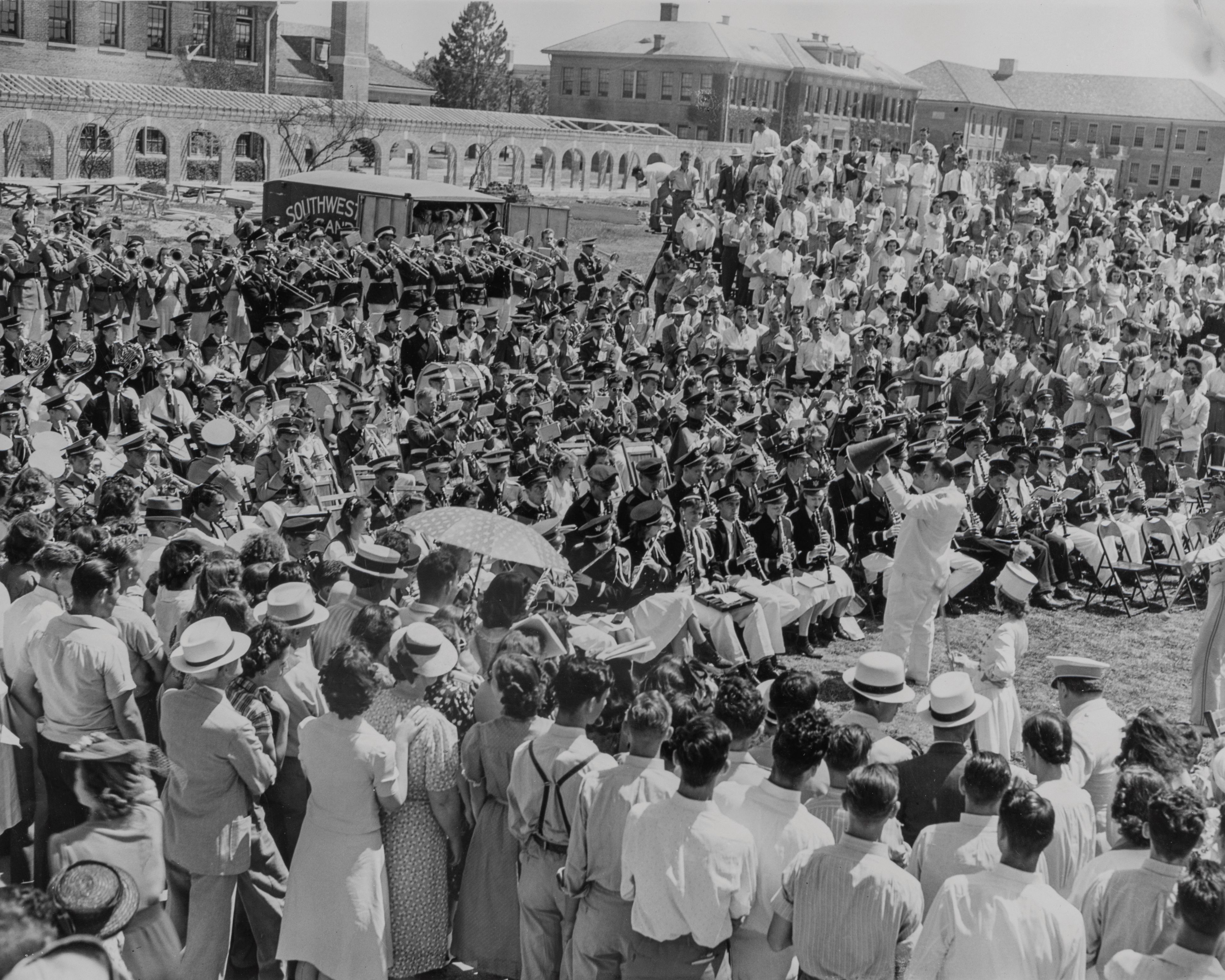
Thousands attend dedication ceremonies on May 18, 1940, for 14 buildings completed during Frazar's administration.
Thousands attend dedication ceremonies on May 18, 1940, for 14 buildings completed during Frazar's administration.
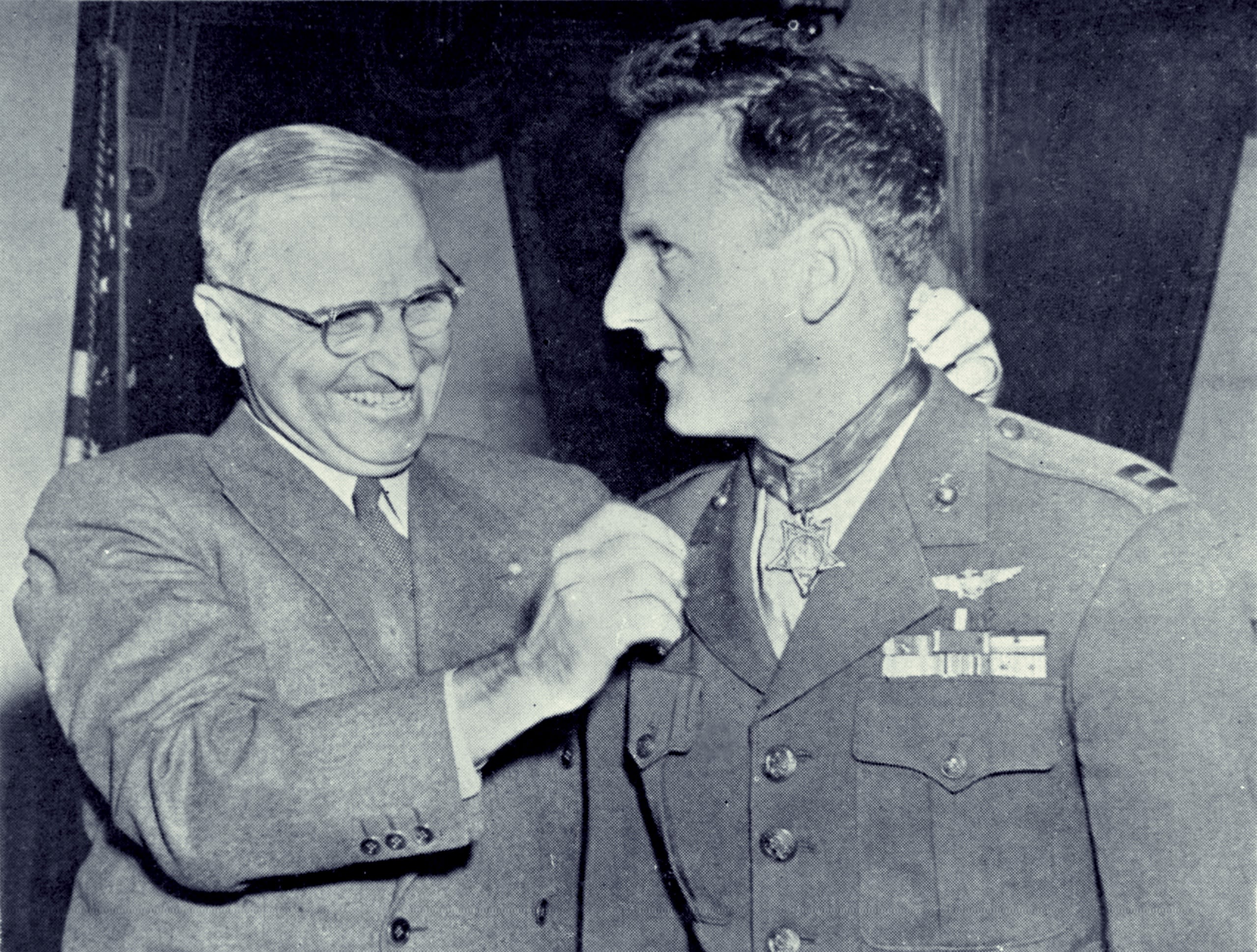
Jeff DeBlanc, '46, was the first SLI alumnus to receive the Medal of Honor. President Harry S. Truman is shown presenting the medal during a ceremony in Washington, D.C.
Jeff DeBlanc, '46, was the first SLI alumnus to receive the Medal of Honor. President Harry S. Truman is shown presenting the medal during a ceremony in Washington, D.C.
1941
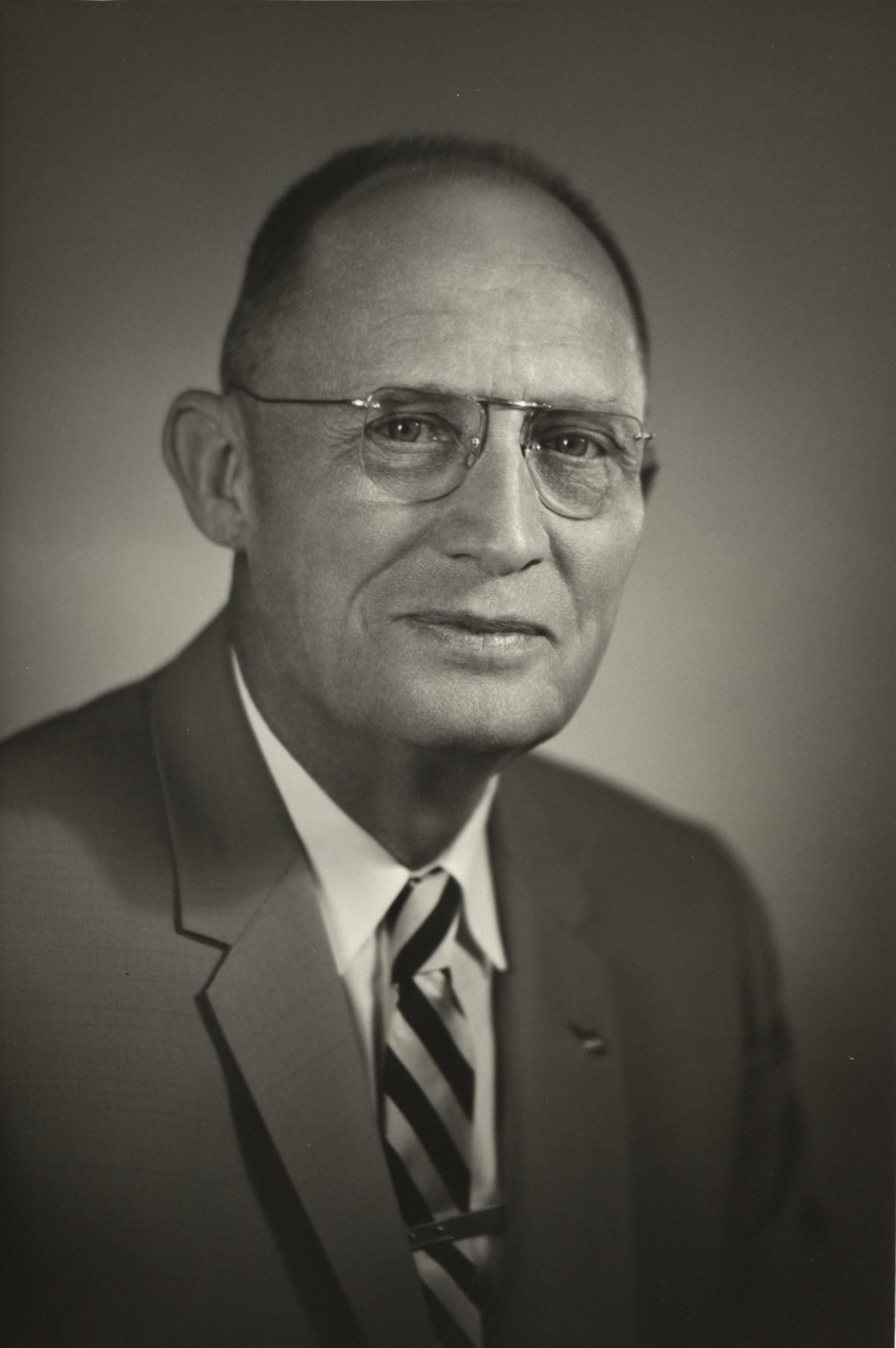
Joel Lafayette Fletcher became SLI's third president.
Joel Lafayette Fletcher became SLI's third president.
In 1943, Fletcher and Dean of Men Joe Riehl were able to secure the V-5, V-7 and V-12 military training units for SLI. The armed services programs are credited with saving SLI by boosting enrollment. By the time all programs were complete in 1945, about 2,000 soldiers had passed through Southwestern's gates. Students marched in a parade to mark the opening of a Red Cross Relief Fund, rolled bandages and held victory dances to raise money for war bonds.
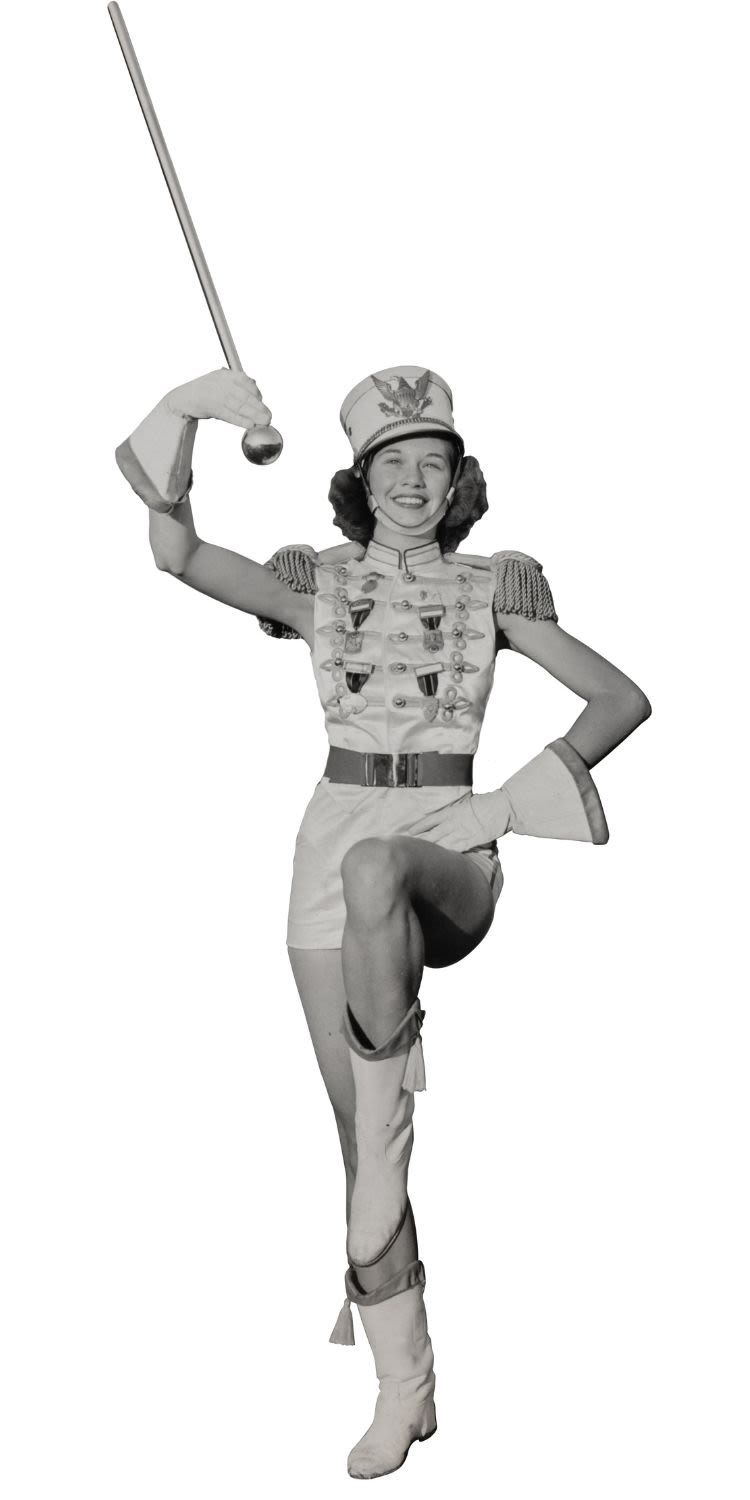
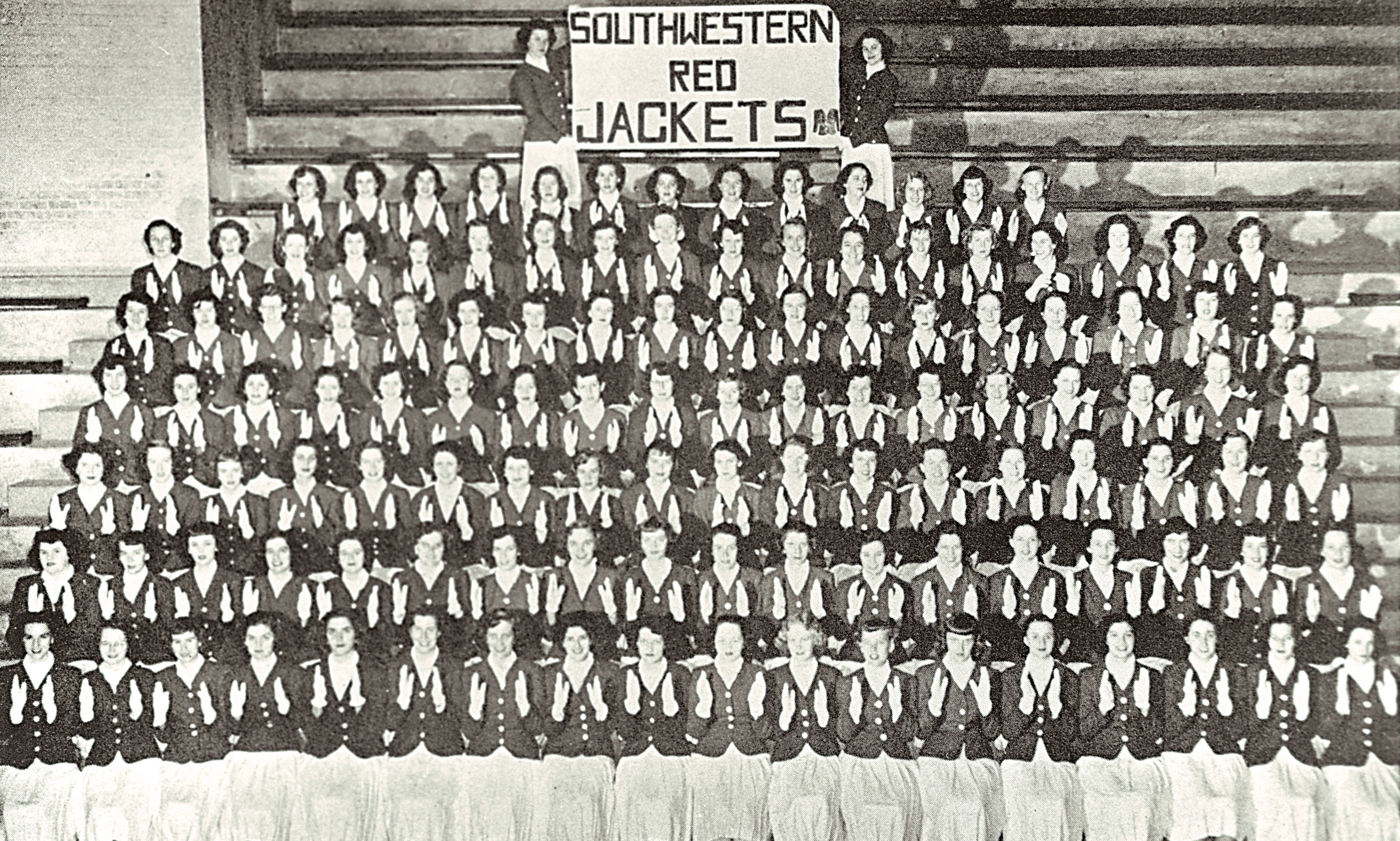
The Red Jackets, a pep squad created in 1937, had more than 100 members in 1950. During halftime at football games, the drill team performed on the field.
The Red Jackets, a pep squad created in 1937, had more than 100 members in 1950. During halftime at football games, the drill team performed on the field.
Fight Song
Southwestern's official fight song was chosen during a contest sponsored by the Student Council in 1950. Hilma LaBauve, an SLI freshman, wrote the winning entry and won a prize of a $100 U.S. Savings Bond.
FIGHT ON, BULLDOGS
FIGHT ON TO VIC'TRY
FOR THE RED AND WHITE.
WE ALL SING OF TRIUMPH AND GLORY
FOR OUR BOYS TONIGHT.
YOU WILL HEAR THE BARK
OF THE BULLDOGS SOARING TO THE SKY
HUSTLE UP AND RUSTLE UP AND
FIGHT ON TO VIC'TRY, S-L-I!
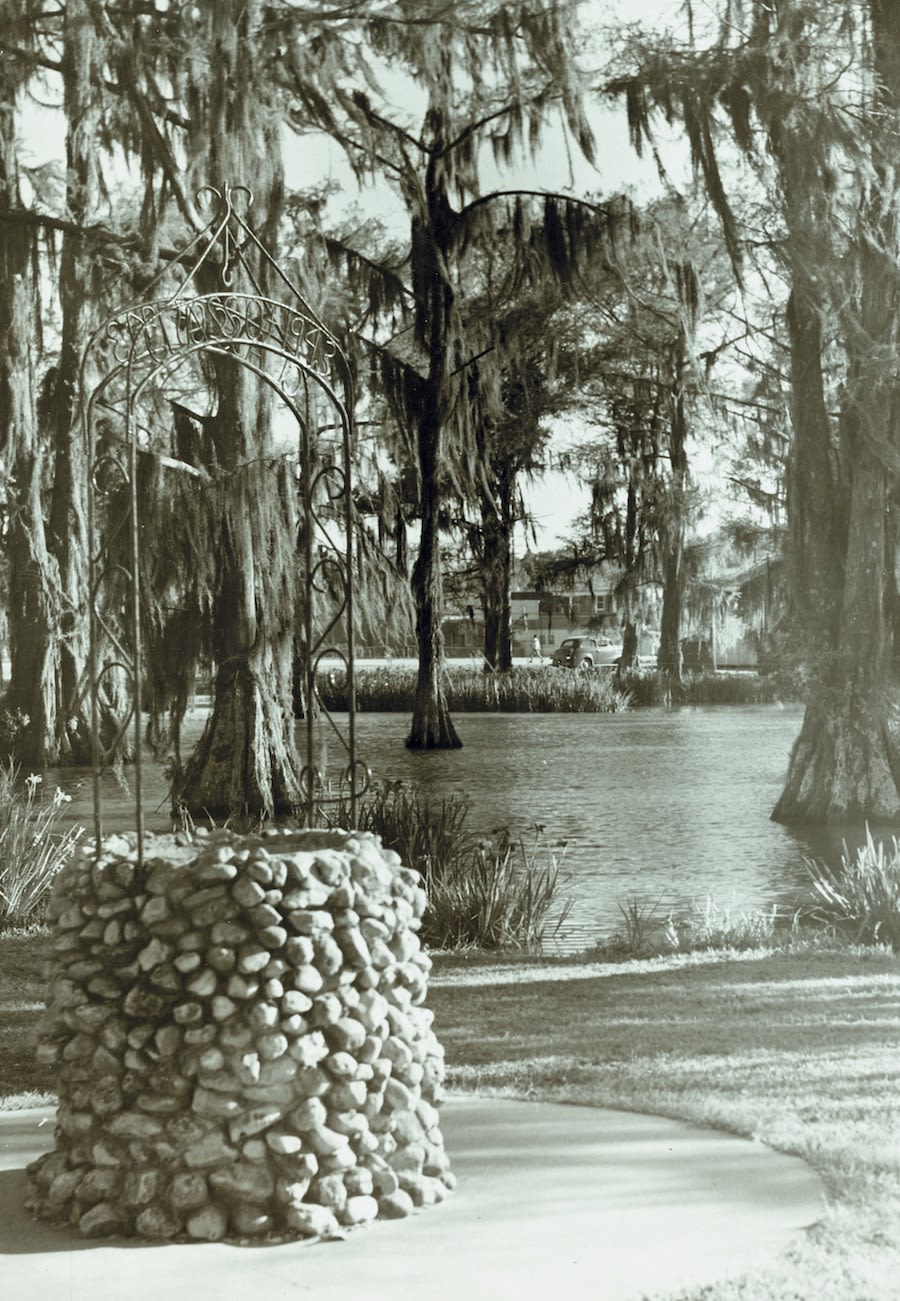
A wishing well adjacent to Cypress Lake was a gift from the Class of 1943 to SLI's student body. It was intended to symbolize the class spirit of optimism.
A wishing well adjacent to Cypress Lake was a gift from the Class of 1943 to SLI's student body. It was intended to symbolize the class spirit of optimism.
1954
On July 16, 1954, the federal court in Shreveport ruled that SLI could not refuse admission to any resident of southwest Louisiana on the basis of race or color. John Harold Taylor registered six days later. By the start of the fall semester, 80 Black students had enrolled at SLI, making the school the first formerly all-White college or university in the Deep South to desegregate.
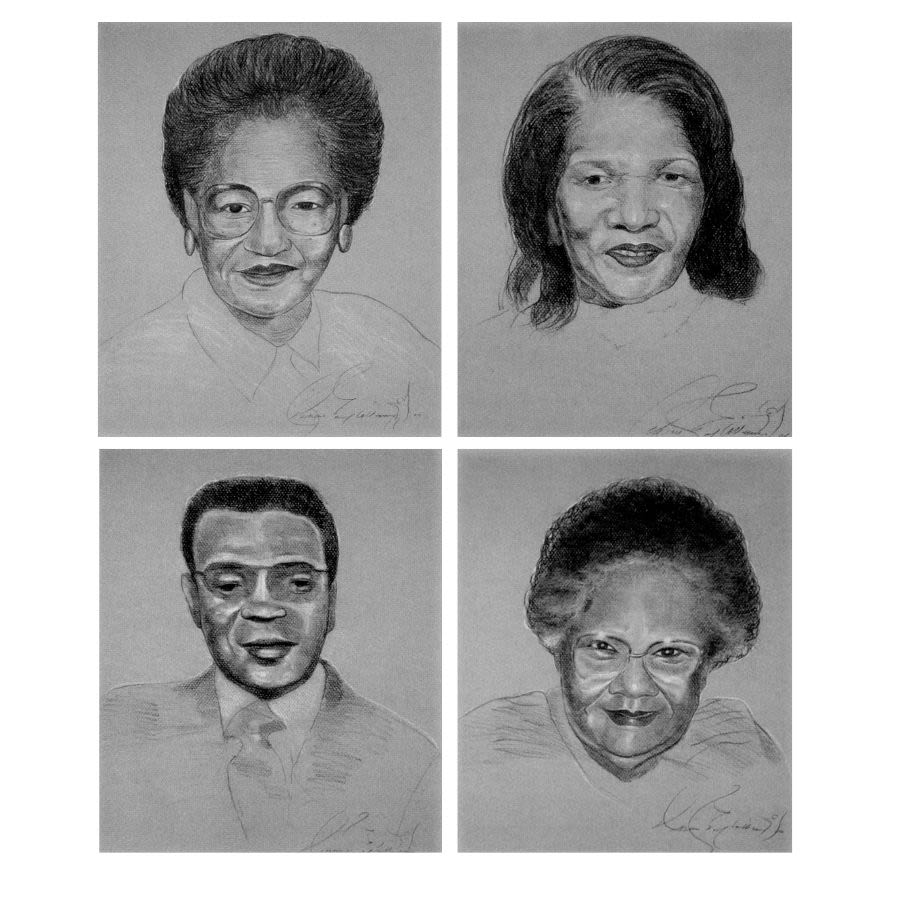
In 1953, four Black students — Clara Dell Constantine, Martha Jane Conway, Shirley Taylor and Charles Vincent Singleton — were denied admission to SLI. They filed a lawsuit in response, seeking a court order to force the institute to allow them to enroll.
In 1953, four Black students — Clara Dell Constantine, Martha Jane Conway, Shirley Taylor and Charles Vincent Singleton — were denied admission to SLI. They filed a lawsuit in response, seeking a court order to force the institute to allow them to enroll.

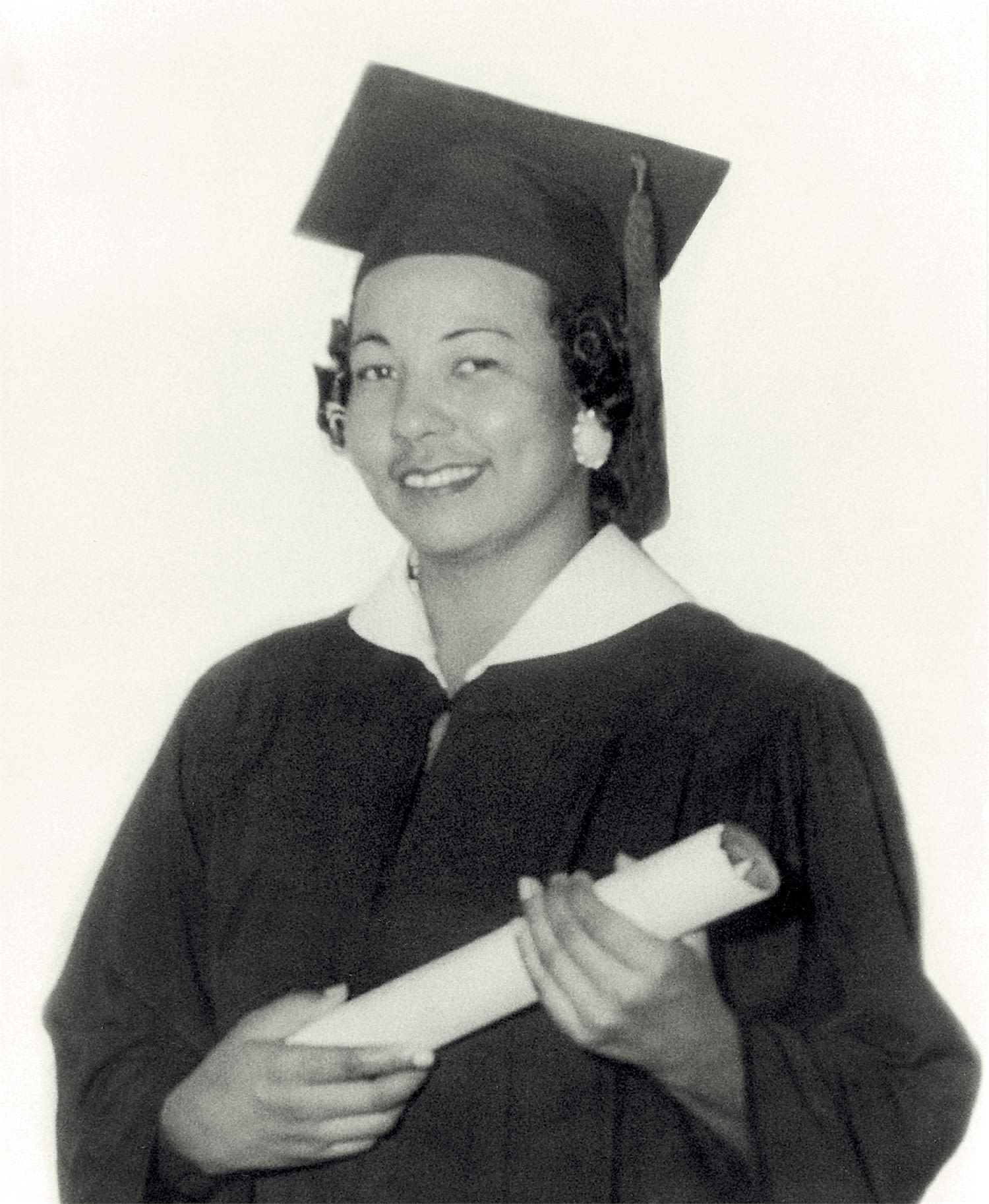
In 1956, Christiana Smith became the first Black student to graduate from SLI.
In 1956, Christiana Smith became the first Black student to graduate from SLI.
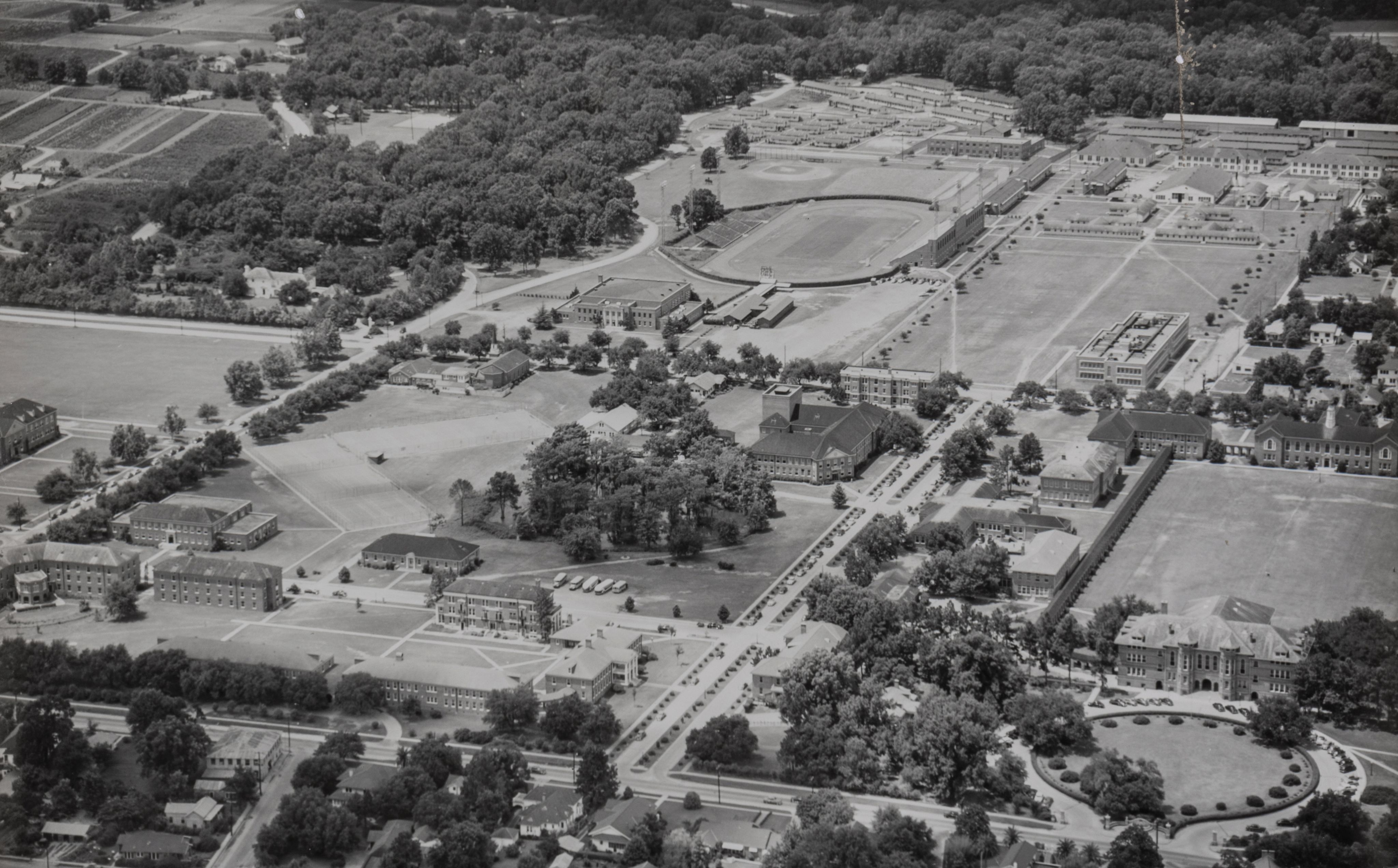
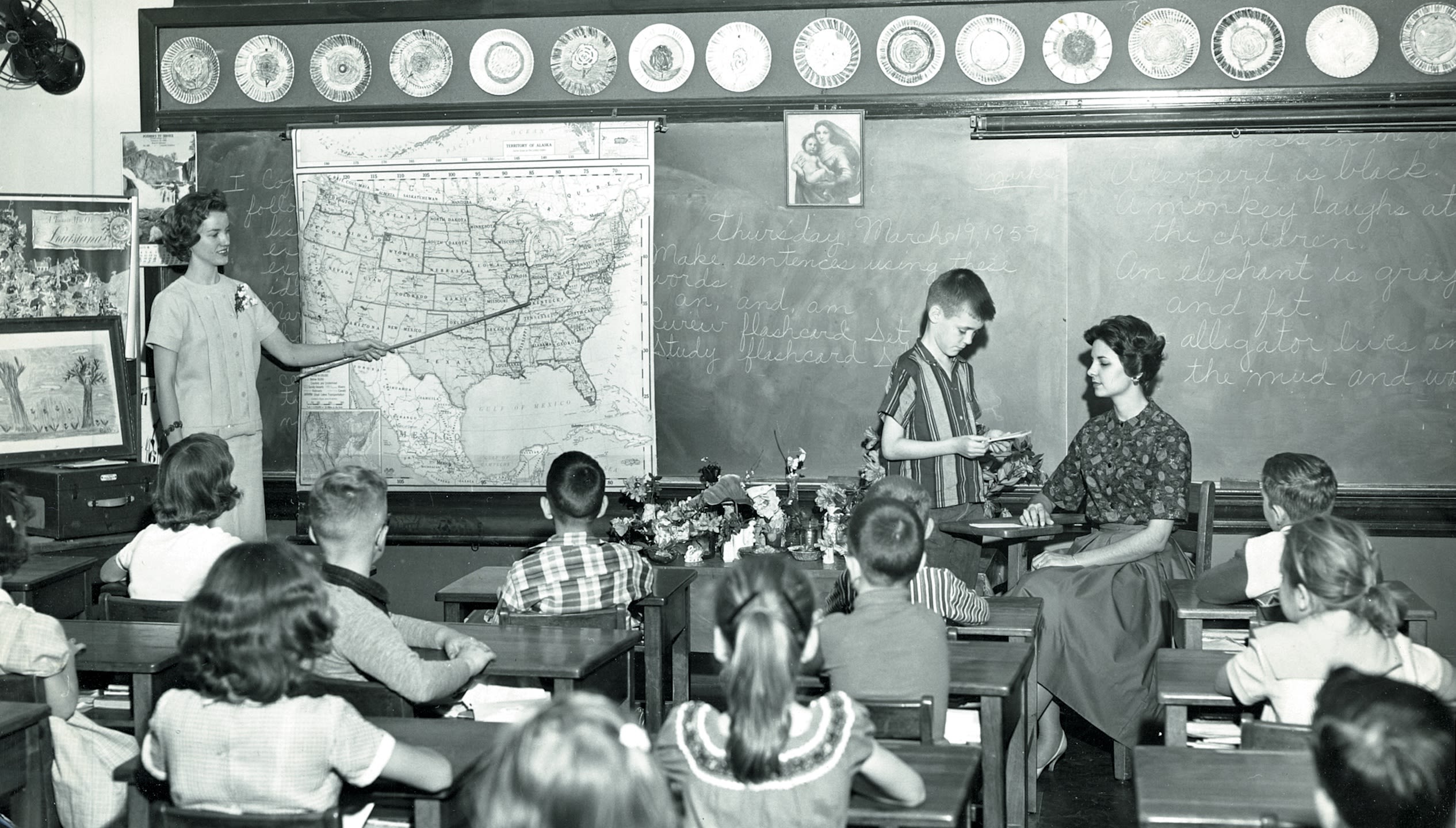
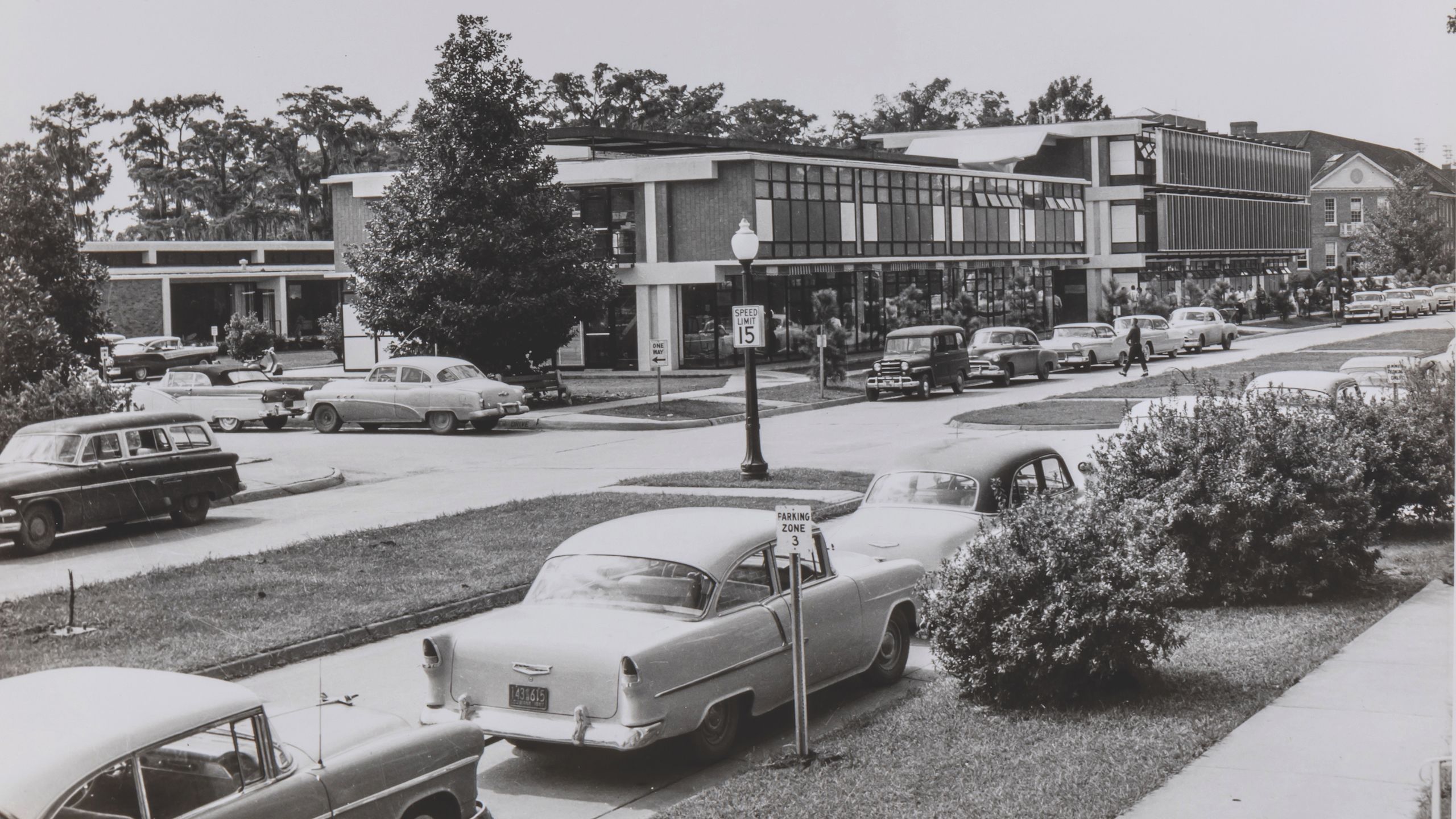
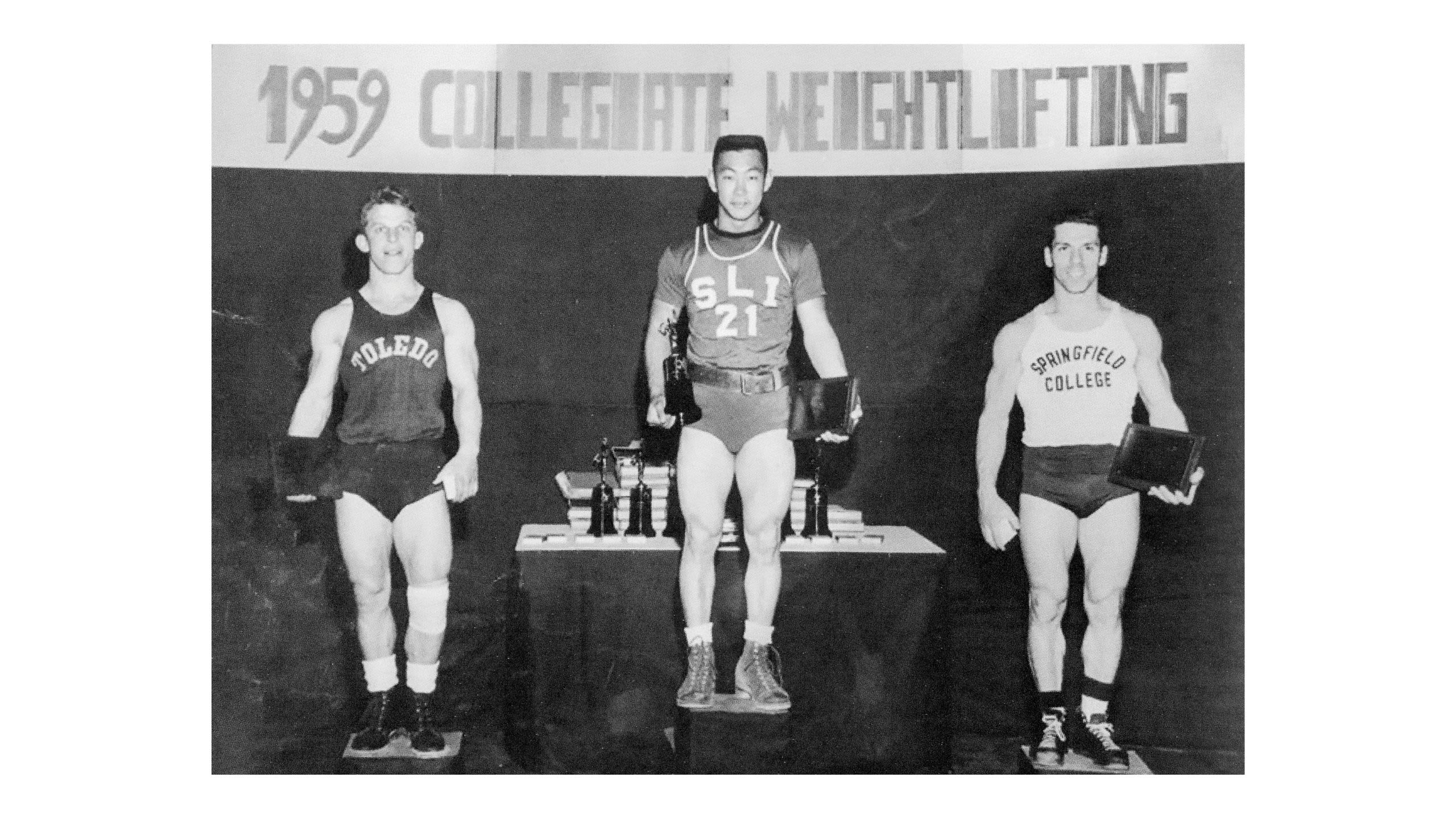
SLI's campus in 1954
In 1956, the Louisiana Legislature authorized Southwestern to grant master's degrees in education. A Graduate School was established in 1957, positioning SLI to become a university.
Coronna, Olivier and Guillory halls, seen here near Hebrard Boulevard, originally opened in 1957 as the Memorial Student Union.
Between 1957 and 1971, weightlifting teams representing SLI and USL won eight national championships, including five consecutive titles. Among the team's members: Walter Imahara, center, one of the most decorated athletes in University history.
July 27, 1960
Gov. Jimmie Davis signed Act 124, which changed SLI's name to the UNIVERSITY OF SOUTHWESTERN LOUISIANA

"WE FIRMLY RESOLVE THAT WE SHALL BE VERY WORTHY OF OUR NAME AND WE SHALL ADD NEW HONORS TO THAT NAME."
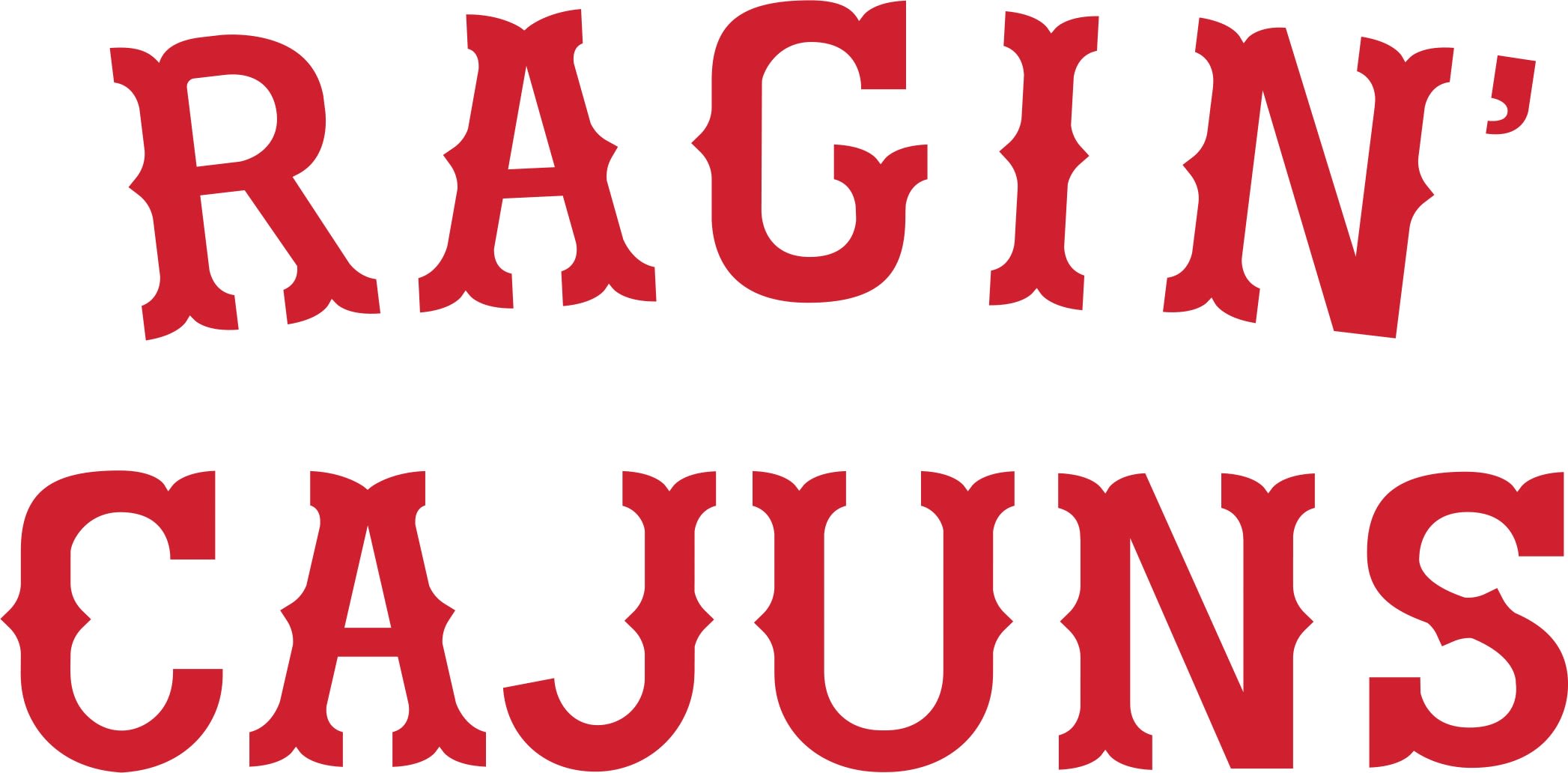
"Instead of the official Battling Bulldogs, Southwestern boosters have started referring to Coach Russ Faulkinberry's squad as the Raging Cajuns."
1966
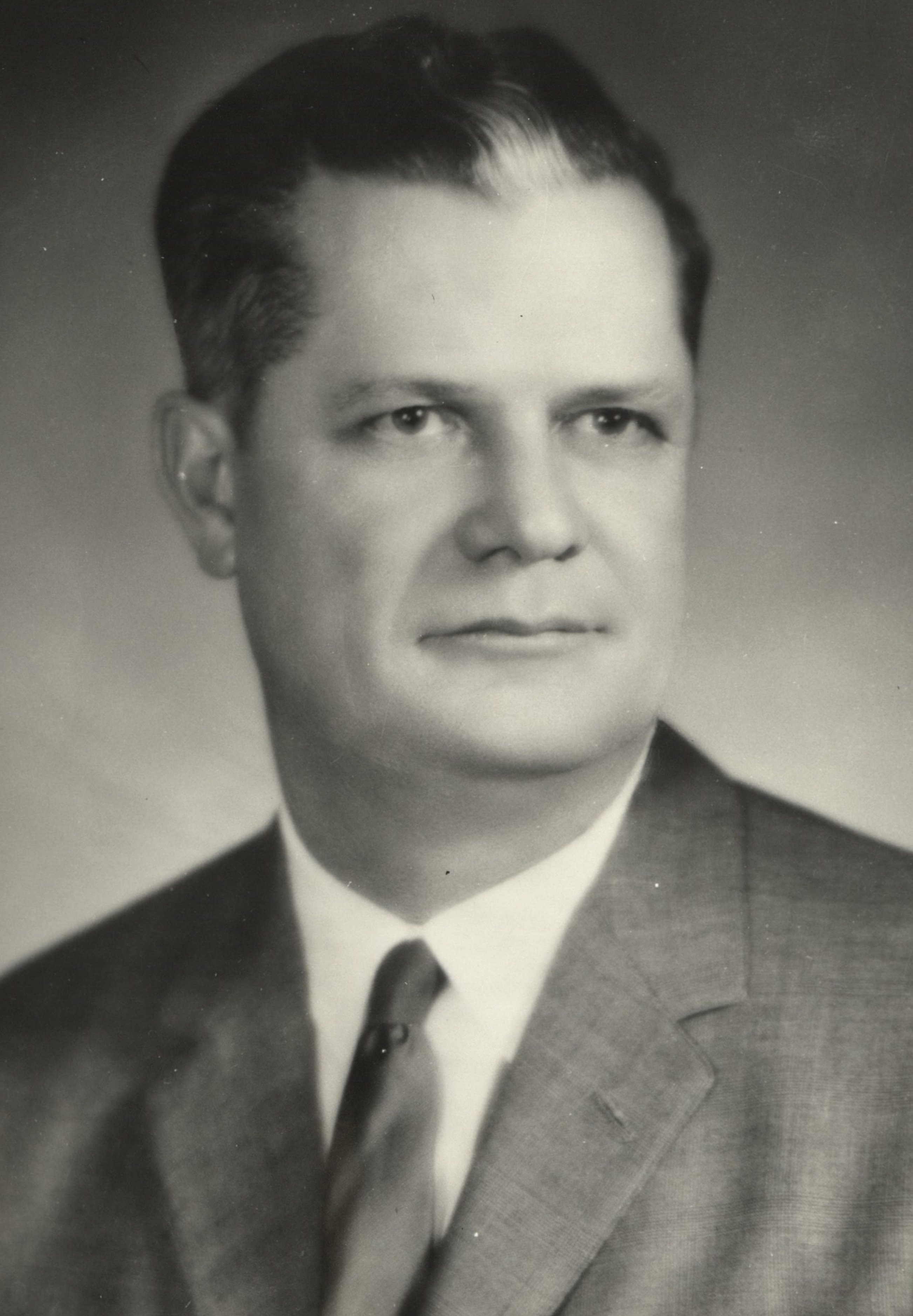
Clyde R. Rougeou became USL's fourth president.
Clyde R. Rougeou became USL's fourth president.
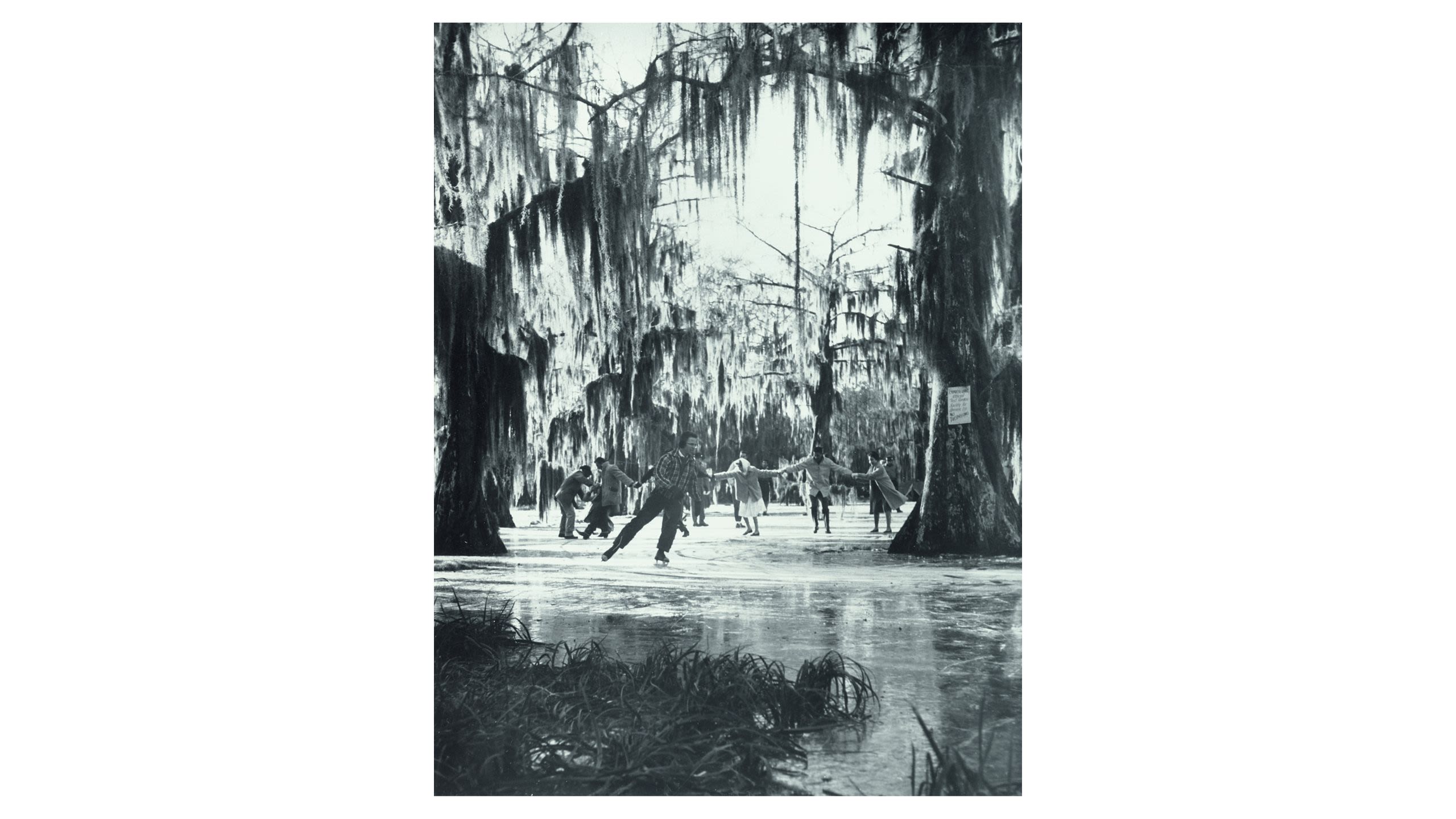
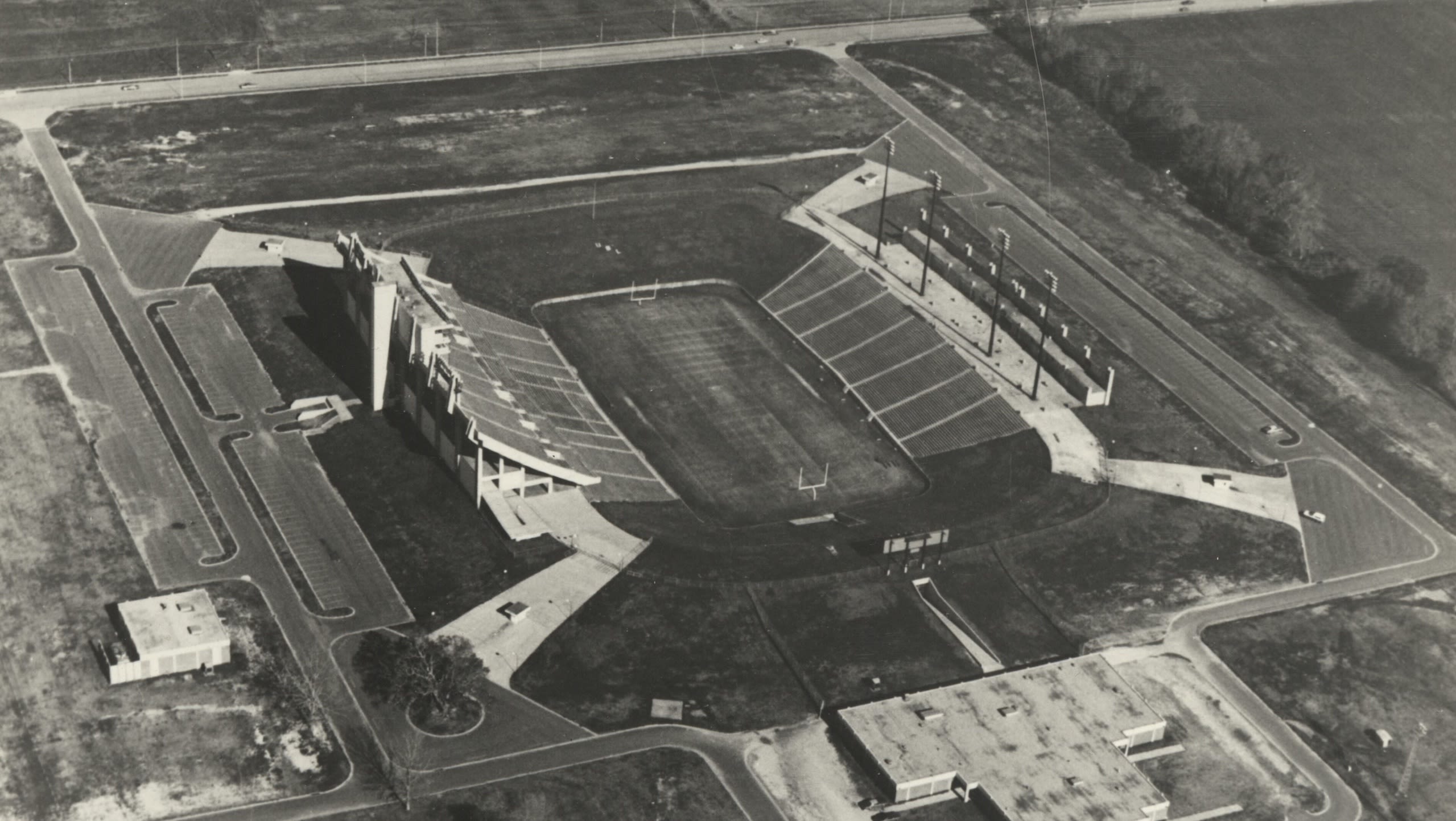
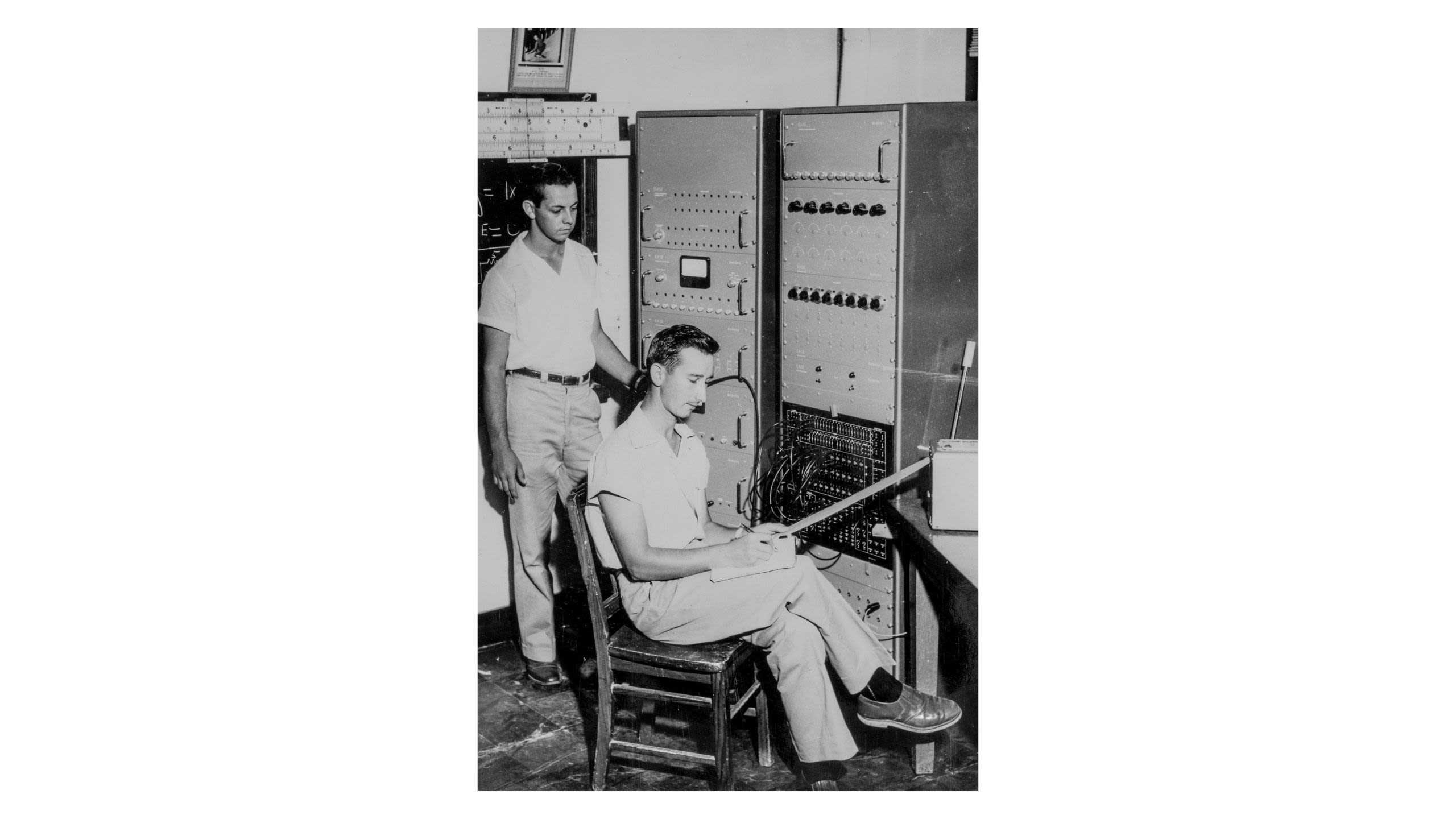
In 1962, Life magazine published this photo of a frozen Cypress Lake. Students ignored no trespassing signs and went ice skating — with or without skates.
In 1971, Cajun Field opened. "The Swamp" was built to seat 27,000 fans.
SLI obtained its first computer in 1954. It was used in classroom instruction and made available to local businesses and industry. By 1964, USL offered one of the first graduate programs in computer science in the U.S.
Here, Sammy Fontenot, standing, and Irving Manuel monitor Southwestern's first "electronic brain."
1974

Dr. Ray P. Authement became the University's fifth president.
He retired in 2008. Authement's 34-year tenure made him the nation's longest-serving public university president at the time. During his presidency, the University changed its name to the University of Louisiana at Lafayette; implemented academic admission standards; became the first Doctoral II institution in Louisiana; helped diversify the economy by establishing 17 research centers; increased gifted assets to more than $150 million; and constructed over 30 buildings and facilities, and renovated or expanded more than 25 others. The Ray P. Authement College of Sciences is named in his honor.
1981
USL was the first university in the southeastern U.S. to offer a graduate-level degree in computer engineering and a bachelor's degree in telecommunications.
In 1984, USL formed the Center for Advanced Computer Studies. Since its inception, CACS has demonstrated a strong contribution to high-quality education and research in the fields of computer science and engineering.
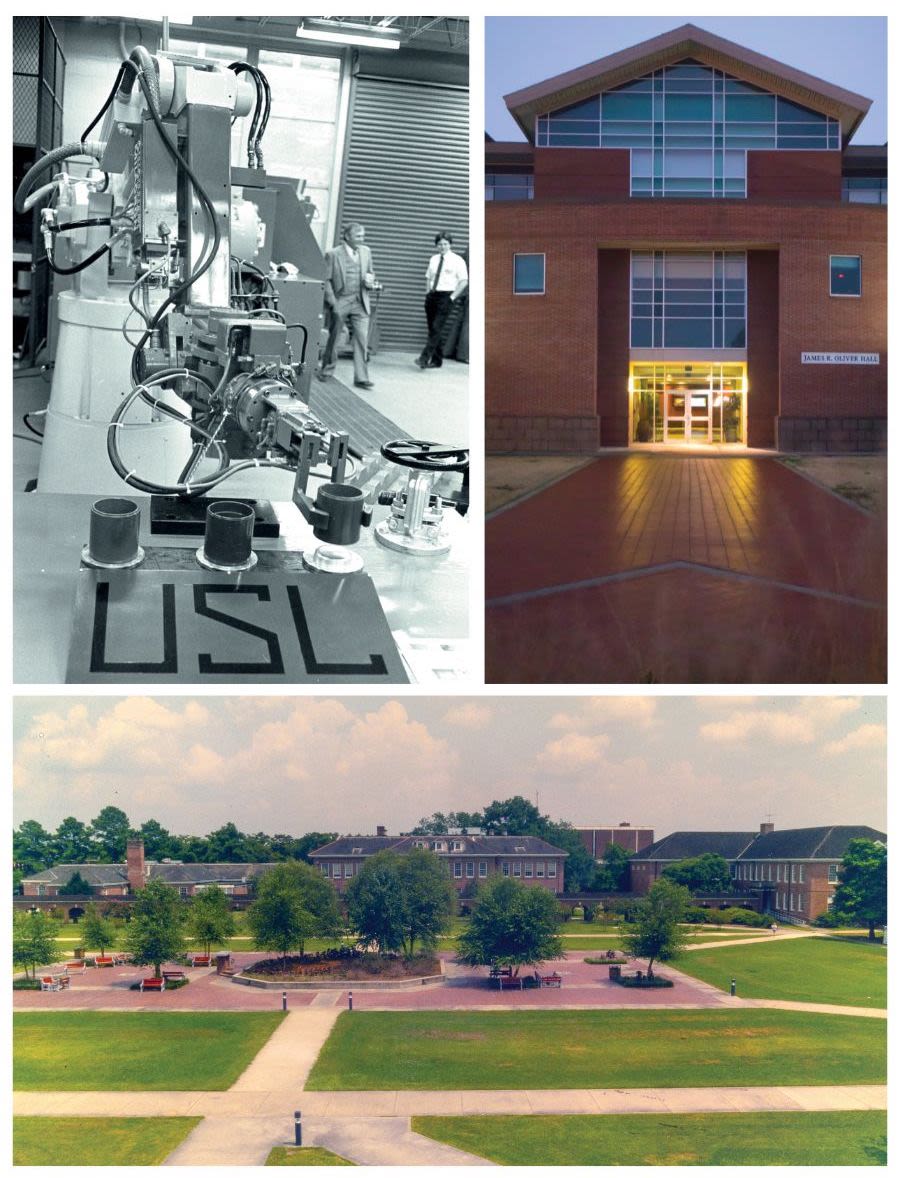
In the mid-1980s, the Quadrangle got a new look when intersecting sidewalks were poured, drainage was improved and landscaping was added.
In the mid-1980s, the Quadrangle got a new look when intersecting sidewalks were poured, drainage was improved and landscaping was added.
Athletics
In 1974, USL joined NCAA Division I for all sports.
Ragin' Cajuns Men's Basketball made its first official NCAA Tournament appearance in 1982.
Track and field star Hollis Conway won the silver medal at the 1988 Summer Olympics.
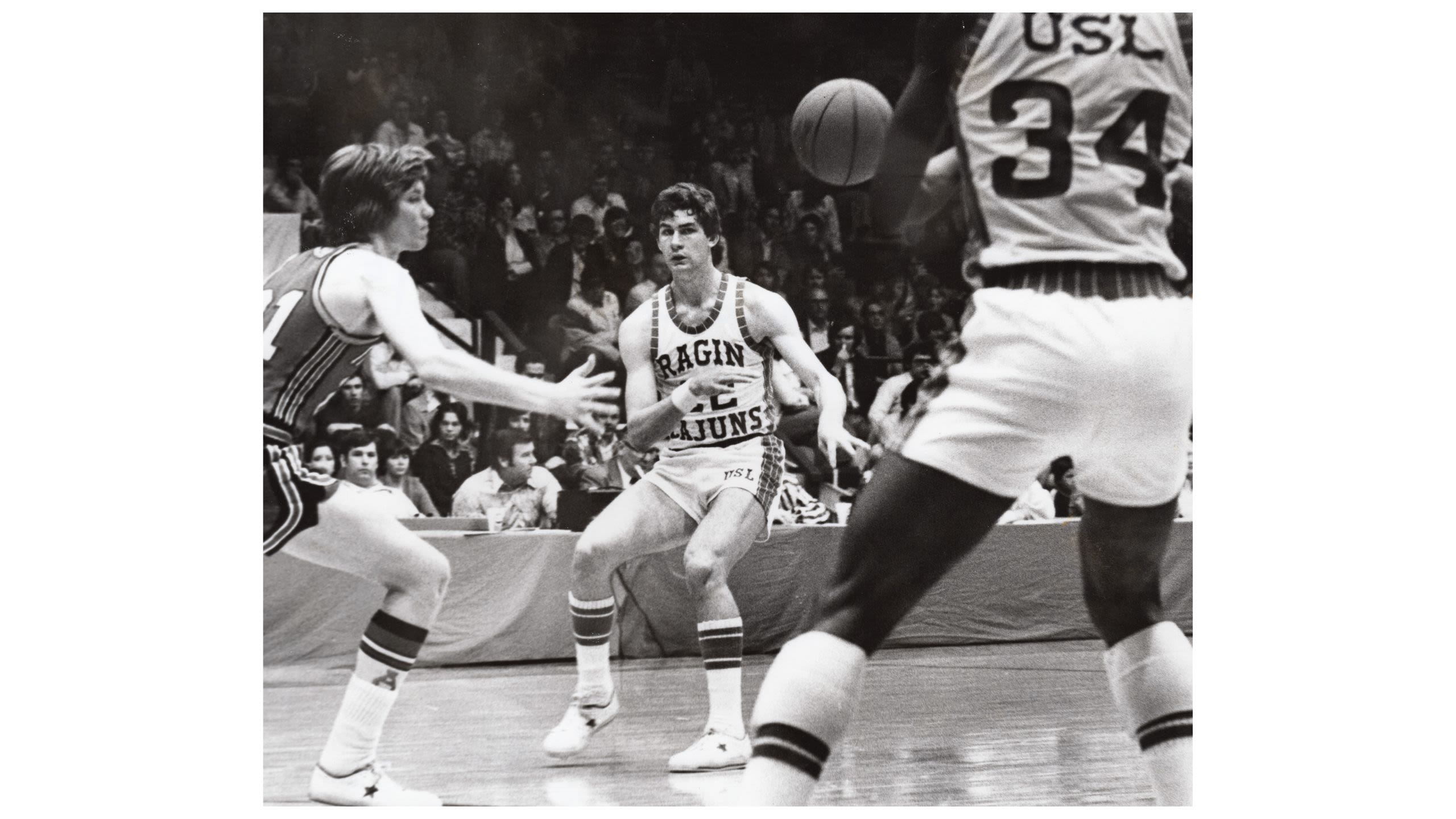
Ragin' Cajuns Men's Basketball made its first official NCAA Tournament appearance in 1982.
Ragin' Cajuns Men's Basketball made its first official NCAA Tournament appearance in 1982.
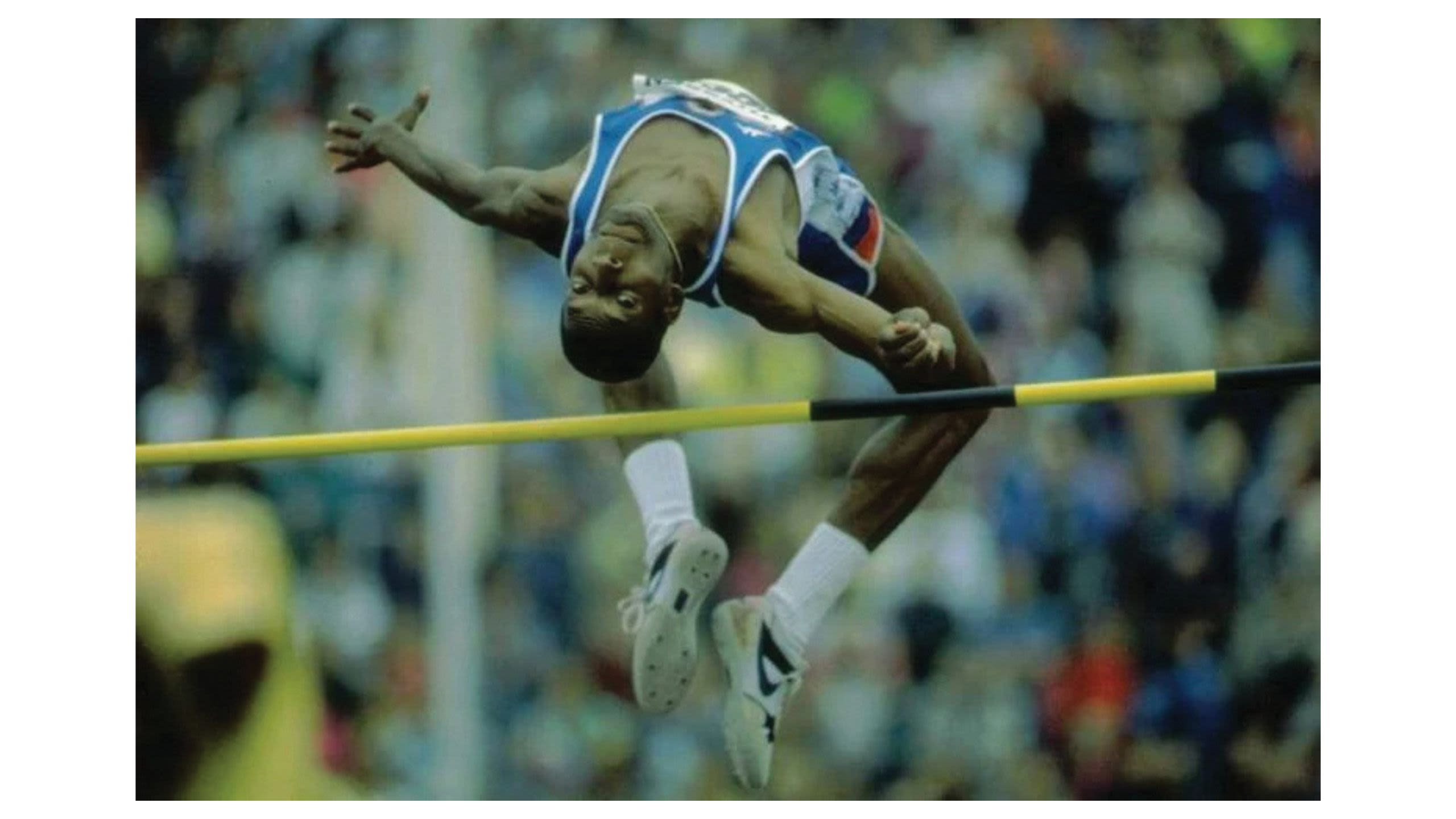
Track and field star Hollis Conway won the silver medal at the 1988 Summer Olympics; he earned a bronze medal at the 1992 Summer Olympics, as well.
Track and field star Hollis Conway won the silver medal at the 1988 Summer Olympics; he earned a bronze medal at the 1992 Summer Olympics, as well.
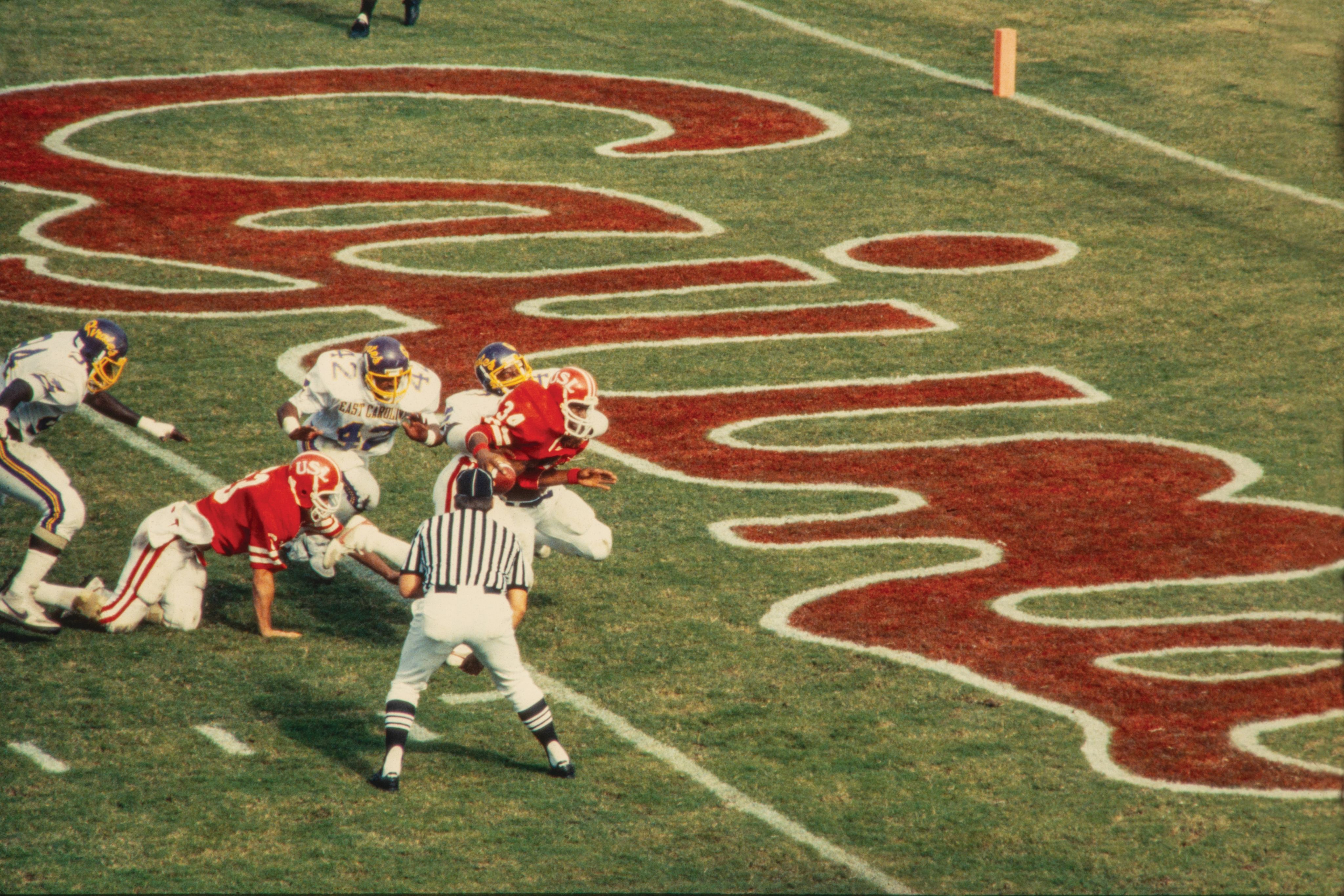
In 1974, USL joined NCAA Division I for all sports.
In 1974, USL joined NCAA Division I for all sports.
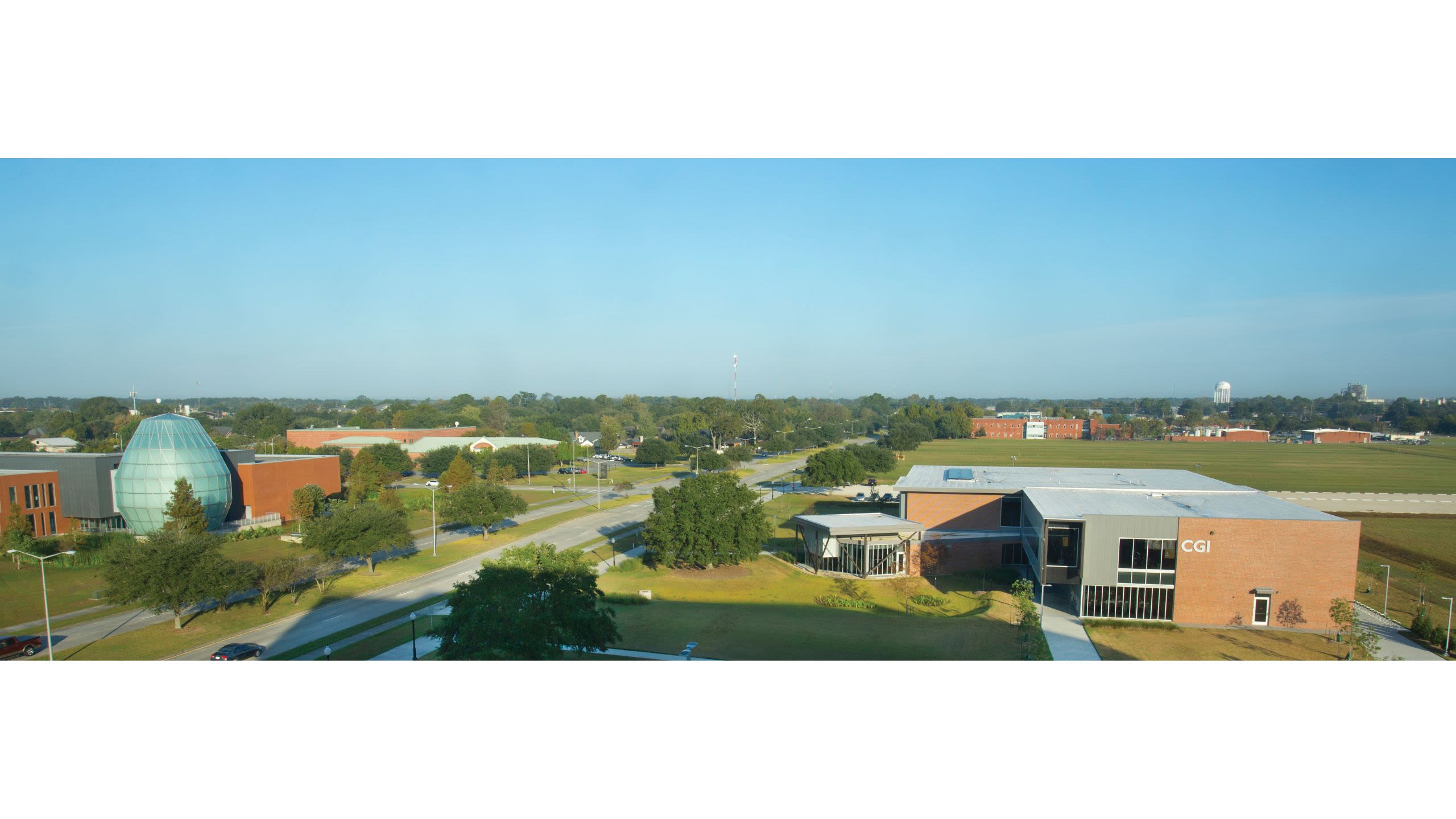
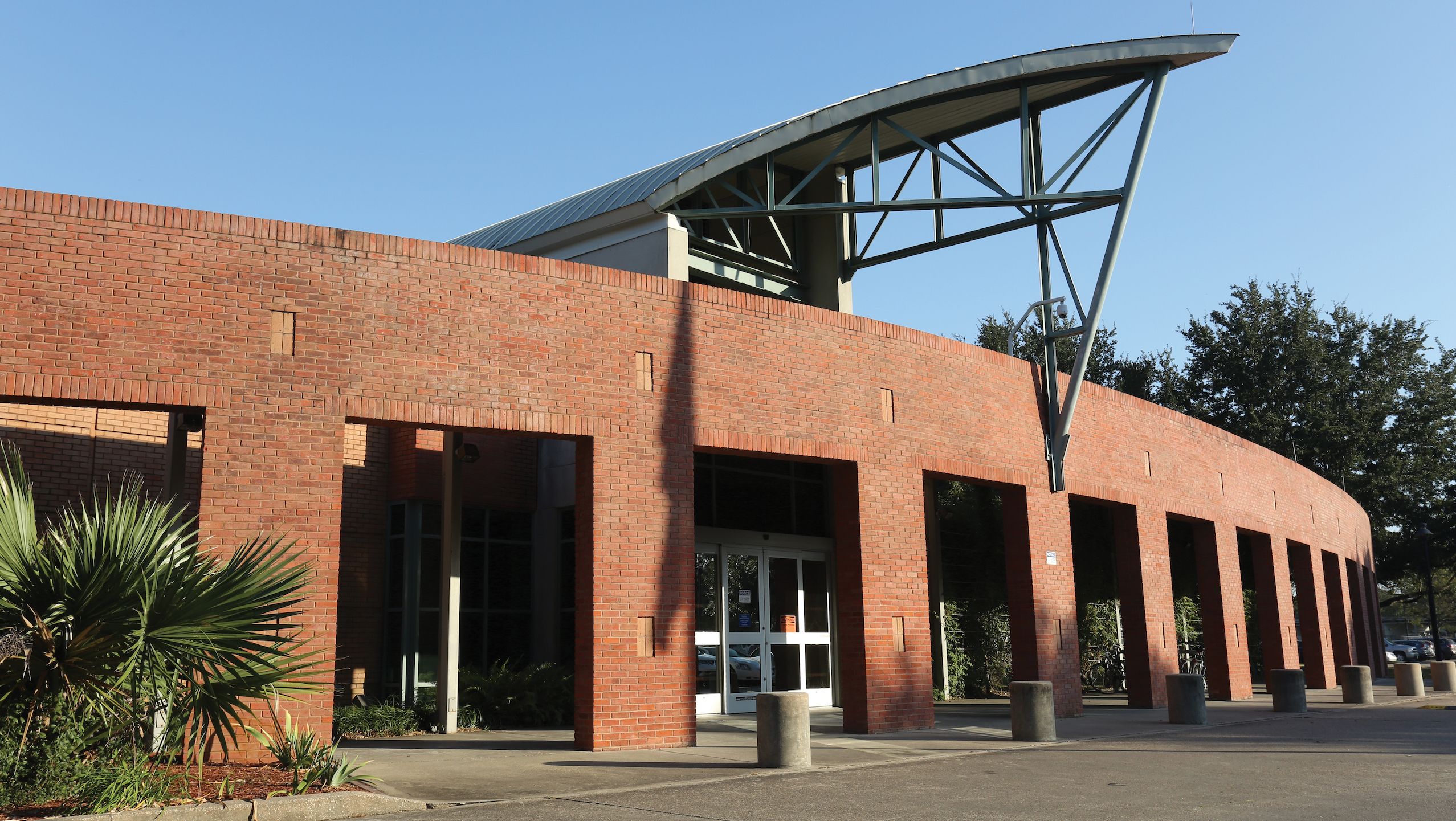
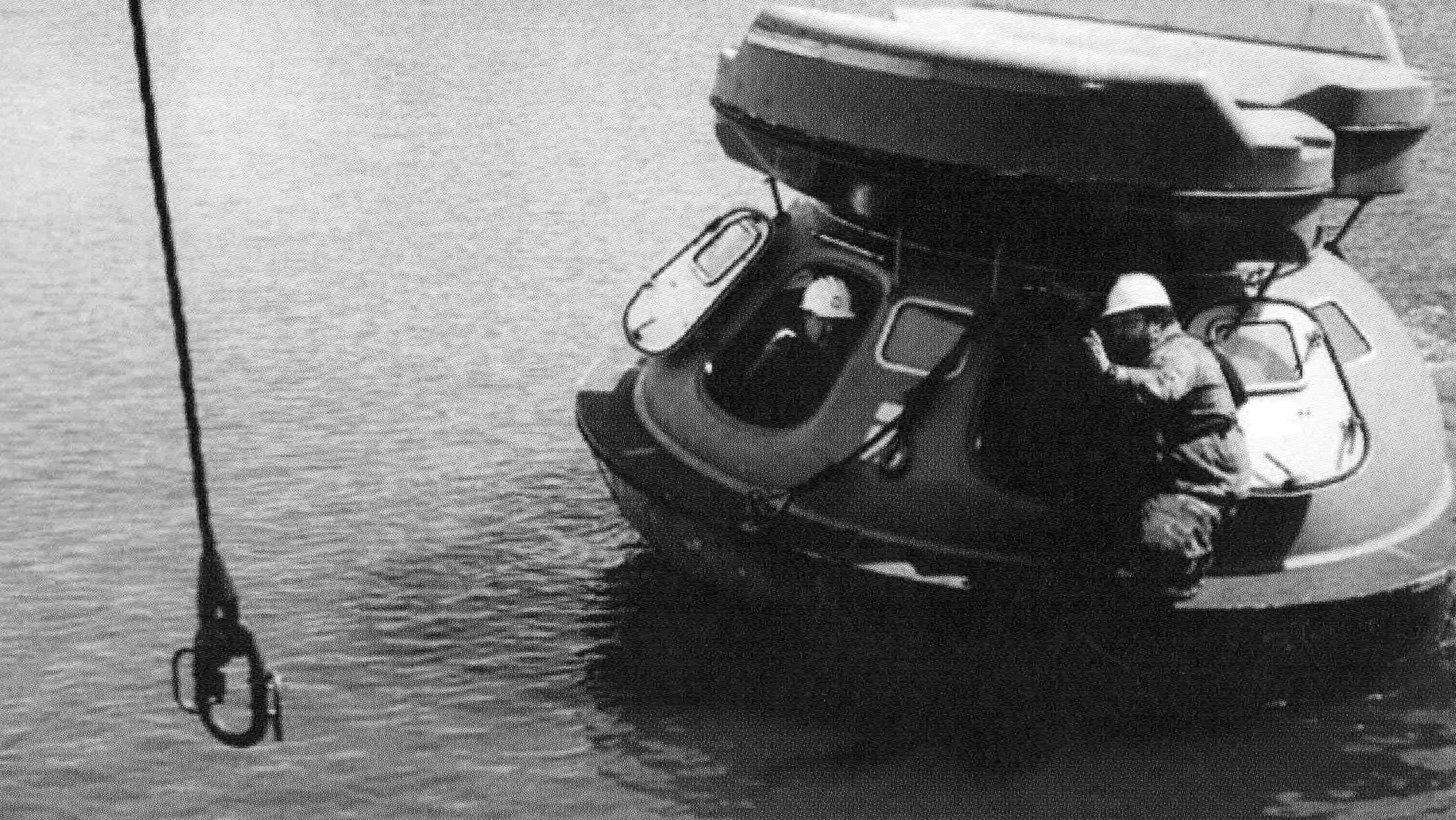
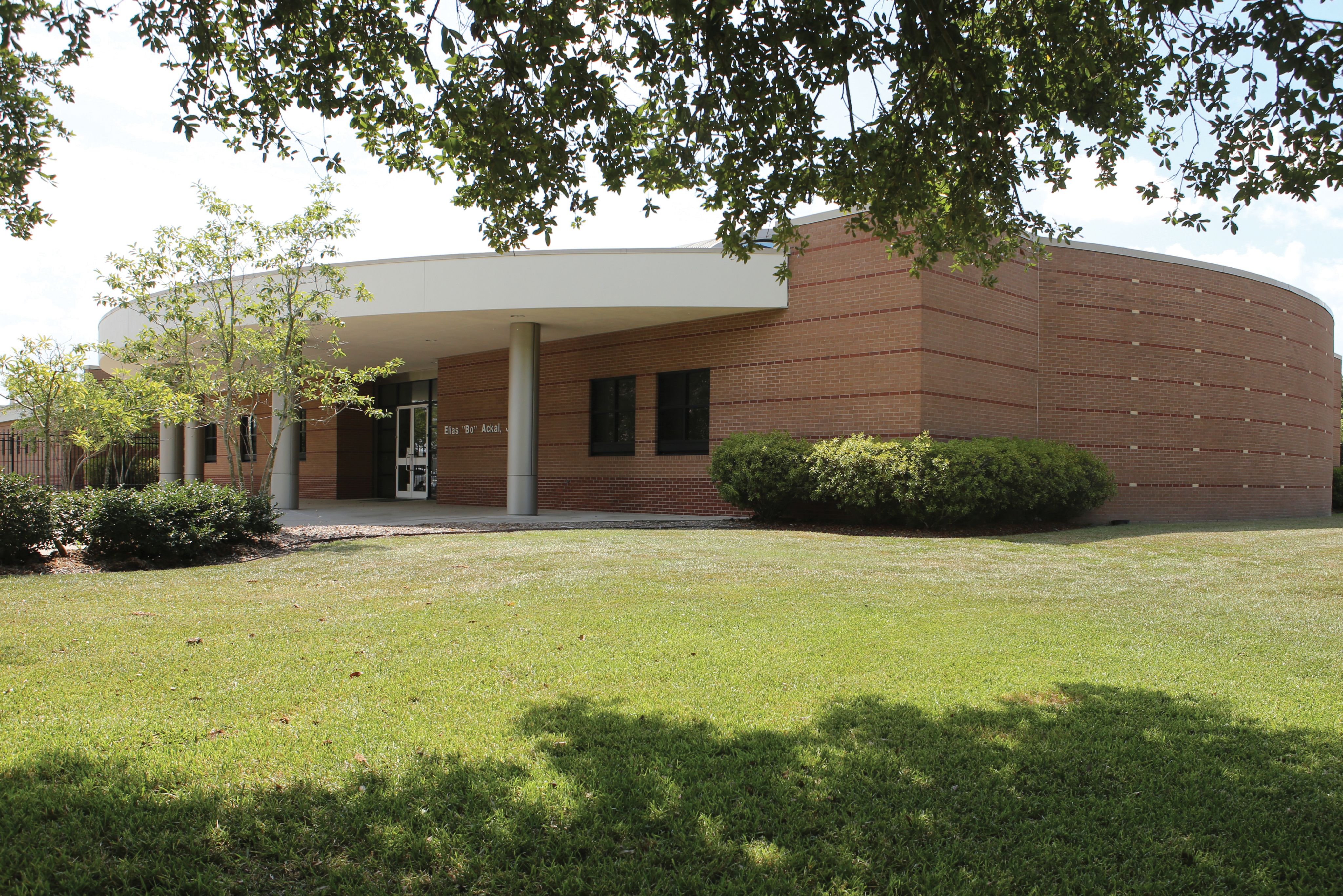
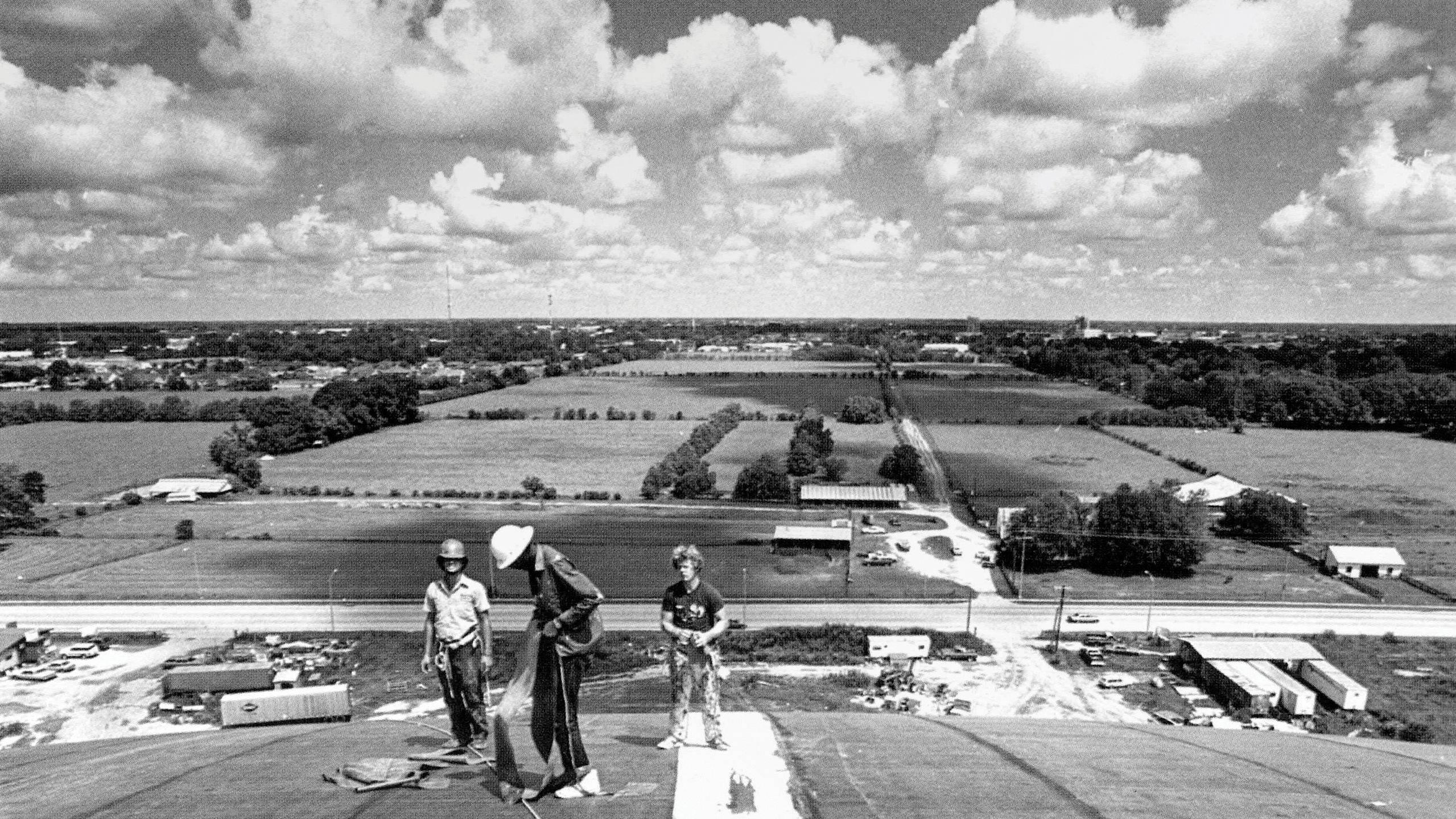
1980s Research
"Just as Authement had concentrated on developing USL's computer science expertise in the 1970s, he focused on biological and environmental sciences in the late 1980s and 1990s."
In the mid-1980s, USL began developing University Research Park. In the decades since, the 143-acre tract has become a hub for innovation, collaboration, partnerships with business, industry and government, and cutting-edge research.
Among the first tenants in University Research Park was the National Wetlands Center. Its mission: to advocate for restoration and preservation of the nation's wetlands.
In the 1980s, USL teamed up with the oil industry to build the Marine Survival Training Center, the nation's first training facility to teach offshore workers marine survival techniques.
USL acquired the Gulf South Research Center in New Iberia in 1984, which it later developed into the New Iberia Research Center, a testing facility for pharmaceutical companies worldwide.
The 12,800-seat Cajundome opened in 1986. This photo was taken from the top of the roof during construction. The property shown in the background is University Research Park, before Cajundome Boulevard connected Congress Street with Eraste Landry Road. The Cajundome underwent renovations and an expansion to include a convention center in 2000.
1990s
Distinctions
The University set selective admissions.
USL became the only Doctoral II university in Louisiana.
USL became the third university in the world, and the only one in the nation, to offer a doctoral degree in Francophone studies.
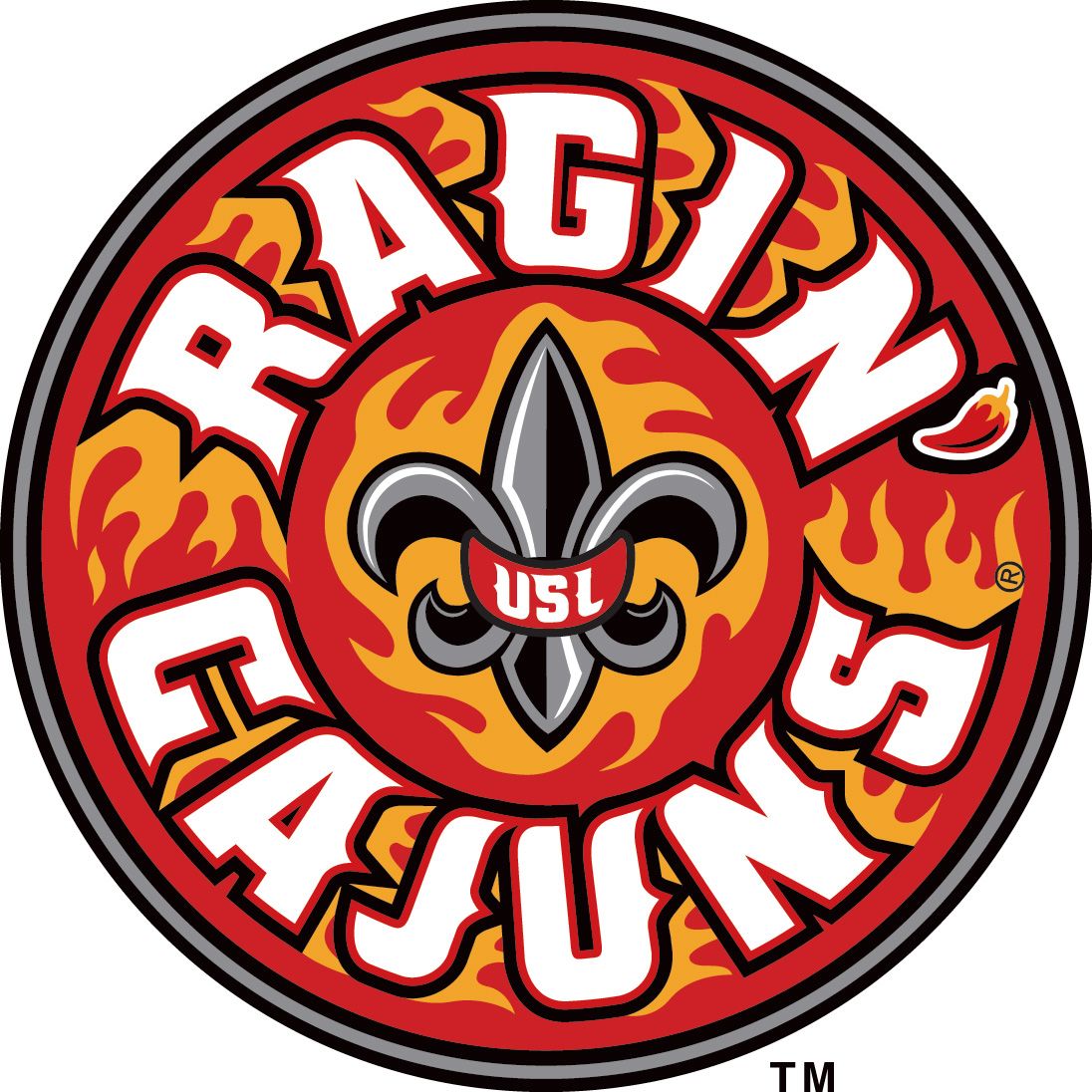
1996
RAGIN' CAJUNS WAS FEDERALLY TRADEMARKED.
A new athletic logo was adopted by USL in 1998.
1999
USL became the
UNIVERSITY OF LOUISIANA AT LAFAYETTE.
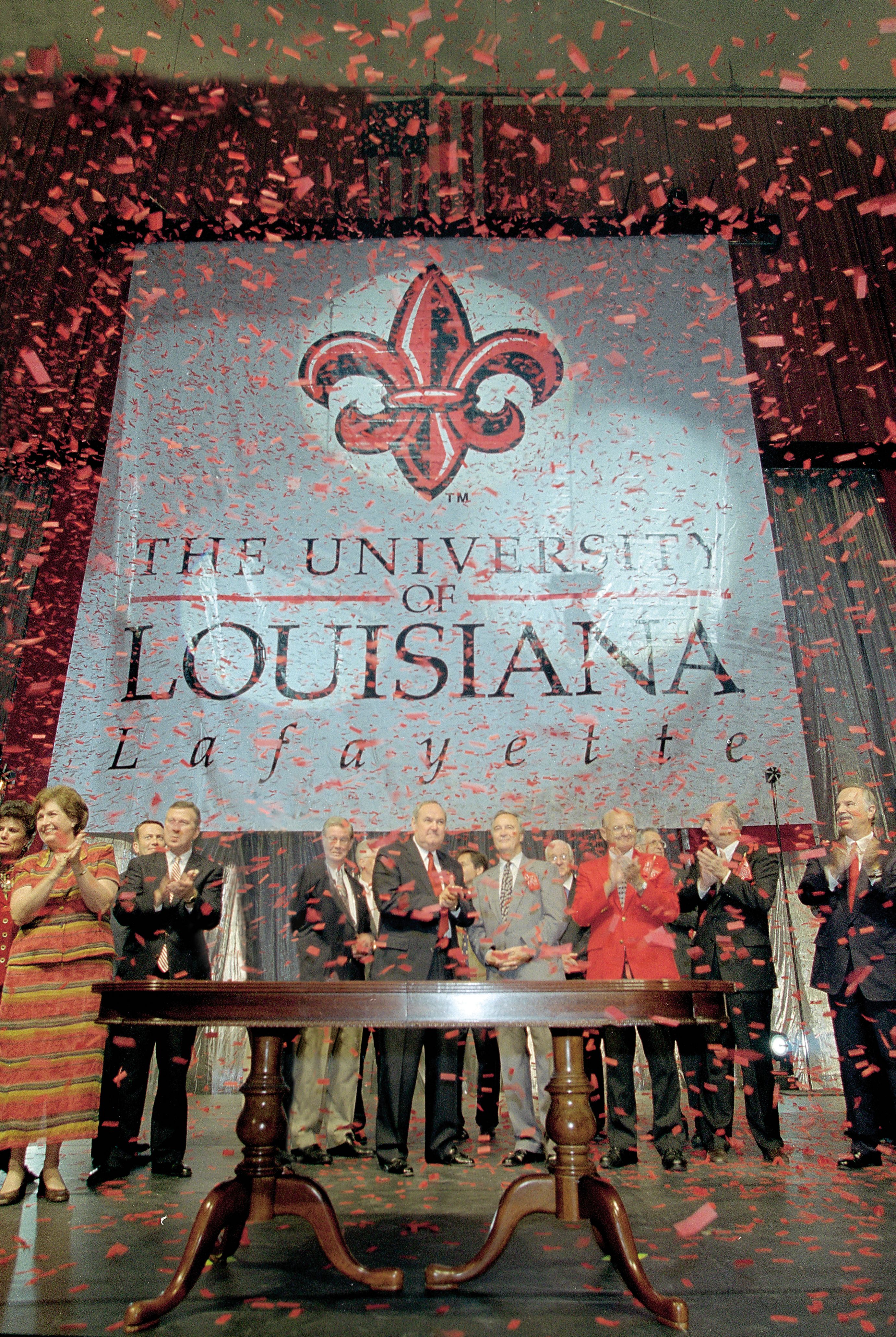
"WE HAVE SIMPLY OUTGROWN THAT OLD SHELL...AND THIS NEW NAME REFLECTS HOW BIG WE'VE GROWN."
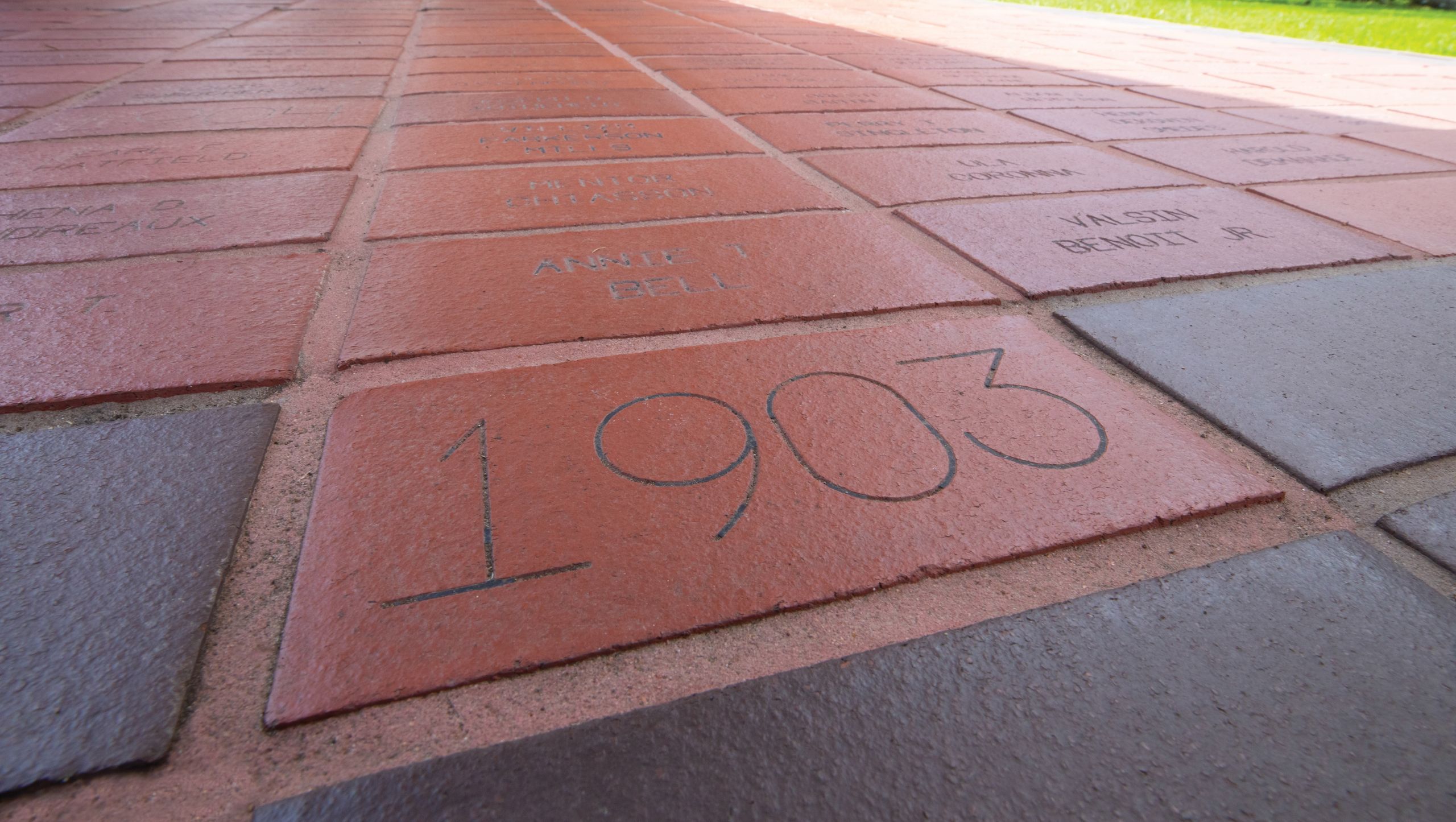
The first bricks on the distinctive — and now iconic — Walk of Honor were laid in 1990. It is paved with bricks bearing the names of graduates from SLII, SLI, USL and UL Lafayette.
The first bricks on the distinctive — and now iconic — Walk of Honor were laid in 1990. It is paved with bricks bearing the names of graduates from SLII, SLI, USL and UL Lafayette.
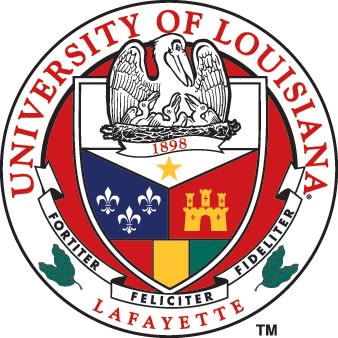
While maintaining design elements from the original seal created in 1926, the new University of Louisiana at Lafayette crest included portions of the Acadian and Creole flags, incorporated red, gold and green stripes to represent West African heritage and redefined live oak tree leaves.

In 2005, the Pride of Acadiana marched in Macy's Thanksgiving Day Parade. The band made a second appearance in 2012.
In 2005, the Pride of Acadiana marched in Macy's Thanksgiving Day Parade. The band made a second appearance in 2012.
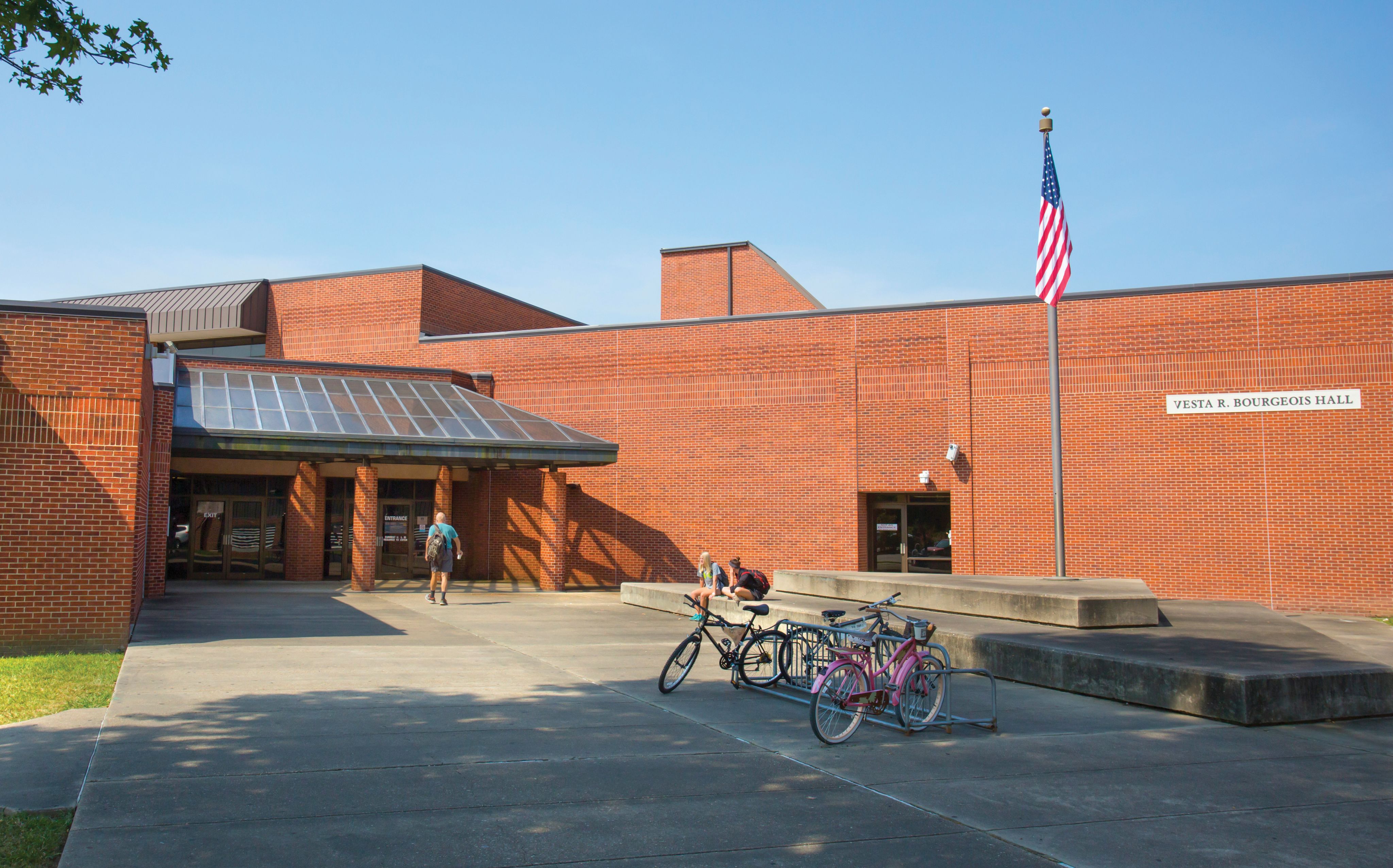
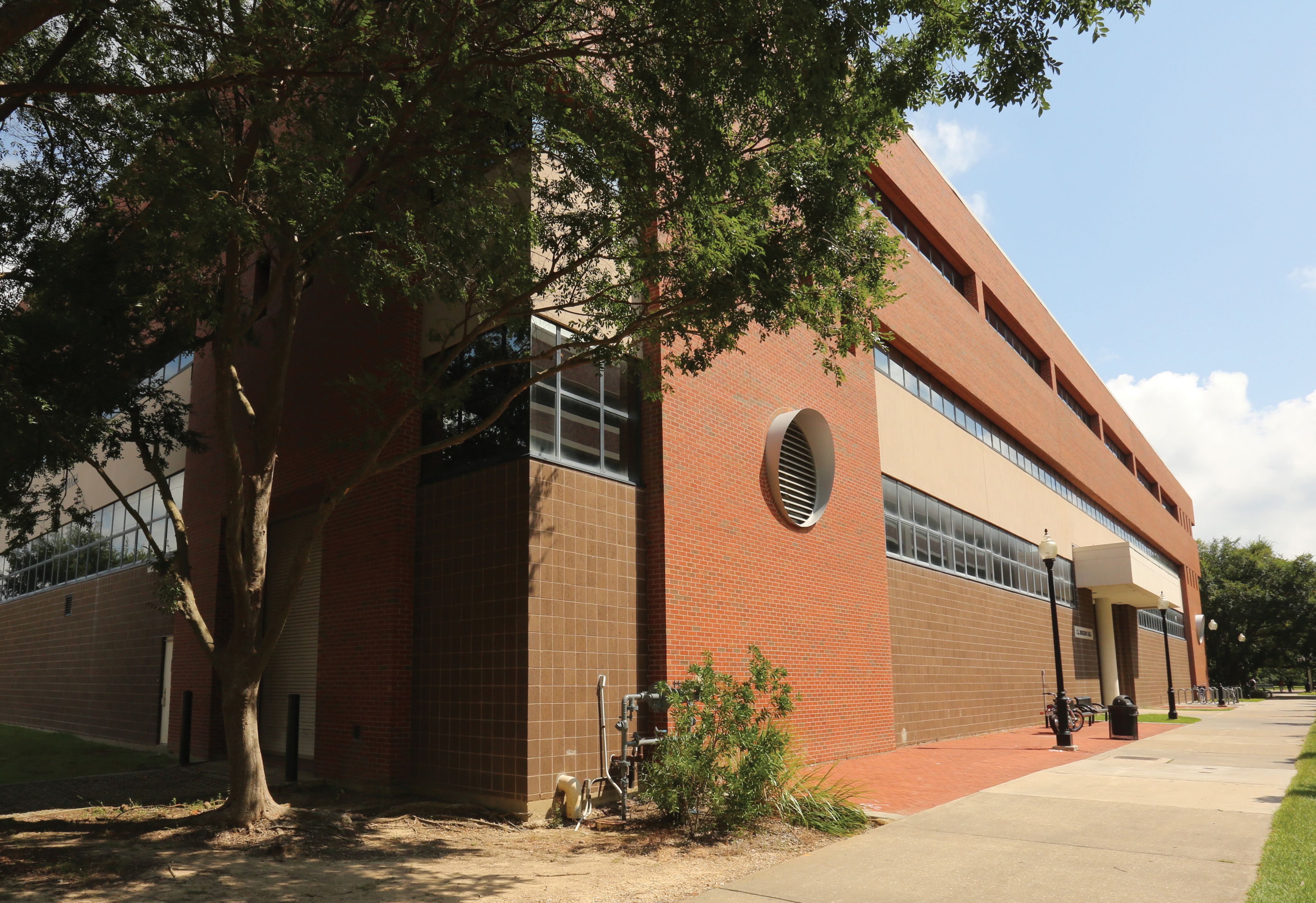
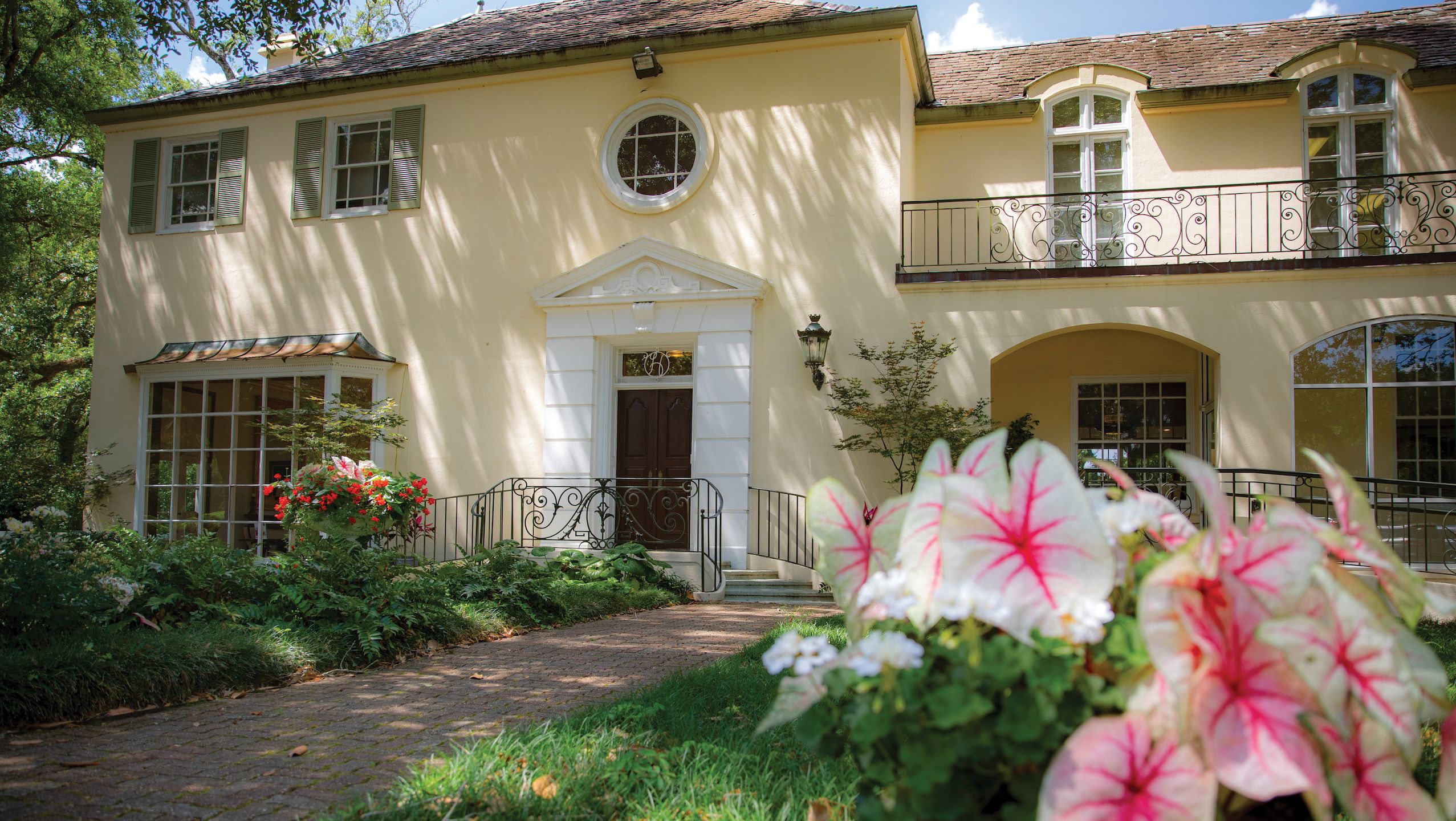
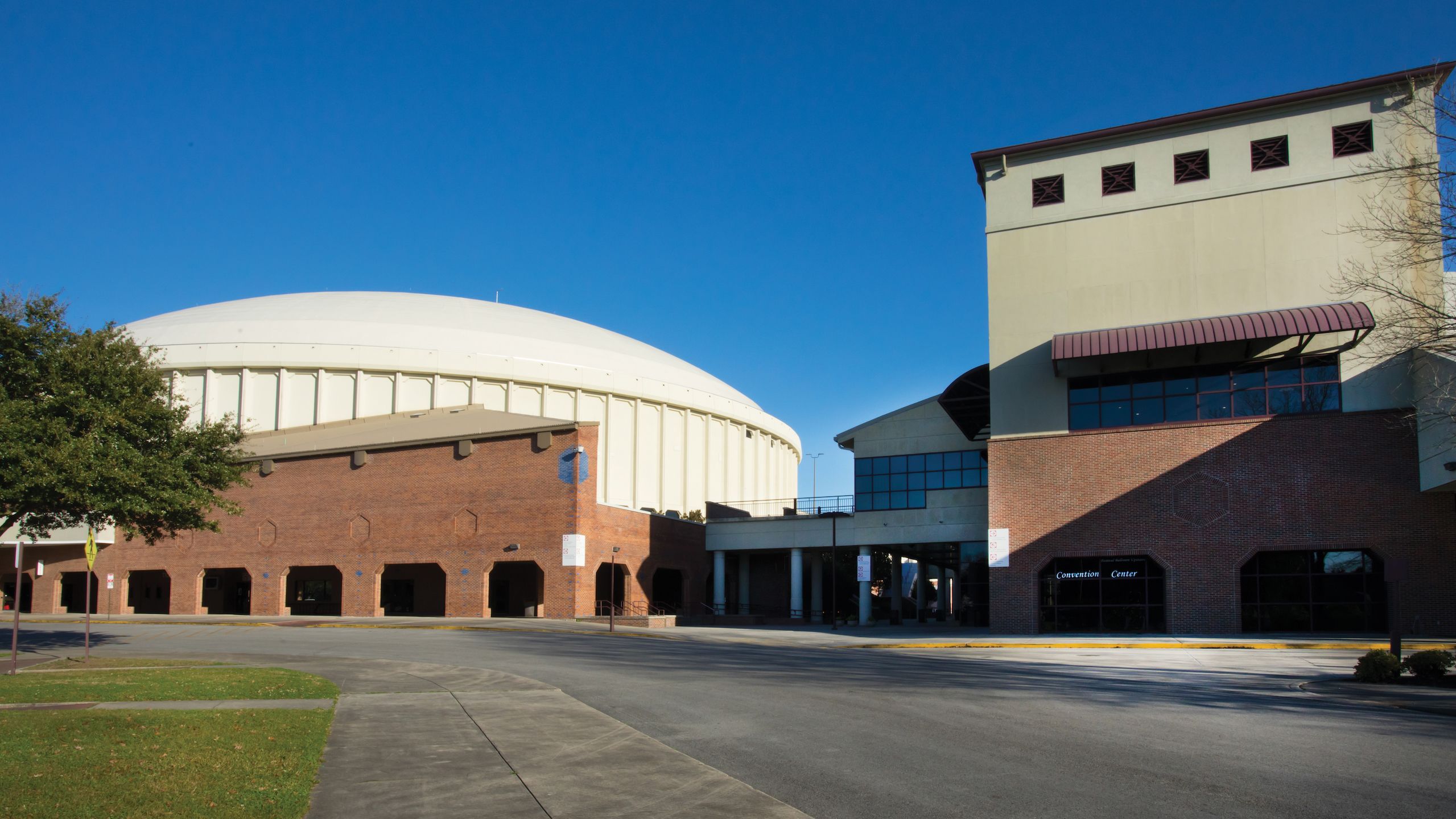
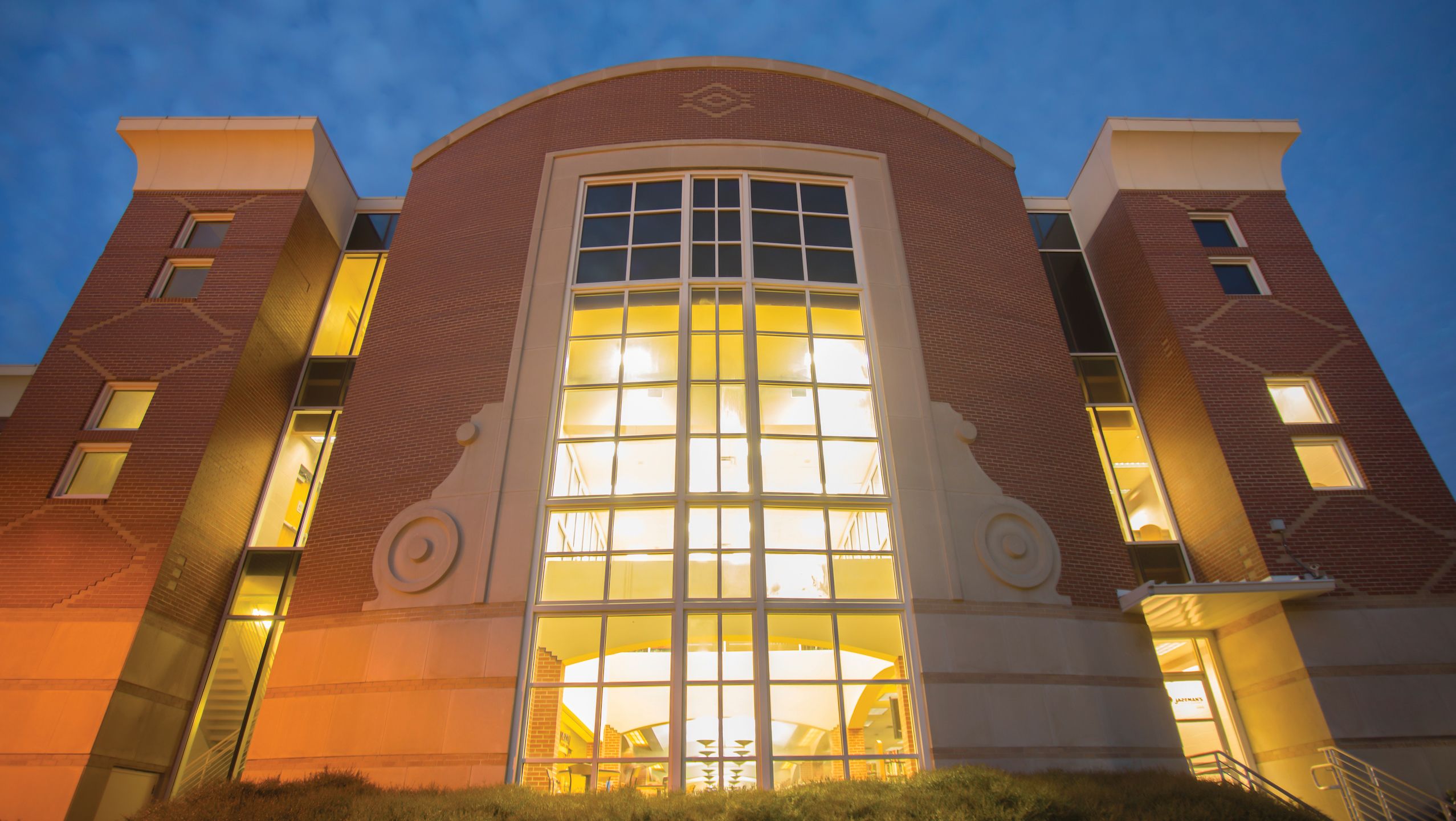
Construction & Acquisitions
Bourgeois Hall - 1986
Rougeou Hall - 1988
Alumni House - Acquired 1991
In 1990, the University announced plans to construct a convention center next to the Cajundome.
Edith Garland Dupré Library underwent extensive renovations in the late 1990s.

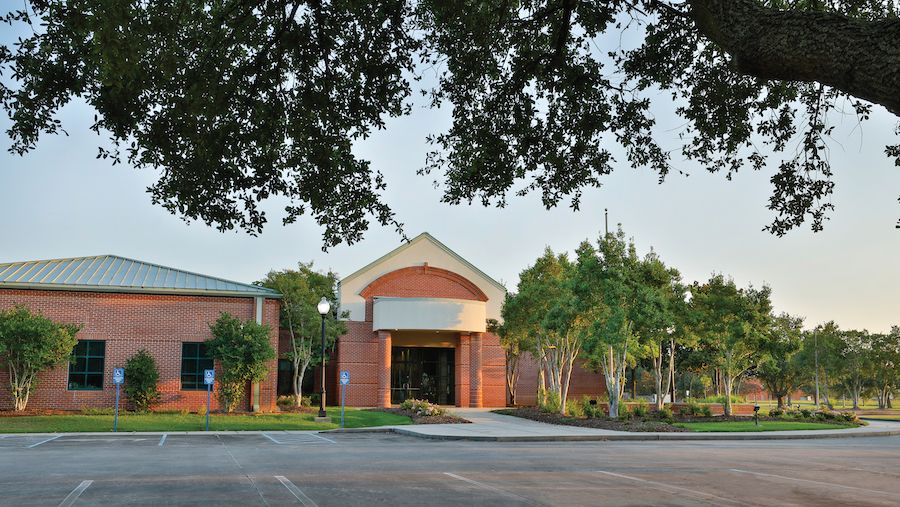
In 1997, the University became one of four NASA Regional Application Centers in the nation. Partners in government and industry use the satellite data it collects.
In 1997, the University became one of four NASA Regional Application Centers in the nation. Partners in government and industry use the satellite data it collects.
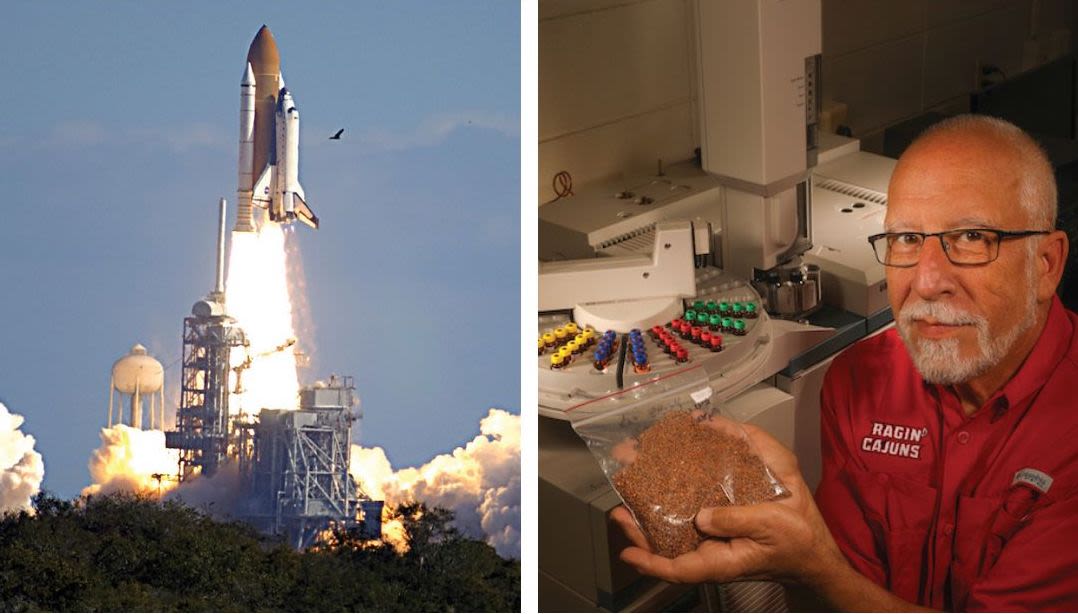
Dr. Karl Hasenstein's research was destroyed in the 2003 explosion of Space Shuttle Columbia. In 2020, the biologist sent radish seeds to the International Space Station to test their viability in a zero-gravity environment.
Dr. Karl Hasenstein's research was destroyed in the 2003 explosion of Space Shuttle Columbia. In 2020, the biologist sent radish seeds to the International Space Station to test their viability in a zero-gravity environment.
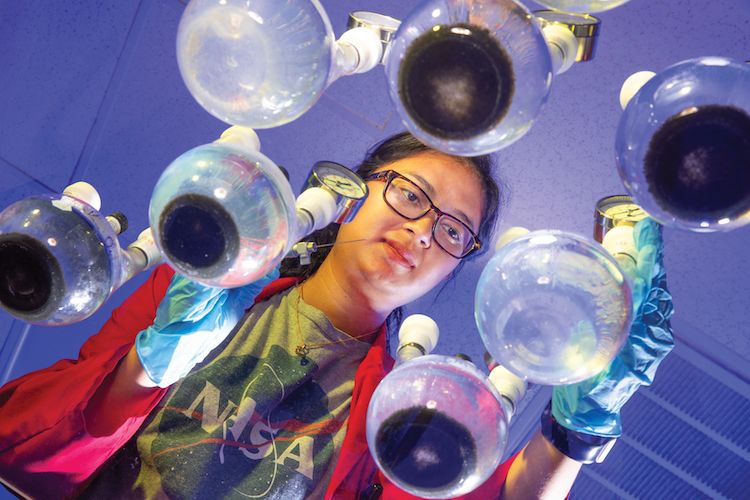
University researchers collaborated with NASA to build a biorefinery system to supply water and air for a potential human colony on Mars.
University researchers collaborated with NASA to build a biorefinery system to supply water and air for a potential human colony on Mars.
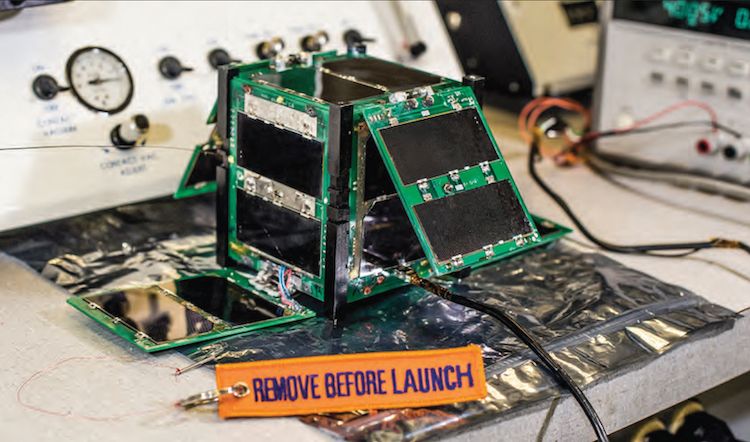
The first CAPE satellite launched in collaboration with NASA. UL Lafayette is the first Louisiana university whose students designed, built and launched a satellite.
The first CAPE satellite launched in collaboration with NASA. UL Lafayette is the first Louisiana university whose students designed, built and launched a satellite.
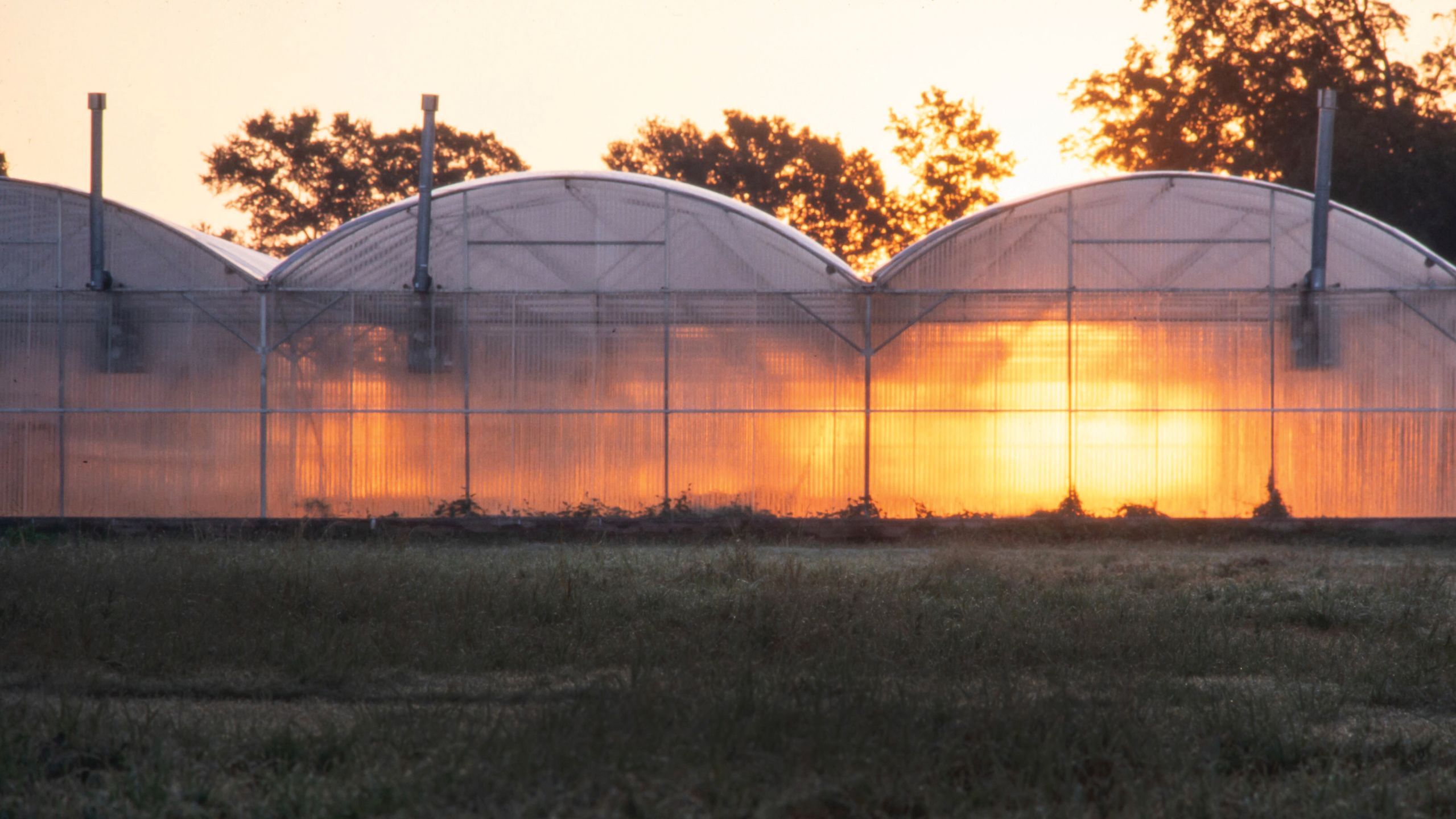
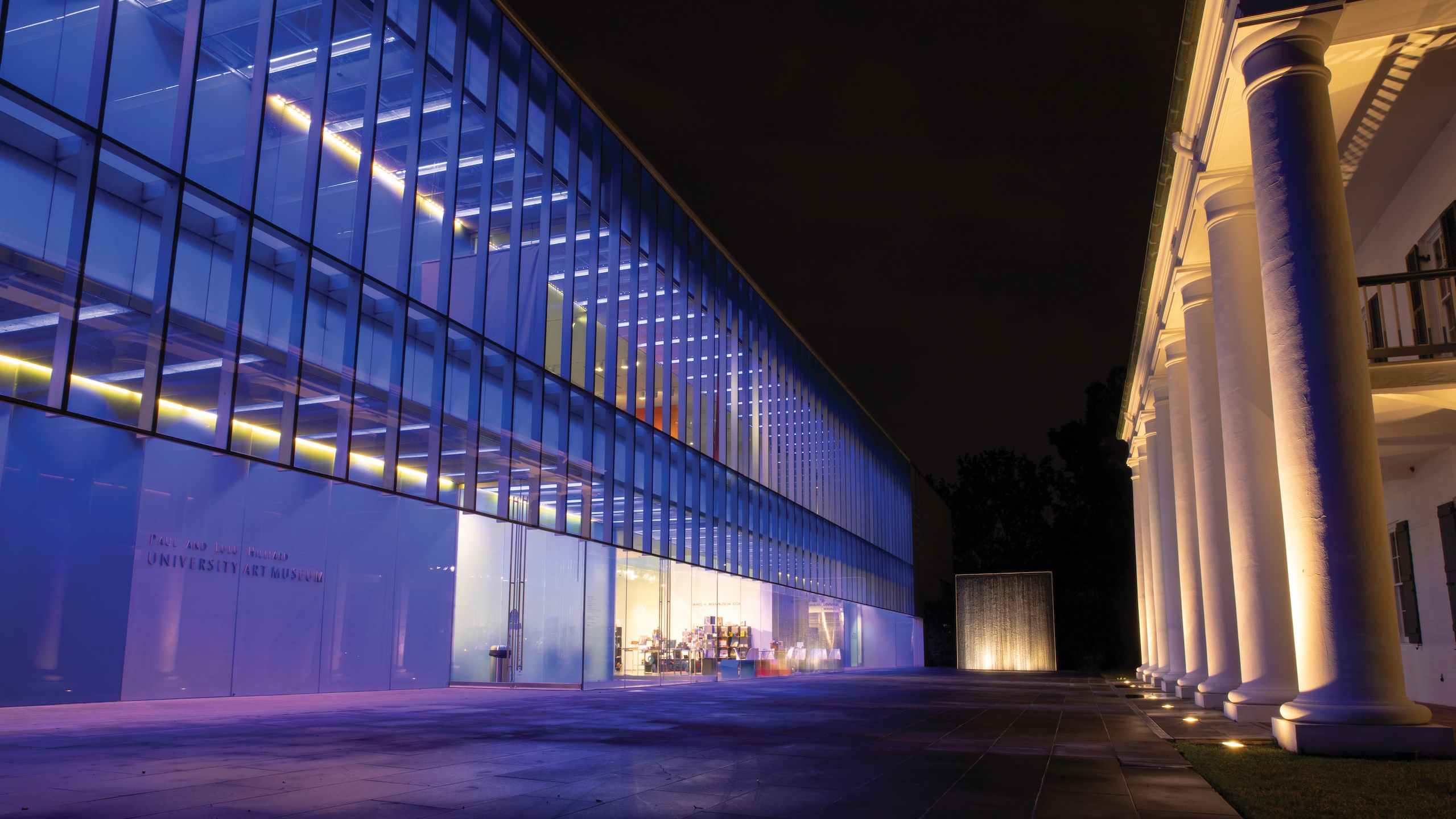
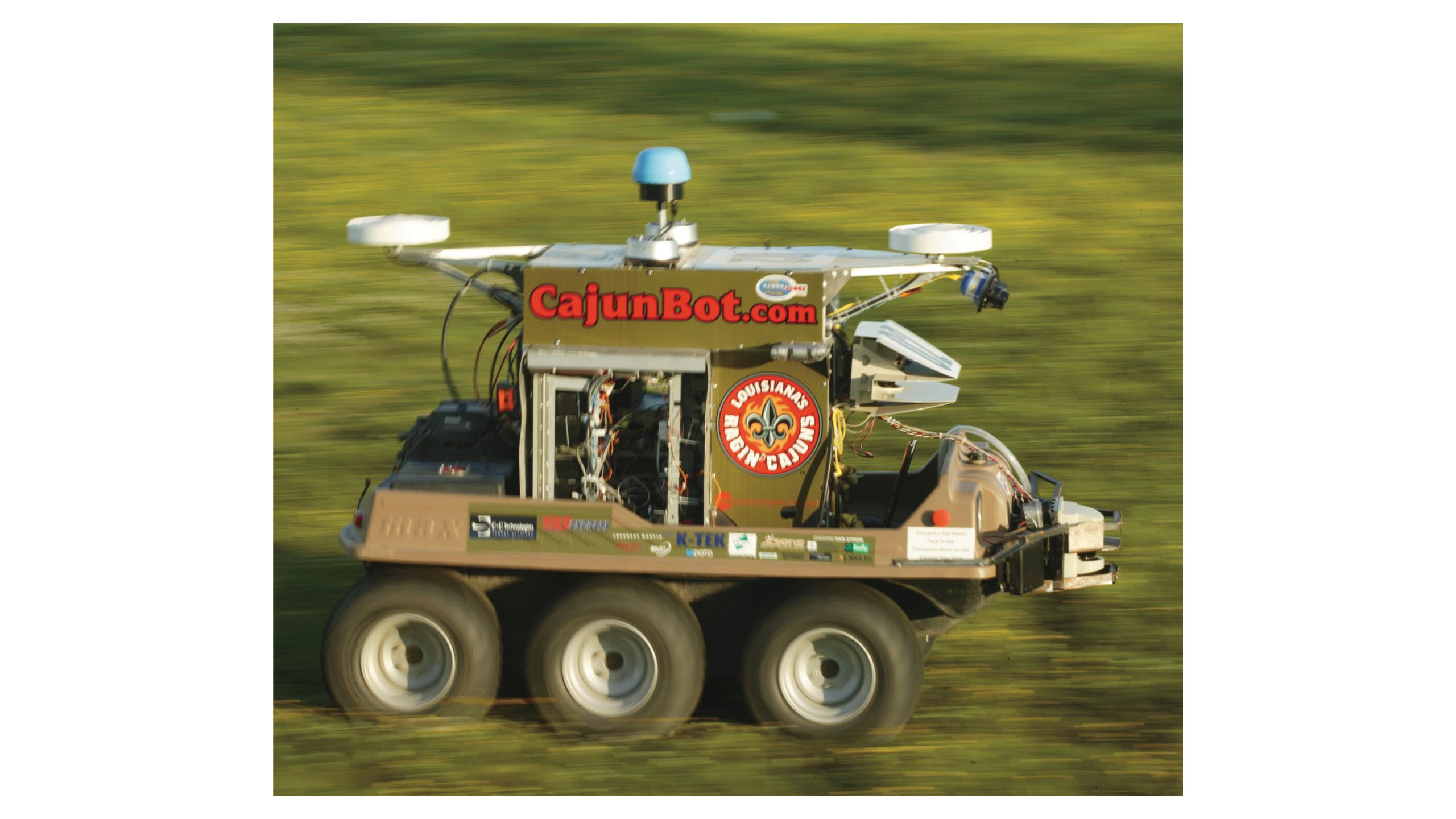
In 1996, USL received what was then the largest federal grant in University history — $10 million to establish the Energy and Environmental Application Program. In the late 1990s, it also began to develop its Center for Ecology and Environmental Technology.
In 2004, the University Art Museum moved into a new home and was rechristened. The Hilliard Art Museum encompasses 11,000 square feet of galleries and is the largest exhibition space between Houston and New Orleans. In 2022, it earned accreditation from the American Alliance of Museums.
CajunBot — an autonomous vehicle developed by students for DARPA Grand Challenge — drew national media attention to the University. It competed in the 2004, 2005 and 2007 contests.
2008
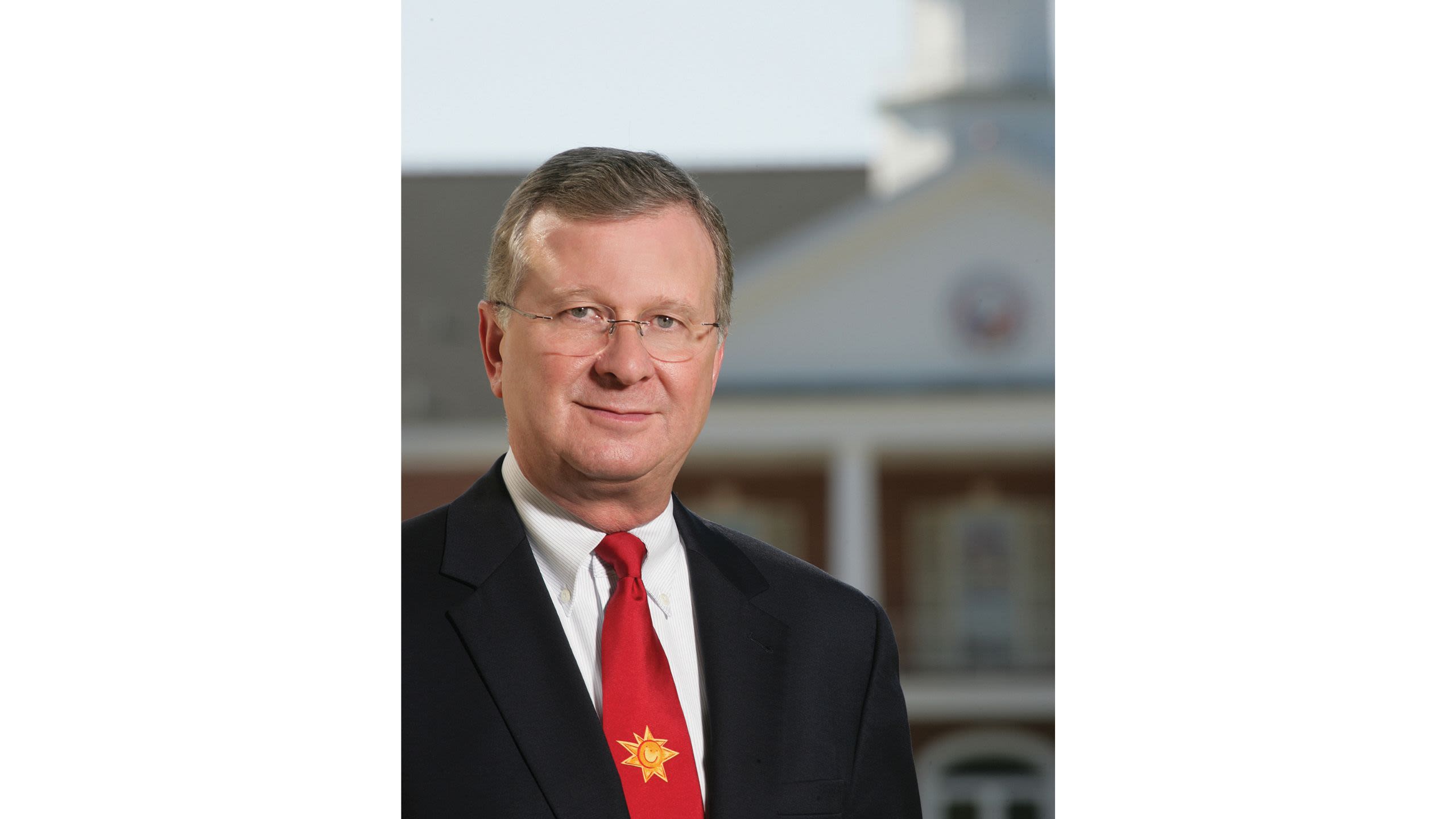
Dr. E. Joseph Savoie became the University's sixth president.
"...(many people) did their part to secure a brighter future for this University and the people that it serves. But now it's our turn. We are now the custodians of the promise, as it has been passed on to us."
2009
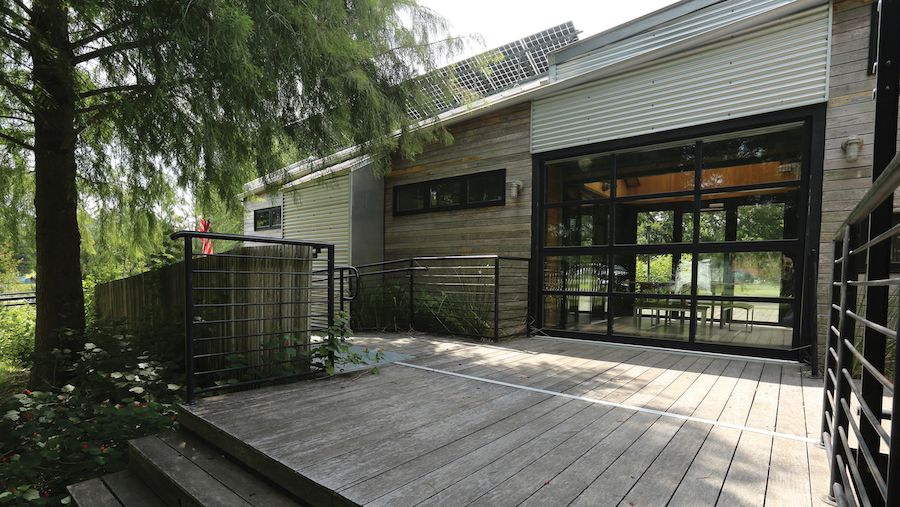
Students in the School of Architecture and Design and the College of Engineering competed in the U.S. Department of Energy's Solar Decathlon with the BeauSoleil Solar House.
Students in the School of Architecture and Design and the College of Engineering competed in the U.S. Department of Energy's Solar Decathlon with the BeauSoleil Solar House.
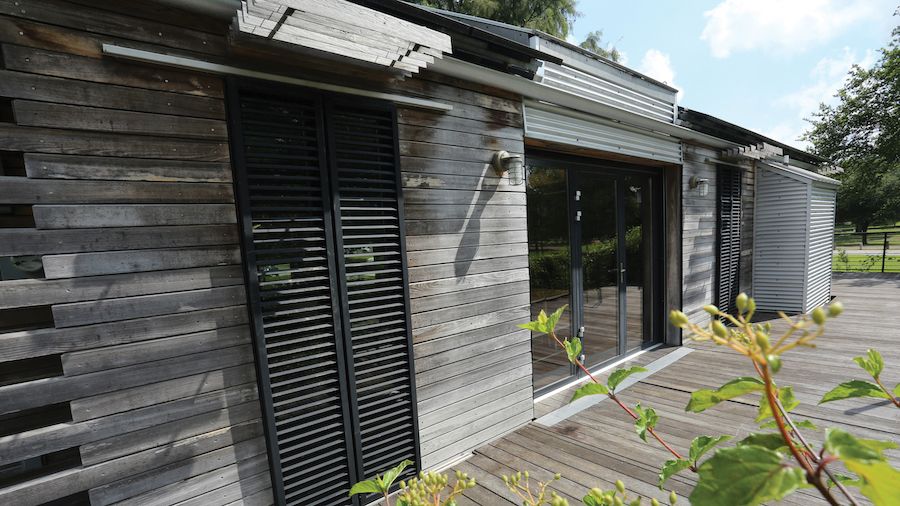
Powered completely by solar energy, it earned first place in the People's Choice and Market Viability competition.
Powered completely by solar energy, it earned first place in the People's Choice and Market Viability competition.
Keepers of the Culture
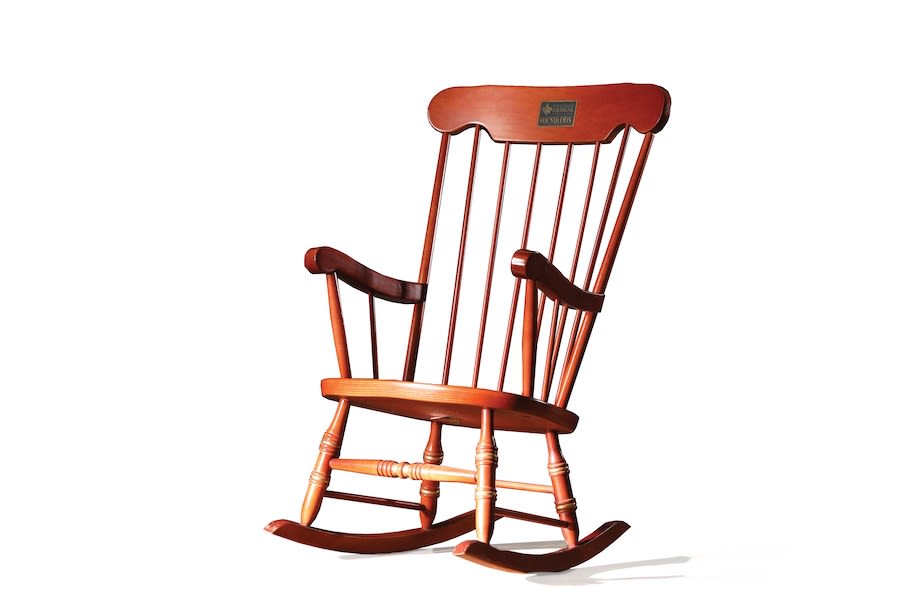
The Dr. Tommy Comeaux Endowed Chair in Traditional Music was established in 2010 and resulted in the launch of the University's Traditional Music program. It is one of a handful of such programs in the nation.
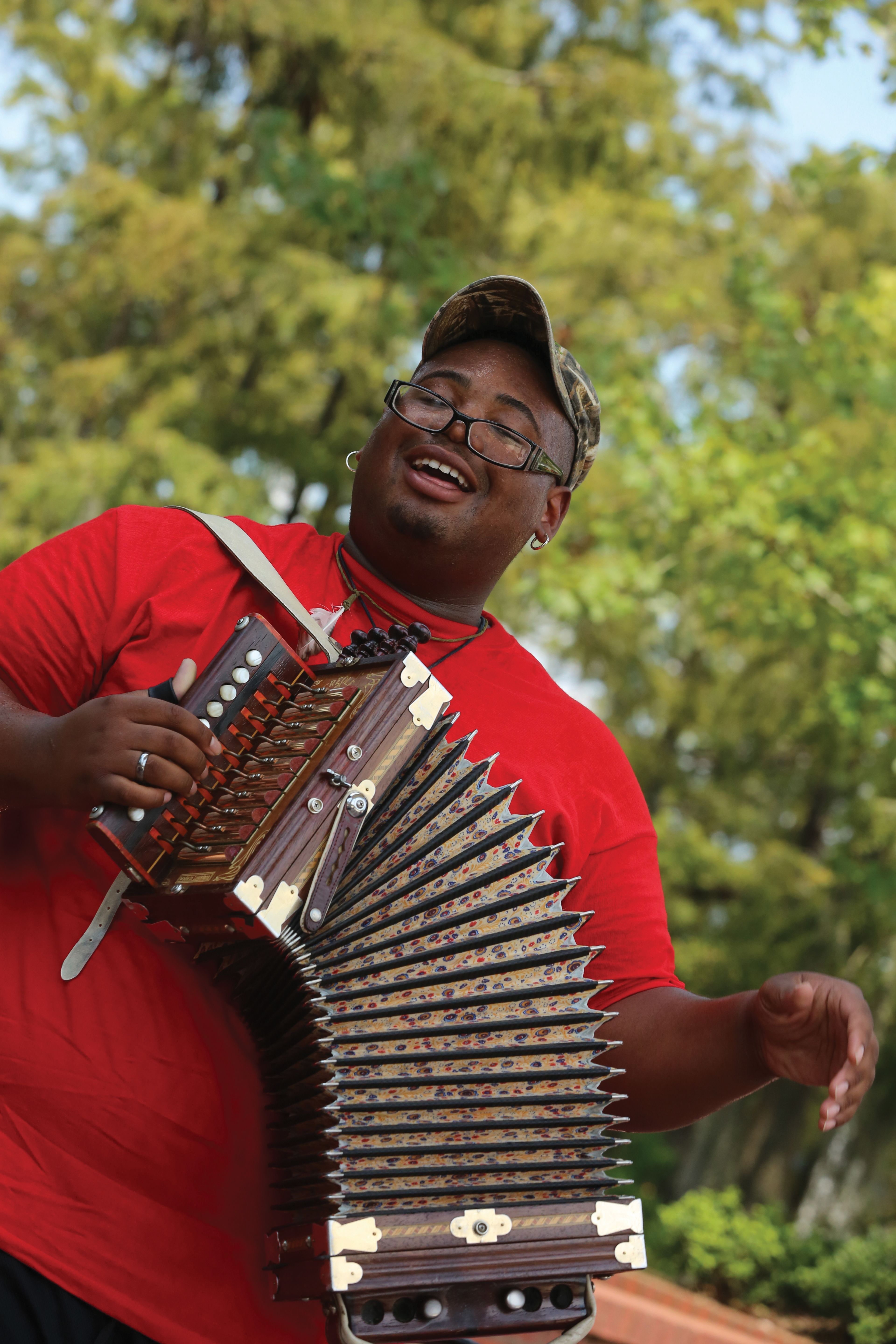
2009
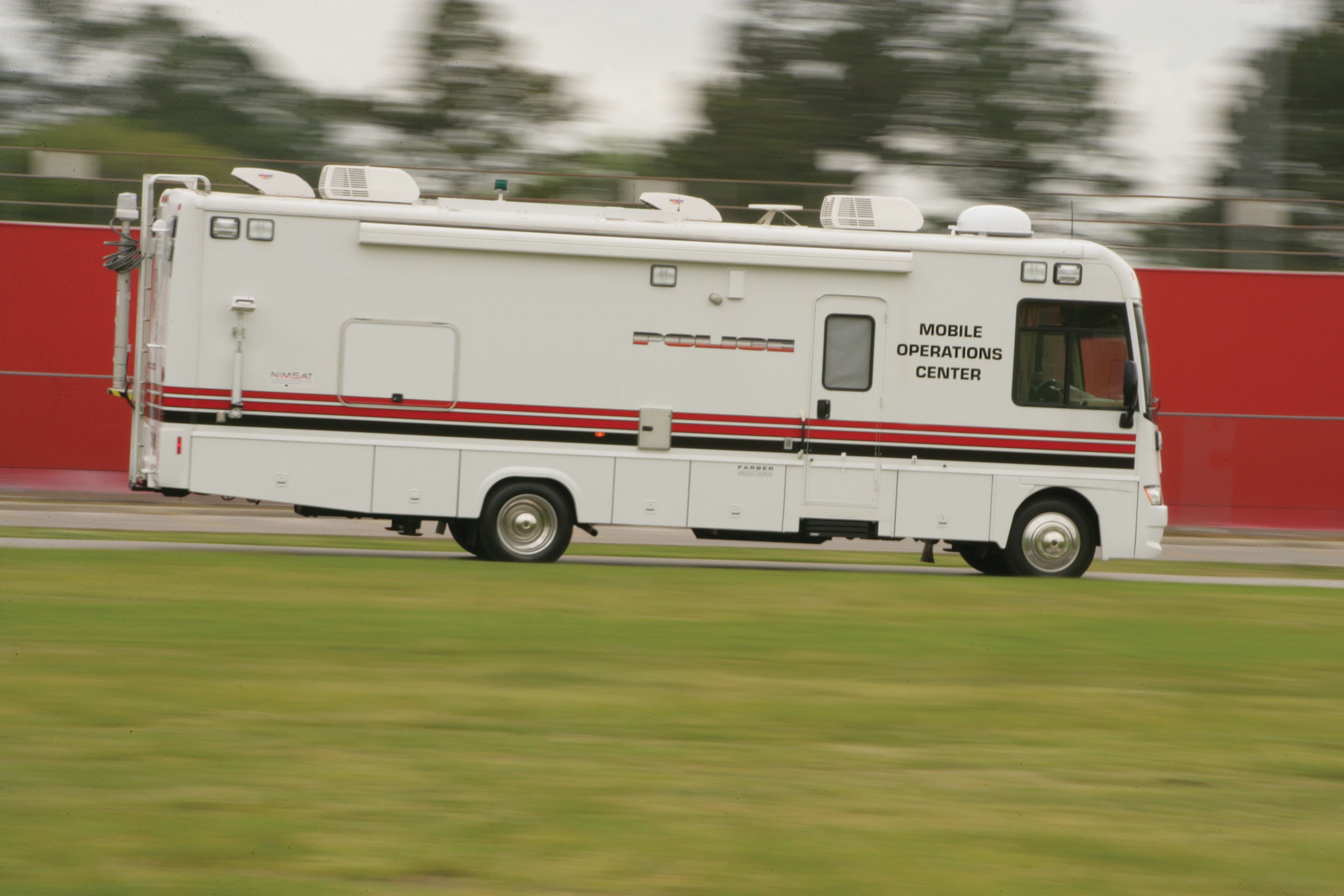
2009
The National Incident Management System and Advanced Technologies Institute was founded. Its focus: enhancing disaster responses.
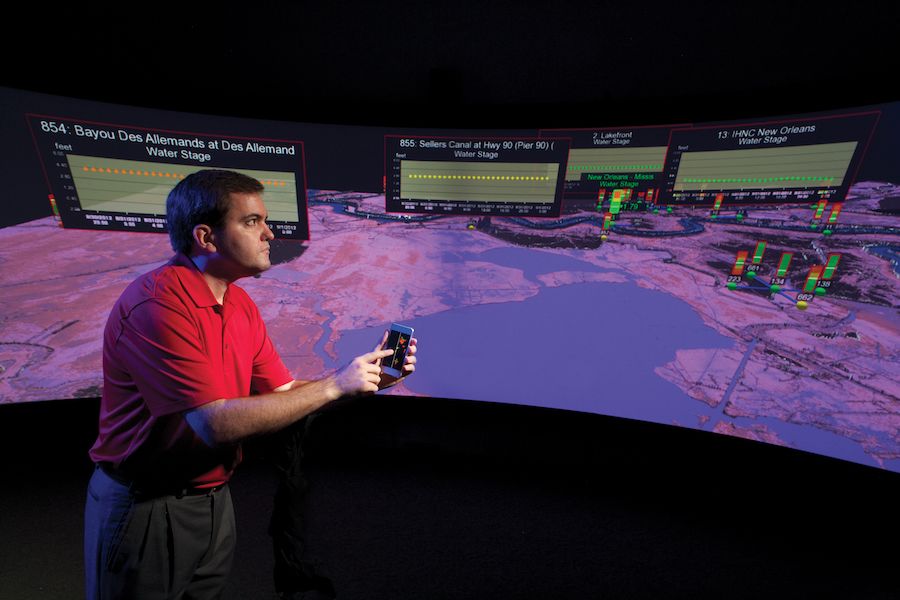
2012
The Center for Visual and Decision Informatics was founded. It collaborates with government, industry and academia.
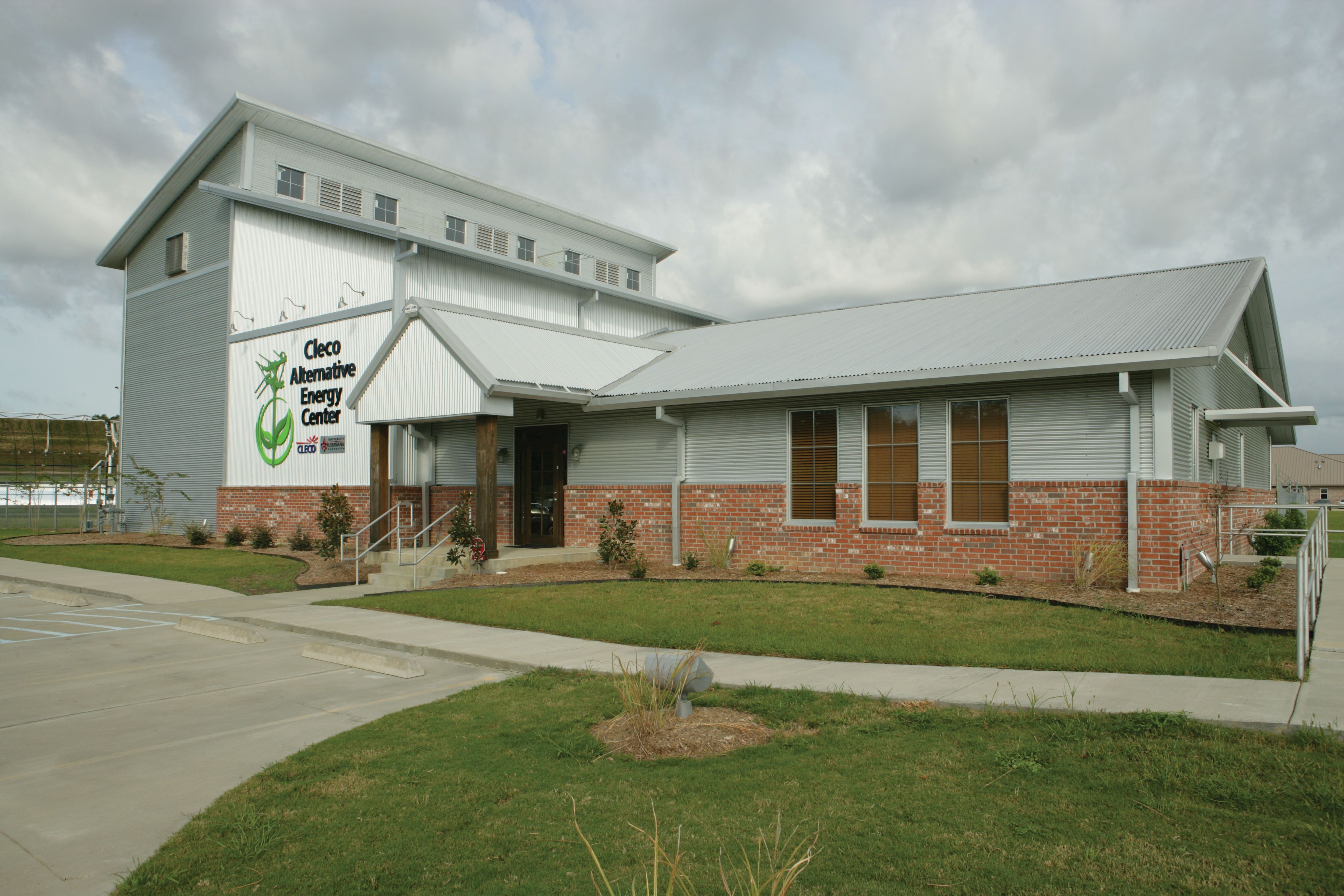
2013
The Cleco Alternative Energy Center opened in Crowley, La. It investigates ways to provide clean, affordable energy to homes and businesses.

2018
The PART Laboratory opened. UL Lafayette is the state's only university that can examine solar technology both outside and in controlled environments.
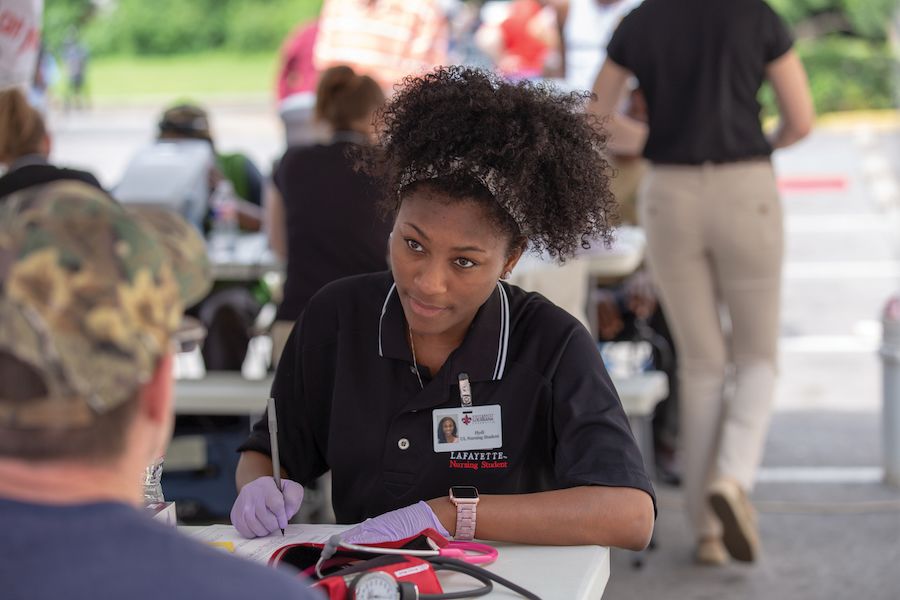
SERVING OUR COMMUNITY to make a difference
Nursing students provided medical screenings to the region's vulnerable populations as part of their coursework. Students perform thousands of hours of community service each year.
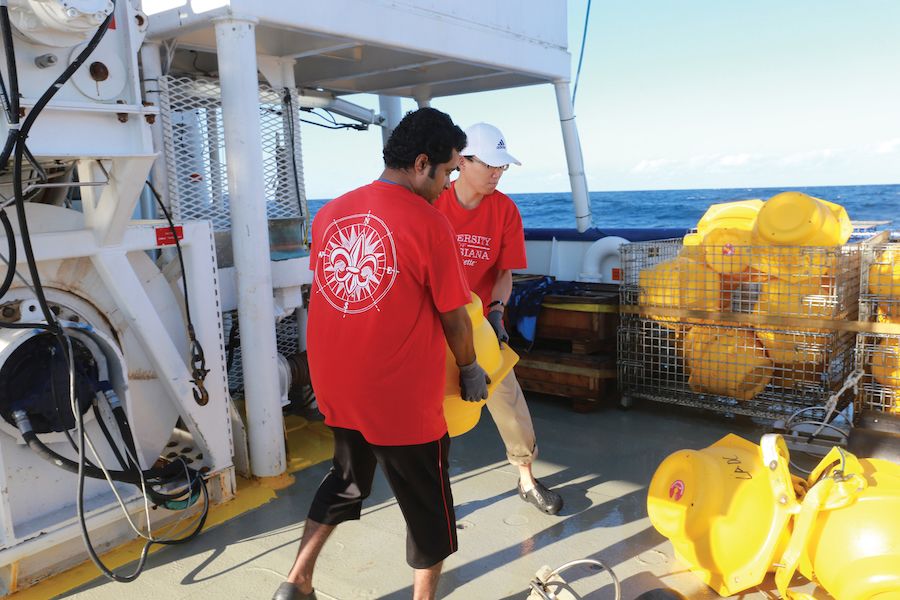
SERVING OUR STATE during times of disaster
Following the 2010 Deepwater Horizon explosion, researchers studied the oil spill's effects on the Gulf of Mexico's whale populations. In August 2016, the University responded to historic flooding. Donations were supplied to students in need and lost diplomas were replaced for free.
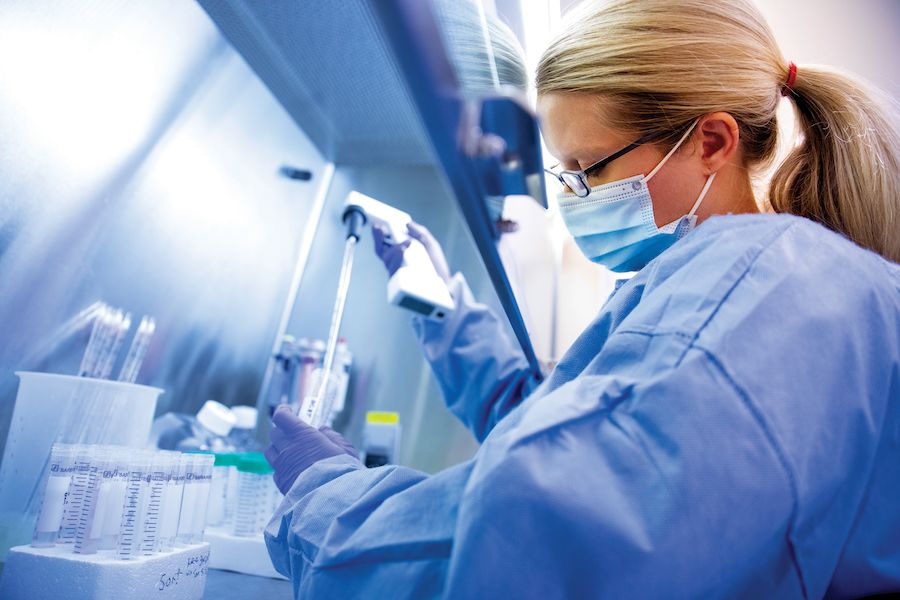
SERVING OUR WORLD during times of crisis
The New Iberia Research Center, the nation's largest academically affiliated nonhuman primate center, played a critical role in the development of the world's first widely available COVID-19 vaccine.
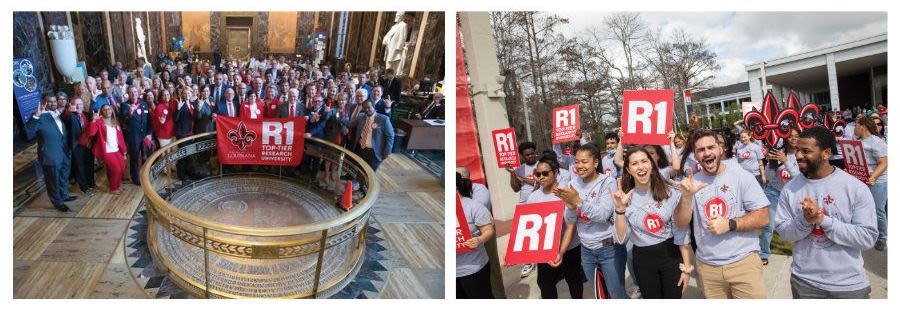
UL LAFAYETTE EARNED CARNEGIE'S R1 DESIGNATION IN 2021, PLACING IT AMONG THE TOP 3% OF PUBLIC AND PRIVATE RESEARCH COLLEGES AND UNIVERSITIES IN THE U.S.
SECURING A BRIGHTER FUTURE
As it looks ahead to its future, the University has positioned itself for growth and success through construction and renovation projects. Among the plans: new classroom buildings for engineering and sciences. In addition, the University is working to transform the former National Marine Fisheries Service Building in University Research Park into a lab school.

Engineering Classroom Building
Engineering Classroom Building
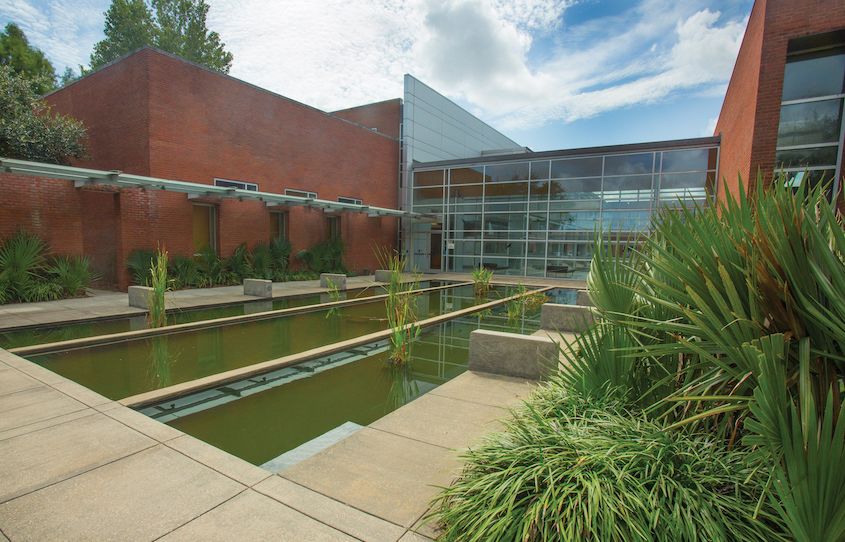
Lab School
Lab School
2024
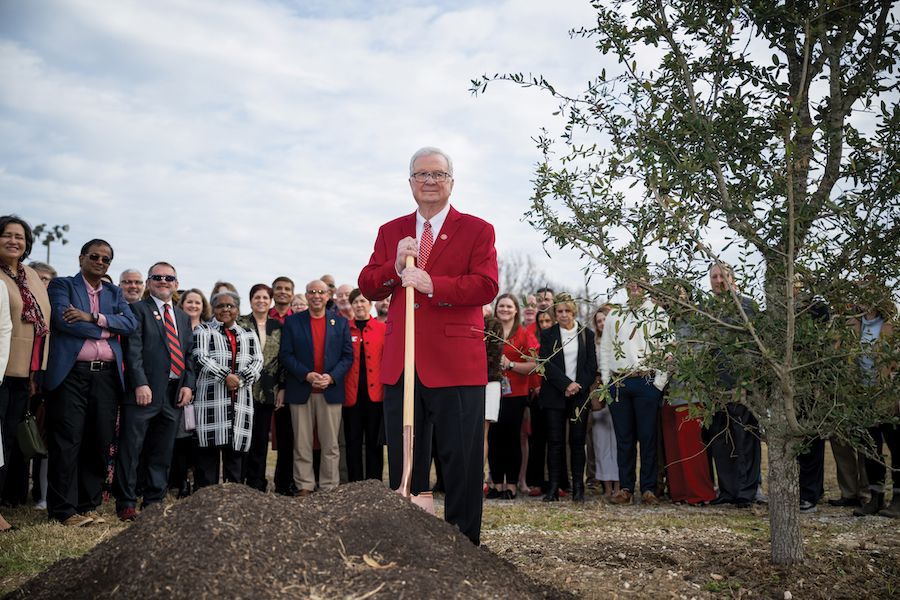
On Jan. 1, 2024, the University celebrated its 125th anniversary by planting the first new live oaks on the Health Sciences Campus that opened the previous fall. The trees are descendants of the original Century Oaks planted by founding President Dr. Edwin Stephens on Jan. 1, 1901
"The tenets of service, vision and leadership are as much a part of our history as sugarcane fields and oak trees. They are the threads that tie the beginning of our story to the present day. WE INHERITED THEM FROM THOSE WHO CAME BEFORE. AND WE WILL LEAVE THEM FOR THOSE WHO COME AFTER."
